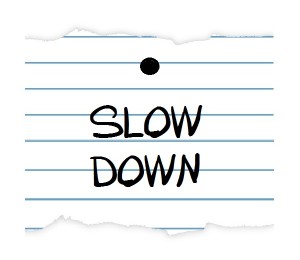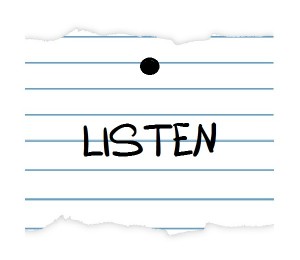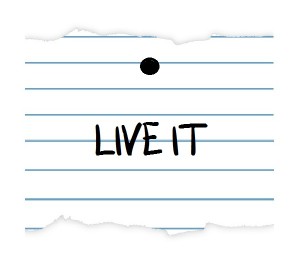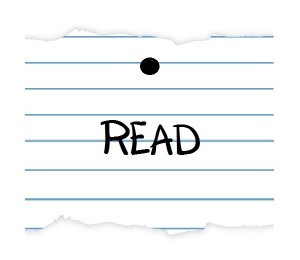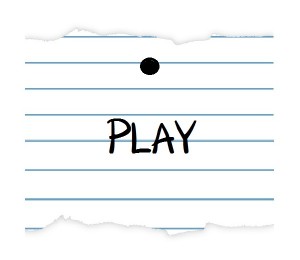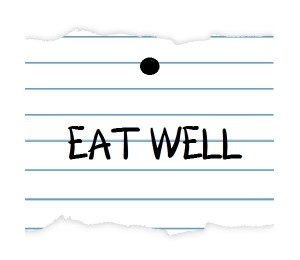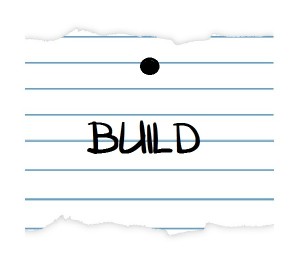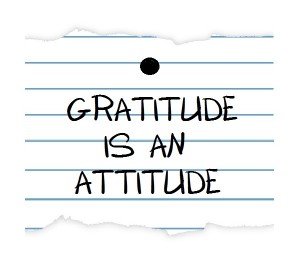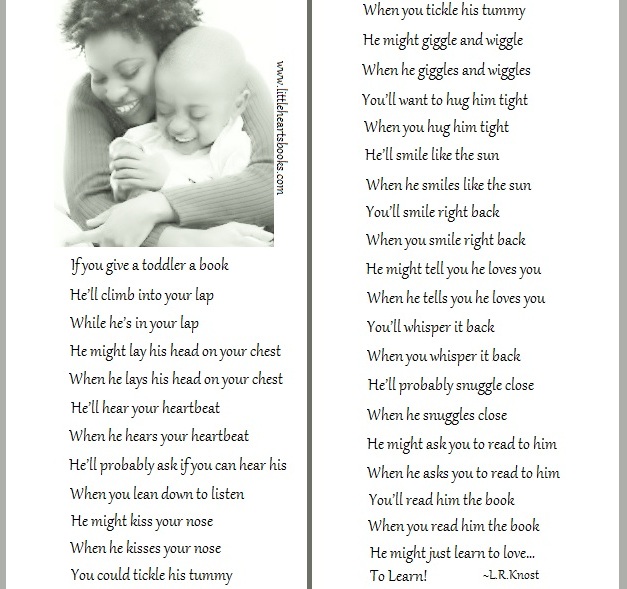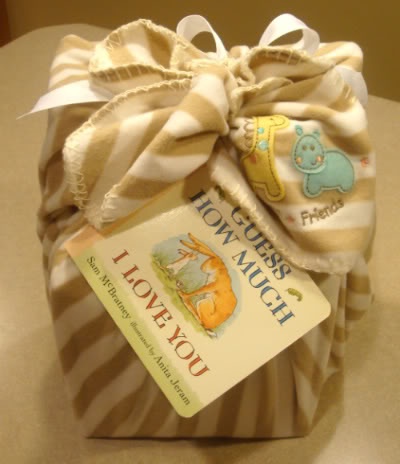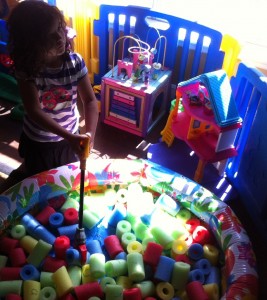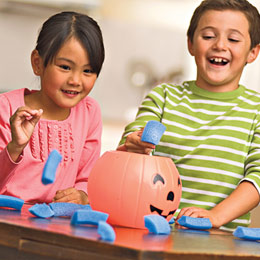A Mother’s Day Wish
[By L.R.Knost, author Two Thousand Kisses a Day: Gentle Parenting Through the Ages and Stages now available on Amazon]
A Mother’s Day wish for moms who change the world everyday because they are the world to a little heart ♥
Related posts:
11 Ways to Overcome the Dreary Weary Mama Blues
7 Parenting Tips for Working from Home with Young Children
20 Parent Savvy Pinterest People to Follow
Practical, Gentle, Effective Discipline
200 Ways to Bless Your Children with a Happy Childhood
10 Ways to Play with your Children when Play is the Last Thing on your Mind
12 Tips for Gently Parenting Your Adult Children (Hint: It starts when they’re newborns!)
 Award-winnning author, L.R.Knost, is the founder and director of the children's rights advocacy and family consulting group, Little Hearts/Gentle Parenting Resources, and Editor-in-Chief of Holistic Parenting Magazine. Books by L.R.Knost include Whispers Through Time: Communication Through the Ages and Stages of Childhood ; Two Thousand Kisses a Day: Gentle Parenting Through the Ages and Stages ; The Gentle Parent: Positive, Practical, Effective Discipline ; and Jesus, the Gentle Parent: Gentle Christian Parenting the first four books in the Little Hearts Handbook gentle parenting series, and children’s picture books Petey’s Listening Ears and the soon-to-be-released Grumpykins series.
Award-winnning author, L.R.Knost, is the founder and director of the children's rights advocacy and family consulting group, Little Hearts/Gentle Parenting Resources, and Editor-in-Chief of Holistic Parenting Magazine. Books by L.R.Knost include Whispers Through Time: Communication Through the Ages and Stages of Childhood ; Two Thousand Kisses a Day: Gentle Parenting Through the Ages and Stages ; The Gentle Parent: Positive, Practical, Effective Discipline ; and Jesus, the Gentle Parent: Gentle Christian Parenting the first four books in the Little Hearts Handbook gentle parenting series, and children’s picture books Petey’s Listening Ears and the soon-to-be-released Grumpykins series.
Making Moving Easier for Children
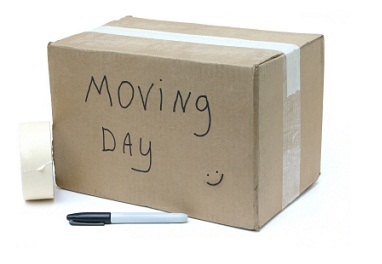
[By L.R.Knost, author of Two Thousand Kisses a Day: Gentle Parenting Through the Ages and Stages, Whispers Through Time: Communication Through the Ages and Stages of Childhood, and The Gentle Parent: Positive, Practical, Effective Discipline available on Amazon and through other major retailers.]
Transitions are hard on everyone, and when the whole family is affected such as in a big move to a new home, parents often get so caught up in the logistics of the move and their own stresses that helping their children cope with the move can get lost in the chaos. Here are a few things you can do to ease the transition for your little people without adding more stress to yourself:
- With small children, it can be tempting to build up the move beforehand to make it seem like an exciting adventure, but over excitement can be just as stressful and overwhelming to small children (and big ones!) as anxiety can be. Instead, try to keep things as low-key as possible. Wait until it’s close to time to actually start packing before discussing the move with your little one, and then use simple, age-appropriate language to tell them that you are all moving together (emphasize together so there’s no misunderstanding!) to a new house.
- Show them pictures of the new house, the new yard, their new room, the kitchen, bathroom, living room, etc. Ask them where they’d like to put their bed and draw it on the picture with a marker. Do the same with their toy box, toothbrush, high chair, sandbox, and anything they ask about to reassure them that their things are coming along on the move and to begin to familiarize them with their new space. Give them a marker and another set of pictures of the new house to draw on so they can begin to make it their own.
- Put boxes in their room a few days before the move and let them begin to pack their own things in their own time. You can go back and repack the boxes when they’re asleep or playing elsewhere if needed. Giving them some control over the move will help tremendously with their feelings of being taken away from their familiar home.
- Keep a few familiar toys out for the actual move to help your little one see that their things are coming with them. If possible, let them help with loading the boxes from their room onto the truck, too. Knowing that their toys and clothes and bed are coming with them on the move is very comforting.
- Pack a travel bag with new toys and activities and healthy, familiar snacks for moving day. The novelty of the new toys will help them to travel more happily, and the familiar snacks will keep their tummies settled and hunger at bay making for a calmer trip for all.
- At the new house, unpack your little one’s things first if at all possible so that they can see for themselves that they made the trip and can begin settling in right away. Take the time to play with them, too. It’s amazing how a few minutes of playing together can settle a small child when they’re stressed!
- Don’t be surprised if your little one is clingy and whiney for a few days after the move. After unpacking their things, don’t try to rush to unpack everything else all at once. Give your child all of the time and attention they need to help ease the transition for them.
- Nighttime can be the hardest for children in a new home, so be prepared for lots of cuddling and possibly a night visitor in your bed for a while. Being there for your little one at night is as important as being there for them in the day!
- Involve them in unpacking and putting away everything from kitchen utensils to books to linens to clothes. Children are very tactile, and actually touching all of the places and putting familiar things from their old home away in the new home can help them to begin to feel at home themselves.
- Stick to familiar routines such as bedtime, naptime, etc. But don’t be rigid about schedules. Your little one has been through a huge change and needs extra attention and understanding from their source of comfort and security…you!
- Introduce new things like playgroups, pediatricians, babysitters, churches, etc. slowly, spread out over as long a period of time as possible. The move itself is overwhelming enough in its newness without adding in a ton of other unfamiliar things right away.
- Find some things near your new home that are familiar to your little one from your previous home such as a chain grocery store, toy store, restaurant, etc. Seeing and visiting familiar places is vastly reassuring for small children because they can see for themselves that you can still buy them food and other necessities even though you’ve moved.
Giving your child the reassurance that some things will remain the same even when so many things have changed helps to stabilize and assure them that their needs will still be met and life will still go on in many of the same patterns and routines they are used to. Remaining calm and available for your little one, even in the midst of your own stresses over the move, is key. But take care of yourself, too. Change is hard on everyone, so cut yourself some slack and don’t try to do everything at once. Remember, slow and steady wins the race!
*A mama shared a great idea: “When we moved we made my just-turned-3-year-old son a picture book. It told a story of a little boy who had to move, showed photos of our old house, and told about what things (toys, furniture, etc.) would go to the new house with pictures of the boy’s new room, yard, activities he’d do in the new house, a moving van, boxes, etc. It included emotion pictures, too, and the story talked about how sometimes the boy felt scared/sad/excited/nervous/etc. It went through the whole process til a happy ending with the boy and his family settled into the new house. The boy’s name in the book, of course, was my son’s and the photos were all of his stuff and of the actual house we were moving to. He loved the book. Read it almost everyday, sometimes many times a day when he’d start to stress out. I only forgot one thing. Neither my husband or I thought to explain that our pets would come with us. The first night we slept at the new house, the cats stayed behind so we could get things settled a little first. Big boy made it through two horribly stressful days of hauling stuff to the new house, fighting back the meltdowns, until his little world fell apart that first bedtime in the new place. Two hours of tears later, he finally managed to say that he was sad that we’d never see the cats again. OH! We felt so bad!! A year later he still talks about the move a lot. It is amazing what an impact a change like that makes on a small child!”
Related posts:
Practical, Gentle, Effective Discipline
200 Ways to Bless Your Children with a Happy Childhood
12 Tips for Gently Parenting Your Adult Children (Hint: It starts when they’re newborns!)
Tots to Teens~Communication Through the Ages and Stages
 Award-winnning author, L.R.Knost, is the founder and director of the children's rights advocacy and family consulting group, Little Hearts/Gentle Parenting Resources, and Editor-in-Chief of Holistic Parenting Magazine. Books by L.R.Knost include Whispers Through Time: Communication Through the Ages and Stages of Childhood ; Two Thousand Kisses a Day: Gentle Parenting Through the Ages and Stages ; The Gentle Parent: Positive, Practical, Effective Discipline ; and Jesus, the Gentle Parent: Gentle Christian Parenting the first four books in the Little Hearts Handbook gentle parenting series, and children’s picture books Petey’s Listening Ears and the soon-to-be-released Grumpykins series.
Award-winnning author, L.R.Knost, is the founder and director of the children's rights advocacy and family consulting group, Little Hearts/Gentle Parenting Resources, and Editor-in-Chief of Holistic Parenting Magazine. Books by L.R.Knost include Whispers Through Time: Communication Through the Ages and Stages of Childhood ; Two Thousand Kisses a Day: Gentle Parenting Through the Ages and Stages ; The Gentle Parent: Positive, Practical, Effective Discipline ; and Jesus, the Gentle Parent: Gentle Christian Parenting the first four books in the Little Hearts Handbook gentle parenting series, and children’s picture books Petey’s Listening Ears and the soon-to-be-released Grumpykins series.
11 Tips to Beat the Dreary Weary Mama Blues
 [Portions reprinted from Whispers Through Time: Communication Through the Ages and Stages of Childhood by L.R.Knost. Two Thousand Kisses a Day: Gentle Parenting Through the Ages and Stages and The Gentle Parent: Positive, Practical, Effective Discipline also available on Amazon and through other major retailers.]
[Portions reprinted from Whispers Through Time: Communication Through the Ages and Stages of Childhood by L.R.Knost. Two Thousand Kisses a Day: Gentle Parenting Through the Ages and Stages and The Gentle Parent: Positive, Practical, Effective Discipline also available on Amazon and through other major retailers.]
Mountains of laundry. Piles of toys. Diapers and dishes and dust. Sticky fingerprints to wipe. Muddy shoeprints to mop. Bills to pay. Appointments to keep. Shopping to do…
The parenting list is endless because ‘done’ doesn’t exist in a world where little ones live and play and grow. But parents are people, too, and we can get overwhelmed at the sheer redundancy of the cycle of life with children if we don’t intentionally take the time to feel the joy of little arms wrapped around our necks and to find something of ourselves in the busyness of daily life. If you’re on the verge of losing the battle of the blues, here are eleven ways to energize, prioritize, and conceptualize your way back to a healthier, happier you!
- Go outside! No joke. Taking your problems and frustrations outside shrinks them down like shrinky-dinks in an oven. When you’ve got the warm sun on your face and you’re watching your little ones tumbling in the green grass and you’re listening to giggles replace their whines, life feels good again.
- Write it down to turn your frown upside-down. Seriously, writing down a list of all the good things in your life in one column and the bad things in another helps to restore a healthy perspective.
- Go to the dark side. No, really, take a good look at the bad things on your list and see what you can do to cross off or minimize some of the things on the bad side. Sometimes just eliminating one sore point or reducing one stressor can make a world of difference!
- It’s okay to have a disposable day. Take one day a week and use paper plates and plastic cups and utensils to give yourself a chance to catch up on those pesky dishes. It’s okay. Really.
- The Earl of Sandwich invites you to dine. Another way to beat the dishes doldrums is to have a sandwich day. Egg sandwiches for breakfast. Cheese sandwiches for lunch. Turkey sandwiches for dinner. And who really needs to have a plate to lay their sandwich on, anyway? A paper towel will do for a plate and a napkin all in one!
- A load a day keeps the mountain away. Doing one load of laundry every day instead of storing it up for a huge ‘laundry day’ once a week is one way to tame a daunting mountain into a doable molehill.
- Spray the stickies away. Little people usually love spray bottles or water guns, so harness that love for some rock ‘em sock ‘em cleaning help. Put a pair of daddy’s white sports socks on little feet and little hands and arm your small ones with a bit of water in a spritzer or water gun, then join them for an all-out blitz on fingerprints, dust bunnies, and jelly smears!
- There can never be too many cooks in the kitchen. The littlest member of the family can be worn in a baby carrier while the cook cooks or the cleaner cleans. For tinies who are a bit bigger, instead of barring them from the kitchen, turn them into little sous chefs and let them measure and sort and stir. If they’re too little for actual cooking, put pots and pans and measuring bowls on the floor with a bit of sudsy water so they can whip up a storm while you’re cooking or cleaning. Afterward, scooch some towels across the floor with your feet for a bit of exercise and a semi-cleaned floor as a bonus!
- And speaking of exercise, get some of that groovy stuff. Doing knee bends while you brush your teeth, lunges while vacuuming and babywearing, and boogying with your children to some funky music while straightening can all contribute to a mood-lifting, age-defying, endorphin-releasing surge of healthy goodness while weaving in some far out fun!
- Daydreamer, dream on. Don’t forget that you’re a one-of-a-kind, never-before-seen, gift-to-the-world, and you’ve got a super-special purpose for being here. Raising your children is an amazing and wonderful privilege, but you’ll have a lot of life left to live once your children are out of the early stages of intense need for your time and attention. So take a few moments every day to dream those dreams while staring out the window over a steaming cup of coffee, and journal those thoughts and ideas and plans. Your time will come, mama!
- Don’t forget the chocolate! Everyone likes to be appreciated, and a sweet reward at the end of the day says “Good job” like few other things can. So stash some luscious dark chocolate next to a good book and escape the joyful chaos of life with littles for a few minutes every evening after everyone’s asleep and the still-messy house lies quiet and serene. The mess will be there in the morning, but the quiet moment won’t. Relax, mama. You deserve it!
Any super, stress-busting ideas you’d like to share? Pull up a chair in the comment section and share away!
Related posts:
Healing Your Hurts So You Don’t Hurt Your Children
7 Parenting Tips for Working from Home with Young Children
20 Parent Savvy Pinterest People to Follow
Practical, Gentle, Effective Discipline
200 Ways to Bless Your Children with a Happy Childhood
10 Ways to Play with your Children when Play is the Last Thing on your Mind
 Award-winnning author, L.R.Knost, is the founder and director of the children's rights advocacy and family consulting group, Little Hearts/Gentle Parenting Resources, and Editor-in-Chief of Holistic Parenting Magazine. Books by L.R.Knost include Whispers Through Time: Communication Through the Ages and Stages of Childhood ; Two Thousand Kisses a Day: Gentle Parenting Through the Ages and Stages ; The Gentle Parent: Positive, Practical, Effective Discipline ; and Jesus, the Gentle Parent: Gentle Christian Parenting the first four books in the Little Hearts Handbook gentle parenting series, and children’s picture books Petey’s Listening Ears and the soon-to-be-released Grumpykins series.
Award-winnning author, L.R.Knost, is the founder and director of the children's rights advocacy and family consulting group, Little Hearts/Gentle Parenting Resources, and Editor-in-Chief of Holistic Parenting Magazine. Books by L.R.Knost include Whispers Through Time: Communication Through the Ages and Stages of Childhood ; Two Thousand Kisses a Day: Gentle Parenting Through the Ages and Stages ; The Gentle Parent: Positive, Practical, Effective Discipline ; and Jesus, the Gentle Parent: Gentle Christian Parenting the first four books in the Little Hearts Handbook gentle parenting series, and children’s picture books Petey’s Listening Ears and the soon-to-be-released Grumpykins series.
Pinterest Savvy~Meet the Author
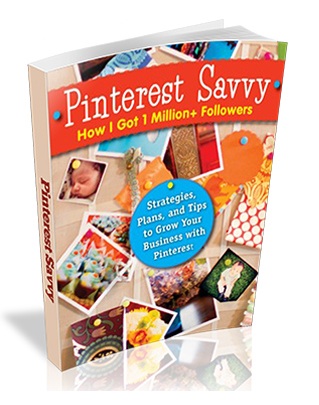 Today only, Pinterest Savvy is FREE on Kindle! To celebrate, Melissa Taylor is giving away a Kindle Fire HD on her blog, Imagination Soup!
Today only, Pinterest Savvy is FREE on Kindle! To celebrate, Melissa Taylor is giving away a Kindle Fire HD on her blog, Imagination Soup!
If you’re like me you probably heard about Pinterest from a friend, signed up for an account and pinned a few cool pictures, but really had no clue what Pinterest really had to offer. I know I found myself trying to figure out Pinterest etiquette and how to create the best pinnable images and the best times of day to pin and so, so much more. Google was my go-to for looking for how-to’s, but sorting through all of the information and links was time-consuming and didn’t always yield the results I needed.
Enter Melissa Taylor, Pinterest ‘insider’ extraordinaire. I lucked into a pre-launch copy of her new book, Pinterest Savvy: How I Got 1 Million+ Followers, and all of my questions were answered so simply and clearly that I just had to share.
Here are just a few of the things Pinterest Savvy has to offer:
- The basics of getting started
- Pinterest etiquette tips
- Best times of day/week to pin
- How to create the best pinnable images
- Tips for growing your business with Pinterest
- Secrets from top pinners
- And so much more!
Being an author of several books, myself, I’m always curious to hear from other authors about their experiences and motivations, so I emailed Melissa and asked her a few questions:
1. You have well over a million followers on Pinterest. I know you share all of your secrets in your new ebook, Pinterest Savvy, but can you share one or two here as a ‘sneak peek’?
Want more followers? Comment on pins and use hashtags when you pin and repin. Emphasize your niche and make Pinterest boards accordingly.
2. In addition to giving newcomers a very easy-to-read crash course in getting started on Pinterest, you also share some great tips for optimizing website traffic generated by your pins. What, in your experience, is the single most important tip for directing people to your website from Pinterest?
Make your own website “Pinnable”. In other words, be sure your images are amazing and interesting, and that you have a Pin It button installed.
3. Is there one tip you give in your book to small business owners that you could share briefly here?
Find the best way to connect with your specific audience, whether through YouTube videos, guest Pinners, contests, or partnerships.
4. What would you say to small businesses who haven’t taken advantage of the incredible opportunities for marketing available on Pinterest?
Pinterest is free marketing! The benefit of which will increase your online presence and brand awareness as well as your sales.
5. Your tips on creating the best photograph/graphic image for Pinterest are excellent. What’s the worst mistake you’ve seen people make with the images they pin from their websites?
Don’t leave your image titles as if they’ve just come from your camera. So no “DSC_404”. Instead, change the title to an accurate description such as “Top 10 Tips for Candle Making.”
6. Okay, last question. Many people who enjoy the kind of success you have tend to keep their secrets to themselves to guard their position. What prompted you to so openly share what you’ve learned about maximizing your presence on Pinterest?
More than sharing, it took me awhile to embrace that I had something to say that would help people be successful. A mentor of mine encouraged (pressured?) me into writing the book. I’m very grateful he did!
Also check out: 20 Parent Savvy Pinterest People to Follow
~~~~~~~~~~~~~~
 Melissa Taylor is an award-winning educator and writer. She writes primarily about education, children’s literature, and technology for publications online and in print such as Parenting.com, Scholastic Parent and Child, Babble.com, Colorado Parent Magazine, and others. Her first book, Book Love: Help Your Child Grow from Reluctant to Enthusiastic Reader, was published November 2012 to critical acclaim.
Melissa Taylor is an award-winning educator and writer. She writes primarily about education, children’s literature, and technology for publications online and in print such as Parenting.com, Scholastic Parent and Child, Babble.com, Colorado Parent Magazine, and others. Her first book, Book Love: Help Your Child Grow from Reluctant to Enthusiastic Reader, was published November 2012 to critical acclaim.
 Award-winnning author, L.R.Knost, is the founder and director of the children's rights advocacy and family consulting group, Little Hearts/Gentle Parenting Resources, and Editor-in-Chief of Holistic Parenting Magazine. Books by L.R.Knost include Whispers Through Time: Communication Through the Ages and Stages of Childhood ; Two Thousand Kisses a Day: Gentle Parenting Through the Ages and Stages ; The Gentle Parent: Positive, Practical, Effective Discipline ; and Jesus, the Gentle Parent: Gentle Christian Parenting the first four books in the Little Hearts Handbook gentle parenting series, and children’s picture books Petey’s Listening Ears and the soon-to-be-released Grumpykins series.
Award-winnning author, L.R.Knost, is the founder and director of the children's rights advocacy and family consulting group, Little Hearts/Gentle Parenting Resources, and Editor-in-Chief of Holistic Parenting Magazine. Books by L.R.Knost include Whispers Through Time: Communication Through the Ages and Stages of Childhood ; Two Thousand Kisses a Day: Gentle Parenting Through the Ages and Stages ; The Gentle Parent: Positive, Practical, Effective Discipline ; and Jesus, the Gentle Parent: Gentle Christian Parenting the first four books in the Little Hearts Handbook gentle parenting series, and children’s picture books Petey’s Listening Ears and the soon-to-be-released Grumpykins series.
21 Parent Savvy Pinterest People to Follow
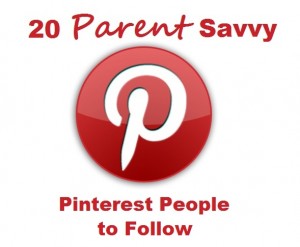 I don’t know about you, but I’m a certified pin-addict! I love finding excellent parenting advice, creative play ideas, unique learning tips, inspiring craft projects, and so, so much more all in one convenient location where I can organize them and have them literally at my fingertips whenever the need arises.
I don’t know about you, but I’m a certified pin-addict! I love finding excellent parenting advice, creative play ideas, unique learning tips, inspiring craft projects, and so, so much more all in one convenient location where I can organize them and have them literally at my fingertips whenever the need arises.
Here are a few of my best Pinterest ‘finds’ I thought I’d share with my readers:
 I’m L.R.Knost, author of Two Thousand Kisses a Day: Gentle Parenting Through the Ages and Stages and Whispers Through Time: Communication Through the Ages and Stages of Childhood, the first two books in the Little Hearts Handbook parenting series, and children’s picture book, Petey’s Listening Ears, and founder/director of Little Hearts/Gentle Parenting Resources. Check out Little Hearts/Gentle Parenting Resources‘ Pinterest boards, where you will not only have access to the excellent parenting resources I’ve discovered, but also all of the articles from this site organized into board categories such as Gentle Parenting/Discipline and Gentle Parenting/Babies and Toddlers. So easy and convenient!
I’m L.R.Knost, author of Two Thousand Kisses a Day: Gentle Parenting Through the Ages and Stages and Whispers Through Time: Communication Through the Ages and Stages of Childhood, the first two books in the Little Hearts Handbook parenting series, and children’s picture book, Petey’s Listening Ears, and founder/director of Little Hearts/Gentle Parenting Resources. Check out Little Hearts/Gentle Parenting Resources‘ Pinterest boards, where you will not only have access to the excellent parenting resources I’ve discovered, but also all of the articles from this site organized into board categories such as Gentle Parenting/Discipline and Gentle Parenting/Babies and Toddlers. So easy and convenient!
 Melissa Taylor@Imagination Soup is the author of Pinterest Savvy~How I Got 1 Million+ Followers (link coming soon!) which shares the in’s and out’s and do’s and don’ts of Pinterest for everyone from the Pinterest newbie to the veteran pinner and also of Book Love~Help Your Child Grow From Reluctant to Enthusiastic Reader which has excellent literacy tips, tools, and techniques. Her Pinterest boards offer everything from parenting tips to book recommendations to children’s crafts and activities.
Melissa Taylor@Imagination Soup is the author of Pinterest Savvy~How I Got 1 Million+ Followers (link coming soon!) which shares the in’s and out’s and do’s and don’ts of Pinterest for everyone from the Pinterest newbie to the veteran pinner and also of Book Love~Help Your Child Grow From Reluctant to Enthusiastic Reader which has excellent literacy tips, tools, and techniques. Her Pinterest boards offer everything from parenting tips to book recommendations to children’s crafts and activities.
 Next up we have one of my favorite parenting authors, Dr. Laura Markham of Aha! Parenting. Dr. Laura is a clinical psychologist and author of Peaceful Parent, Happy Kids: How to Stop Yelling and Start Connecting. Her Pinterest boards offer informative articles, tips, and ideas for parents of infants through adolescence.
Next up we have one of my favorite parenting authors, Dr. Laura Markham of Aha! Parenting. Dr. Laura is a clinical psychologist and author of Peaceful Parent, Happy Kids: How to Stop Yelling and Start Connecting. Her Pinterest boards offer informative articles, tips, and ideas for parents of infants through adolescence.
 Lynne Kenney, Psy.D. is a mother of two, a practicing Pediatric Psychologist in Scottsdale, AZ author of The Family Coach Method and co-author with Wendy Young of Bloom: Helping children blossom.
Lynne Kenney, Psy.D. is a mother of two, a practicing Pediatric Psychologist in Scottsdale, AZ author of The Family Coach Method and co-author with Wendy Young of Bloom: Helping children blossom.
 Amanda Morgan, who holds a Master’s degree in childhood development, is the author of Parenting with Positive Guidance. Her Pinterest boards at Amanda Morgan @ NotJustCute offer creative and unique learning ideas for early childhood education.
Amanda Morgan, who holds a Master’s degree in childhood development, is the author of Parenting with Positive Guidance. Her Pinterest boards at Amanda Morgan @ NotJustCute offer creative and unique learning ideas for early childhood education.
 Deb Chitwood is a Montessori educator and writer with a ton of ideas and resources to share which she’s organized beautifully onto her Pinterest page at Deb @ Living Montessori Now. A must-follow for homeschoolers and educators, as well as parents.
Deb Chitwood is a Montessori educator and writer with a ton of ideas and resources to share which she’s organized beautifully onto her Pinterest page at Deb @ Living Montessori Now. A must-follow for homeschoolers and educators, as well as parents.
 To child development expert, author, and international speaker Gill Connell of Moving Smart, a moving child is a learning child. Check out her Pinterest boards to “Find out why all those wiggles and giggles matter!”
To child development expert, author, and international speaker Gill Connell of Moving Smart, a moving child is a learning child. Check out her Pinterest boards to “Find out why all those wiggles and giggles matter!”
 Wendy Young, LMSW, BCD is a Child and Family Therapist and co-author with pediatric psychologist, Dr. Lynne Kenney, of the book Bloom: Helping children blossom. Wendy is also the creator of Kidlutions: Solutions for Kids which offers helpful resources such as innovative play therapy activities and crafts for parents and educators.
Wendy Young, LMSW, BCD is a Child and Family Therapist and co-author with pediatric psychologist, Dr. Lynne Kenney, of the book Bloom: Helping children blossom. Wendy is also the creator of Kidlutions: Solutions for Kids which offers helpful resources such as innovative play therapy activities and crafts for parents and educators.
 Play at Home Mom is a group of moms, educators and therapists who provide resources for positive parenting and playful connection. Their motto is “Changing lives one PLAY at a time!”
Play at Home Mom is a group of moms, educators and therapists who provide resources for positive parenting and playful connection. Their motto is “Changing lives one PLAY at a time!”
 “Mama to a vanful” Rachel Miller offers bright and colorful Pinterest boards with tons of play ideas, educational activities, and tips for family fun.
“Mama to a vanful” Rachel Miller offers bright and colorful Pinterest boards with tons of play ideas, educational activities, and tips for family fun.
 Featured on PBS Kids, Baby Center, Apartment Therapy, and more, this artsy childhood educator and mom, Rachelle @ Tinkerlab, offers Pinterest boards that abound with child-led arts and crafts and activities.
Featured on PBS Kids, Baby Center, Apartment Therapy, and more, this artsy childhood educator and mom, Rachelle @ Tinkerlab, offers Pinterest boards that abound with child-led arts and crafts and activities.
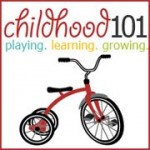 Passionate early childhood teacher and writer, Christie Burnett @ Childhood 101, has Pinterest boards with everything from family friendly recipes to fine motor activities to fun ideas for family play and connection.
Passionate early childhood teacher and writer, Christie Burnett @ Childhood 101, has Pinterest boards with everything from family friendly recipes to fine motor activities to fun ideas for family play and connection.
 You’ll find a little bit of everything parenting-related on SmilinglikeSunshine‘s Pinterest boards. From learning through play to breastfeeding and babywearing to toy and book recommendations, it’s like a parenting smorgasbord!
You’ll find a little bit of everything parenting-related on SmilinglikeSunshine‘s Pinterest boards. From learning through play to breastfeeding and babywearing to toy and book recommendations, it’s like a parenting smorgasbord!
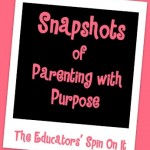 The Pinterest boards from The Educator’s Spin on It are chock full of educational activities, crafts, and ideas. Excellent resource for us homeschoolers, as well as for school teachers, early childhood educators, and more.
The Pinterest boards from The Educator’s Spin on It are chock full of educational activities, crafts, and ideas. Excellent resource for us homeschoolers, as well as for school teachers, early childhood educators, and more.
 In their own words, HarperCollins Children’s Pinterest team describe their mission this way, “We’re HarperCollins Children’s Books, and we’re here to help parents, teachers, and librarians discover great reads for kids, from picture books to middle grade.” From book recommendations to ‘Meet the Author’ boards to book-related activity ideas, parents and educators can find excellent resources here for literacy and learning.
In their own words, HarperCollins Children’s Pinterest team describe their mission this way, “We’re HarperCollins Children’s Books, and we’re here to help parents, teachers, and librarians discover great reads for kids, from picture books to middle grade.” From book recommendations to ‘Meet the Author’ boards to book-related activity ideas, parents and educators can find excellent resources here for literacy and learning.
 Zina :: Let’s Lasso the Moon offers Pinterest boards of “simple activities that elevate everyday moments into family traditions and memorable adventures.” With boards such as ‘Growing Creative Kids’ and ‘Lifetime Love of Learning’ you’ll be sure to find unique ideas for your little ones here!
Zina :: Let’s Lasso the Moon offers Pinterest boards of “simple activities that elevate everyday moments into family traditions and memorable adventures.” With boards such as ‘Growing Creative Kids’ and ‘Lifetime Love of Learning’ you’ll be sure to find unique ideas for your little ones here!
 From homeschooling to crafting to natural living, the Hippie Housewife has a little of everything parents need to raise happy, healthy children.
From homeschooling to crafting to natural living, the Hippie Housewife has a little of everything parents need to raise happy, healthy children.
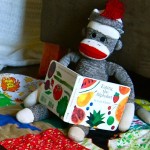 Delightful Children’s Books offers children’s book reviews, recommendations, and activities as well as homeschooling ideas, crafts, and more!
Delightful Children’s Books offers children’s book reviews, recommendations, and activities as well as homeschooling ideas, crafts, and more!
 Mom and National Board Certified Teacher, Malia {Playdough to Plato}, shares playful learning activities for kids, holiday fun, and hands-on early literacy activities.
Mom and National Board Certified Teacher, Malia {Playdough to Plato}, shares playful learning activities for kids, holiday fun, and hands-on early literacy activities.
 For our extra special kiddos who need a bit of extra special parenting, here is the link to the SPD (Sensory Processing Disorder) Blogger Network‘s Pinterest boards that contain a wealth of tips, activities, and articles to give those of us blessed with sensory kids the resources we need.
For our extra special kiddos who need a bit of extra special parenting, here is the link to the SPD (Sensory Processing Disorder) Blogger Network‘s Pinterest boards that contain a wealth of tips, activities, and articles to give those of us blessed with sensory kids the resources we need.
 Mama Smiles – Joyful Parenting‘s Pinterest boards are chock full of ideas for “finding joy in everyday parenting through creativity, learning, and play.”
Mama Smiles – Joyful Parenting‘s Pinterest boards are chock full of ideas for “finding joy in everyday parenting through creativity, learning, and play.”
I hope you find as many helpful and creative ideas on these Pinterest boards as I have, and don’t forget to stop by Little Hearts/Gentle Parenting Resources‘ boards and snag a few pins along the way!
 Award-winnning author, L.R.Knost, is the founder and director of the children's rights advocacy and family consulting group, Little Hearts/Gentle Parenting Resources, and Editor-in-Chief of Holistic Parenting Magazine. Books by L.R.Knost include Whispers Through Time: Communication Through the Ages and Stages of Childhood ; Two Thousand Kisses a Day: Gentle Parenting Through the Ages and Stages ; The Gentle Parent: Positive, Practical, Effective Discipline ; and Jesus, the Gentle Parent: Gentle Christian Parenting the first four books in the Little Hearts Handbook gentle parenting series, and children’s picture books Petey’s Listening Ears and the soon-to-be-released Grumpykins series.
Award-winnning author, L.R.Knost, is the founder and director of the children's rights advocacy and family consulting group, Little Hearts/Gentle Parenting Resources, and Editor-in-Chief of Holistic Parenting Magazine. Books by L.R.Knost include Whispers Through Time: Communication Through the Ages and Stages of Childhood ; Two Thousand Kisses a Day: Gentle Parenting Through the Ages and Stages ; The Gentle Parent: Positive, Practical, Effective Discipline ; and Jesus, the Gentle Parent: Gentle Christian Parenting the first four books in the Little Hearts Handbook gentle parenting series, and children’s picture books Petey’s Listening Ears and the soon-to-be-released Grumpykins series.
Judgey McJudgerton~In Defense of Parents Judging Other Parents
judgment (n.): the formation of an opinion after consideration or deliberation; an authoritative opinion; the ability to form an educated opinion using discernment, wisdom, and common sense
 There is typically a backlash in the form of accusations of judgmentalism and intolerance whenever a passionate opinion is publically expressed, and that is no less true in the parenting world. The fact is, though, that all of us, simply by virtue of being intelligent human beings, make judgments. That is what we are designed to do. It’s how we learn. It is the purpose of education, research, and experience to impart the wisdom to make judicious decisions (i.e. judgments).
There is typically a backlash in the form of accusations of judgmentalism and intolerance whenever a passionate opinion is publically expressed, and that is no less true in the parenting world. The fact is, though, that all of us, simply by virtue of being intelligent human beings, make judgments. That is what we are designed to do. It’s how we learn. It is the purpose of education, research, and experience to impart the wisdom to make judicious decisions (i.e. judgments).
In an age when calls of “be true to yourself” and “do what seems right to you” abound, it’s surprising that expressing an opinion that seems right to you is so quickly met with condemnation. Even when an opinion is well thought out, thoroughly researched, and politely expressed, it is still often the target of such accusations.
Many times, of course, passion causes opinions to be expressed in less-than-kind and even condemning terms, and in those cases the backlash may have some justification. But when a well-considered opinion is stated courteously and still engenders charges of judgmentalism and intolerance, it is clear that a deep misunderstanding of the healthy and normal nature of judgment vs. the intolerant attitude of condemnation is at the heart of the matter.
To make a judgment is simply to form an opinion, whereas to condemn is to accuse and censure, based on that judgment. For instance, if through my education and life experiences I have formed the considered opinion that a person who wears a shiny red nose, big floppy shoes, and a painted-on smile is, in fact, a clown, then when I see someone who fits those parameters I will judge them to be a clown. That is a normal, positive, human expression of opinion, not a negative expression of disapproval. If, however, in my judgment of them as a clown I ostracize and reprove them, then I have moved from judgment to condemnation.
There is, however, a middle ground in the form of constructive, rather than destructive, criticism which has a place in the formation and expression of passionately held beliefs. If I have formed the judgment that hitting children is wrong no matter what euphemism is used (i.e. spanking, smacking, paddling, etc.), then I may express that opinion politely, but honestly, and let someone know that their choice to hit their child is, in my opinion, a mistake, and I will offer alternatives.
In the same way that gentle parenting is not un-parenting and will sometimes involve setting and enforcing boundaries, offering parenting guidance, by its very nature, sometimes includes constructive criticism. Just as a gentle parent may say to a child, “You’re having a hard time, aren’t you? I’m so sorry. I can’t let you hurt people, though. Hands aren’t for hitting. Let’s talk about some other choices you can make next time you’re upset so you’ll be ready,” a gentle response to a parent who uses physical punishment to control their child may be, “I can see you’re having a hard time. Hitting a child is unacceptable, though, for any reason. Let’s discuss a few alternatives so that you’re prepared with some practical, effective parenting tools the next time a behavior issue arises.”
That is where the rubber hits the road, so to speak. When I take my carefully researched, thoughtfully considered, educated opinion and apply it to a specific situation, communicating it kindly, but clearly, I am sharing my insights with the intention of opening a dialogue that will, hopefully, shed light on a subject. It may not be the person involved in the situation who learns something new, especially when it is a third-party article being discussed rather than a parent seeking guidance, but those who read what I’ve shared may go on their way with a different, perhaps gentler, perspective about parenting, and that is the point.
Kindness is always the right answer, but it is not kind to withhold information that may benefit someone, and that is where gentleness plays its starring role…in the kind, honest sharing of wisdom; in respectful, open dialogue; and in the strength to stand up for those too young and helpless to stand up for themselves.
Related posts:
Practical, Gentle, Effective Discipline
200 Ways to Bless Your Children with a Happy Childhood
12 Tips for Gently Parenting Your Adult Children (Hint: It starts when they’re newborns!)
The Measure of Success~Chinese Parents and French Parents Can’t BOTH Be Superior!
Tots to Teens~Communication Through the Ages and Stages
The Taming of the Tantrum: A Toddler’s Perspective
 Award-winnning author, L.R.Knost, is the founder and director of the children's rights advocacy and family consulting group, Little Hearts/Gentle Parenting Resources, and Editor-in-Chief of Holistic Parenting Magazine. Books by L.R.Knost include Whispers Through Time: Communication Through the Ages and Stages of Childhood ; Two Thousand Kisses a Day: Gentle Parenting Through the Ages and Stages ; The Gentle Parent: Positive, Practical, Effective Discipline ; and Jesus, the Gentle Parent: Gentle Christian Parenting the first four books in the Little Hearts Handbook gentle parenting series, and children’s picture books Petey’s Listening Ears and the soon-to-be-released Grumpykins series.
Award-winnning author, L.R.Knost, is the founder and director of the children's rights advocacy and family consulting group, Little Hearts/Gentle Parenting Resources, and Editor-in-Chief of Holistic Parenting Magazine. Books by L.R.Knost include Whispers Through Time: Communication Through the Ages and Stages of Childhood ; Two Thousand Kisses a Day: Gentle Parenting Through the Ages and Stages ; The Gentle Parent: Positive, Practical, Effective Discipline ; and Jesus, the Gentle Parent: Gentle Christian Parenting the first four books in the Little Hearts Handbook gentle parenting series, and children’s picture books Petey’s Listening Ears and the soon-to-be-released Grumpykins series.
Our Children, Our World, Our Responsibility
 My heart is broken. I’ve lost a child to stillbirth and many more to miscarriage, so I know loss all too well, and yet I have a six-year-old and can’t even imagine what the parents of the twenty precious children slain in the Sandy Hook Elementary School shooting are going through. The stray toys and shoes left in mute remembrance of the last moments before their little ones left for school, the empty bedrooms sitting in silent mourning through the long nights, the endless reminders that must steal their breath away at every turn.
My heart is broken. I’ve lost a child to stillbirth and many more to miscarriage, so I know loss all too well, and yet I have a six-year-old and can’t even imagine what the parents of the twenty precious children slain in the Sandy Hook Elementary School shooting are going through. The stray toys and shoes left in mute remembrance of the last moments before their little ones left for school, the empty bedrooms sitting in silent mourning through the long nights, the endless reminders that must steal their breath away at every turn.
I want to be angry, but I won’t waste my time and energy focusing on evil. Instead, I will pour my prayers out for the families and friends and communities so devastated, and I will do everything I possibly can in every way I possibly can for as long as I possibly can to change the world into a safer, more peaceful place for all of our children.
Change, the real, lasting, world-revolutionizing kind, starts in the home. It starts with sowing peace into our children’s hearts from the moment they are born. It starts with modeling kindness, respect, and self-control to our children, not only in how we treat others in front of them, but in how we treat our children themselves. And it starts in our own hearts, in our own choices, in our own lives.
While human idiosyncrasies and weaknesses make a world completely devoid of violence and tragedy impossible, there is so much that can and should be different, better, safer. We may never know if the devastation of the recent elementary school shooting, or others like it, could have been prevented by different gun laws, security measures in schools, etc. But there is no doubt that the humans carrying out these senseless acts didn’t come into the world as violent killers. Something or someone, somewhere in their lives, broke the innocent children they once were and set off a series of events that led to horrific tragedy.
That is not to say that the individuals who committed these heinous acts aren’t to blame. They are. We are, each of us, responsible for our own choices, and, regardless of what previous life events, hurts, or tragedies we suffer, we have within us the ability to make the right choices, period. But, by the same token, if the hurts or tragedies that broke these individuals in the first place were caused by human violence, excesses, or failures, then those humans, as well, must bear their own responsibility.
The truth is that ‘hurting people hurt people.’ But if we raise confident, kind, heart-whole humans who can withstand the inevitable trials and troubles of life, if we ferociously guard our children’s innocence, if we model the kind of compassionate, forgiving, loving adults we want our children to become, then we truly can ‘be the change we want to see in the world.’
Let’s change the way we raise our children from the present mindset of external control through punishment, threats, and intimidation and instead instill internal controls through guidance, understanding, and empathy. Let’s encourage cooperation instead of demanding obedience. Let’s model self-control to our children instead of inflicting our anger on our children. Let’s share our lives, hearts, hopes, and dreams with them instead of distancing ourselves with our electronic devices, heavy workloads, over-scheduling, and with parenting practices that promote isolation such as sleep training and negative, punitive behavioral modification such as spanking, public humiliation, and withholding our presence, support, and affection as a ransom for good behavior.
We may not be able to significantly change this present world for our children, but if we change the way we raise our children, we can change the future world through our children.
Will you join me?
Related posts:
Practical, Gentle, Effective Discipline
200 Ways to Bless Your Children with a Happy Childhood
12 Tips for Gently Parenting Your Adult Children (Hint: It starts when they’re newborns!)
The Measure of Success~Chinese Parents and French Parents Can’t BOTH Be Superior!
Tots to Teens~Communication Through the Ages and Stages
The Taming of the Tantrum: A Toddler’s Perspective
 Award-winnning author, L.R.Knost, is the founder and director of the children's rights advocacy and family consulting group, Little Hearts/Gentle Parenting Resources, and Editor-in-Chief of Holistic Parenting Magazine. Books by L.R.Knost include Whispers Through Time: Communication Through the Ages and Stages of Childhood ; Two Thousand Kisses a Day: Gentle Parenting Through the Ages and Stages ; The Gentle Parent: Positive, Practical, Effective Discipline ; and Jesus, the Gentle Parent: Gentle Christian Parenting the first four books in the Little Hearts Handbook gentle parenting series, and children’s picture books Petey’s Listening Ears and the soon-to-be-released Grumpykins series.
Award-winnning author, L.R.Knost, is the founder and director of the children's rights advocacy and family consulting group, Little Hearts/Gentle Parenting Resources, and Editor-in-Chief of Holistic Parenting Magazine. Books by L.R.Knost include Whispers Through Time: Communication Through the Ages and Stages of Childhood ; Two Thousand Kisses a Day: Gentle Parenting Through the Ages and Stages ; The Gentle Parent: Positive, Practical, Effective Discipline ; and Jesus, the Gentle Parent: Gentle Christian Parenting the first four books in the Little Hearts Handbook gentle parenting series, and children’s picture books Petey’s Listening Ears and the soon-to-be-released Grumpykins series.
Bookish & Craftastic Advent Ideas
The countdown to Christmas is about to begin, so here are some of my all-time favorite book-related and crafty ideas for a fun and meaningful Advent!
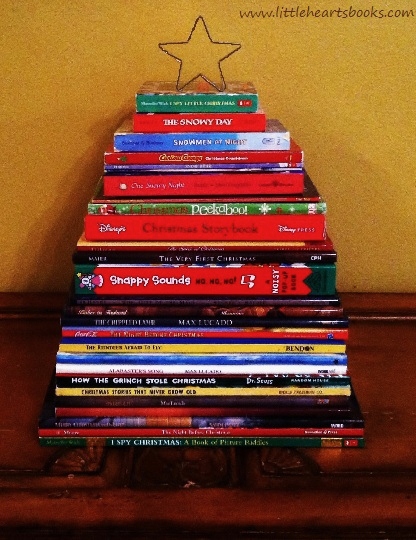 Book Advent~Every year I put away all of our Christmas and winter-themed books and then pull them out on the 1st of December to make a Picturebook Christmas Tree. We read one each evening for a bedtime book Advent tradition that my little bookworms look forward to year after year.
Book Advent~Every year I put away all of our Christmas and winter-themed books and then pull them out on the 1st of December to make a Picturebook Christmas Tree. We read one each evening for a bedtime book Advent tradition that my little bookworms look forward to year after year.
Another idea (from Detail Gal Blog) is to wrap books and put them under the tree so that as you read them and the space under the tree empties, excitement for Christmas morning builds!
Wrapping just the covers of picturebooks and lining them up on a mantle or bookshelf like a  colorful little Christmas tree forest is another awesome Advent idea from Reading Confetti!
colorful little Christmas tree forest is another awesome Advent idea from Reading Confetti!
Here are some Christmas and winter-themed book suggestions:
Source: lifeatthezoo.com via Melissa Taylor, ImaginationSoup.net on Pinterest
Source: holyspiritledhomeschooling.net via Melissa Taylor, ImaginationSoup.net on Pinterest
And these free, printable Advent activity cards…
Source: addapinch.com via Melissa Taylor, ImaginationSoup.net on Pinterest
or these service-themed Advent cards…
Source: aliedwards.com via Melissa Taylor, ImaginationSoup.net on Pinterest
would be awesome with these vintage-looking library book pockets.
Source: notonthehighstreet.com via L.R. on Pinterest
This year we are making an ornament a day to give as gifts to family and friends in what I hope will become another fun and creative Advent tradition for our family. If you want to give it a try, too, you can find some cute ornament craft ideas here.
And for more ideas about how to make the holiday season fun-filled and meaningful, as well as keeping the joy and wonder of childhood alive for your little ones year round:
In a twist on the Advent theme, here is A Very Toddler Christmas~24 Tips for a Safe, Stress-Free & Jolly Holiday
The Spirit of Christmas… The Great Santa Claus Debate
Making gratitude and generosity a standard of life… 7 Tips and Traditions to Make Giving a Standard of Living
The Reason for the Season… Celebrating Jesus with a Santa Claus Christmas
A happy childhood sends a child into adulthood with a baggage of confidence and kindness instead of disillusionment and anger. 200 Ways to Bless Your Children with a Happy Childhood
The human brain needs time to process, categorize, prioritize, analyze, and otherwise make sense of all of the trillions of bits of information that it receives each day. Non-structured playtime for children functions much like sleep does for adults, giving their brains the time and space they need to move short-term memory to long-term learning. 25 Reasons NOT to Keep Children Busy
In the world of a child wonders are as simple as sticks and sheets, leaves and books, boxes and giggles, and the promise in a rainy day. The Seven Wonders of the World of Childhood
Children who love to read…READ! Engaging children’s hearts in the wonder of reading instead of just training their minds in its mechanics. Raising Bookworms
From hitting to defiance to tantrums to testing the boundaries and more, here are gentle parenting tools, tips, and techniques…Practical Gentle Discipline
 Award-winnning author, L.R.Knost, is the founder and director of the children's rights advocacy and family consulting group, Little Hearts/Gentle Parenting Resources, and Editor-in-Chief of Holistic Parenting Magazine. Books by L.R.Knost include Whispers Through Time: Communication Through the Ages and Stages of Childhood ; Two Thousand Kisses a Day: Gentle Parenting Through the Ages and Stages ; The Gentle Parent: Positive, Practical, Effective Discipline ; and Jesus, the Gentle Parent: Gentle Christian Parenting the first four books in the Little Hearts Handbook gentle parenting series, and children’s picture books Petey’s Listening Ears and the soon-to-be-released Grumpykins series.
Award-winnning author, L.R.Knost, is the founder and director of the children's rights advocacy and family consulting group, Little Hearts/Gentle Parenting Resources, and Editor-in-Chief of Holistic Parenting Magazine. Books by L.R.Knost include Whispers Through Time: Communication Through the Ages and Stages of Childhood ; Two Thousand Kisses a Day: Gentle Parenting Through the Ages and Stages ; The Gentle Parent: Positive, Practical, Effective Discipline ; and Jesus, the Gentle Parent: Gentle Christian Parenting the first four books in the Little Hearts Handbook gentle parenting series, and children’s picture books Petey’s Listening Ears and the soon-to-be-released Grumpykins series.
A Very Toddler Christmas~24 Tips for a Safe, Stress-Free & Jolly Holiday
[By L.R.Knost, best-selling author of The Gentle Parent: Positive, Practical, Effective Discipline; Whispers Through Time: Communication Through the Ages and Stages of Childhood; Two Thousand Kisses a Day: Gentle Parenting Through the Ages and Stages; and Jesus, the Gentle Parent: Gentle Christian Parenting available on Amazon and through other major retailers.]
*********************
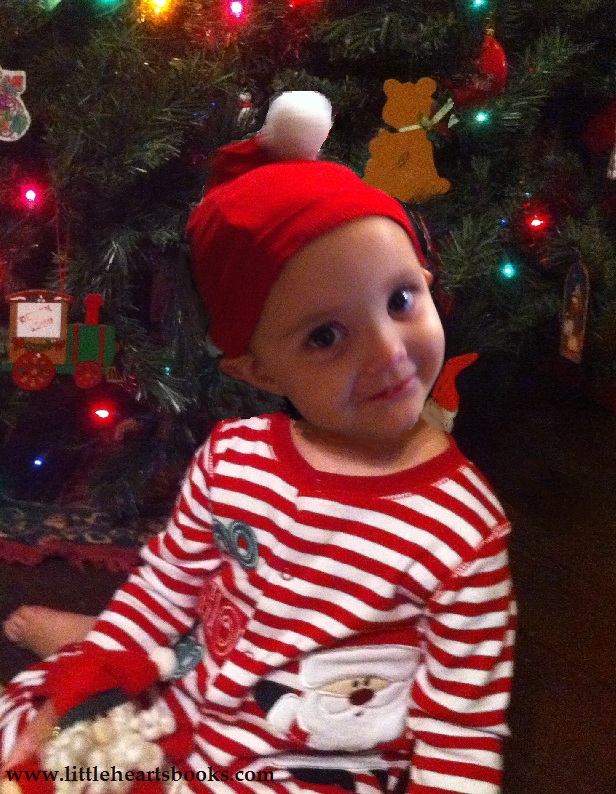 What do you get when you cross a curious toddler with a Christmas tree covered with glittering, dangling ‘toys’ and enticing, shiny lights? At the very least, a season of toddler chasing and redirecting, and at the worst a season of shattered-glass hazards and tree-scaling, toppling nightmares. So what’s a parent to do? Must we scrap the tree so we can have a merry Christmas while we have little ones in the house? Not at all!
What do you get when you cross a curious toddler with a Christmas tree covered with glittering, dangling ‘toys’ and enticing, shiny lights? At the very least, a season of toddler chasing and redirecting, and at the worst a season of shattered-glass hazards and tree-scaling, toppling nightmares. So what’s a parent to do? Must we scrap the tree so we can have a merry Christmas while we have little ones in the house? Not at all!
Here is an Advent list with a twist…24 Christmas safety tips for parents with tiny people who love to explore:
 1.) A Christmas tree plopped down right in the middle of a child’s playspace (i.e. family room, living room, den) is just too much temptation for any little person, so one solution is to place the tree in a lesser-used room such as a study or office or even a covered porch where the tree can be seen but is less accessible to little explorers.
1.) A Christmas tree plopped down right in the middle of a child’s playspace (i.e. family room, living room, den) is just too much temptation for any little person, so one solution is to place the tree in a lesser-used room such as a study or office or even a covered porch where the tree can be seen but is less accessible to little explorers.
2.) Another option is to place the Christmas tree in a play yard like the one pictured to keep the tree safe while still having it in a central location in the house for everyone to enjoy.
3.) A tabletop tree is also an option. Keep the tree away from the edges and watch out for dangling tree skirts and light cords so little hands can’t pull the tree down on top of little heads.
4.) For families like ours who have lots of little ones toddling around year after year, a child-proof tree may be the answer. We used fishline to anchor our tree to the ceiling after one tiny climber toppled the tree over on herself a few times. Non-breakable ornaments (homemade ornaments are great  alternatives) tied to the tree with ribbons instead of metal hooks (choking hazard!) are the solution to our current little spelunker who loves to crawl under the Christmas tree and lay looking up at the sparkling lights from her little hidey-hole.
alternatives) tied to the tree with ribbons instead of metal hooks (choking hazard!) are the solution to our current little spelunker who loves to crawl under the Christmas tree and lay looking up at the sparkling lights from her little hidey-hole.
5.) Be sure to check that your artificial tree is fire-rated or your real tree is fresh (i.e. easily bendable branches, no dropping needles) and keep your real tree well-watered to reduce fire danger.
6.) Always check lights for broken, loose, or missing bulbs, and make sure wires aren’t frayed and sockets aren’t cracked. Turn lights off when leaving your home or going to bed.
7.) For outdoor lighting/decorating, be sure to use extension cords rated for outdoor use, and don’t overload the outlet by stringing together more lights than the instructions allow. Elevate cords to avoid them sitting in water or on dry leaves. Have lights on a timer or turn lights out when leaving your home or going to bed.
8.) When decorating, place figurines and keepsakes out of reach of little hands to avoid constantly chasing giggling toddlers who find your reaction to their snatch-and-run game a great source of holiday entertainment.
9.) Avoid decorating with real holly or mistletoe in areas accessible to small children, as both are toxic if eaten.
10.) Never decorate your tree with candles, and keep candles separated from pine branches on tabletops and mantles by placing them in deep glass votives. Never leave a small child alone in a room with a burning candle.
11.) Keep snow sprays out of reach as they can be toxic if inhaled and can cause injury if sprayed into eyes.
12.) When entertaining, keep hot plates away from the edges of tables and remind guests not to leave hot or alcoholic beverages within reach of small children.
13.) House guests may not be used to having small children around, so be extra vigilant about medicine bottles, unattended purses, open luggage, and other dangers that may visit along with your guests.
14.) When purchasing gifts, check labels for age recommendations. Keep in mind that even if you think a little one is advanced enough to enjoy a toy that is recommended for an older child, the toy may contain choking hazards or other dangers to a small child.
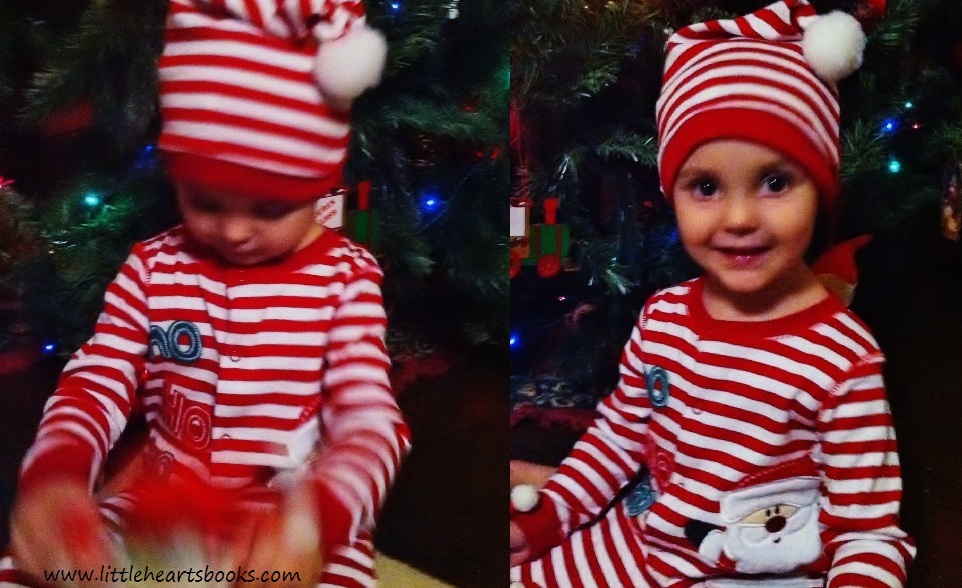 15.) Unless you like wrapping presents over and over and…well, you get the picture, avoid setting wrapped packages out under the tree if the tree is accessible to small children. Keeping your expectations in line with your child’s developmental stage is a key element to avoiding conflict in your parent/child relationship and making your holidays less stressful and more enjoyable!
15.) Unless you like wrapping presents over and over and…well, you get the picture, avoid setting wrapped packages out under the tree if the tree is accessible to small children. Keeping your expectations in line with your child’s developmental stage is a key element to avoiding conflict in your parent/child relationship and making your holidays less stressful and more enjoyable!
16.) In the flurry of gift opening on Christmas morning, small objects from ripped open packages (like the 42 little plastic tabs to hold a $5 rattle in a cardboard box!) can end up scattered amongst the toys and boxes and paper, creating a sea of choking hazards. Keep a big box handy to throw packaging and wrapping paper into, and choose one or two toys to remove from their packaging for immediate play while putting the other opened presents away in another box to be opened later.
17.) Never let children throw wrapping paper into the fireplace, as this can cause a dangerous flash fire.
18.) Keep a close watch on your little one’s diet throughout the holidays. In the busyness of the season, nutrition often takes a backseat to convenience, and an overload of junk foods and sweets can cause tummy aches and crankiness which won’t help them or you to have a jolly holiday.
19.) Another nutritional danger of the season is unintentional weaning. If you’re nursing a little one, the constant changes in schedule, the busyness, the stress, and the baby being passed from one relative to another can result in missed feedings and reduced milk supply. Making a conscious effort to take regular nursing breaks in a quiet room with your little nursling will give both of you a chance to reconnect and de-stress a bit and keep your nursing relationship intact.
20.) Also, be very aware of your little one’s sleep patterns during the holiday season. All of the disturbances mentioned in #19 can wreak havoc on a small child’s sleep schedule and, along with the almost inevitable over-stimulation of the music, lights, and visitors, that can make the holidays a miserable time for a little person.
21.) Fireplaces should be regularly inspected to prevent chimney fires, and protective fire-screens and/or baby gates should be used to keep little ones safe.
22.) Space heaters are a well-known fire hazard. Make sure you are using them according to the manufacturer’s specifications and that they are in good working order. Never leave a small child unattended in a room with a space heater.
23.) Keep in mind that, while you know and love those visiting relatives your little one has never met, expecting a small child to instantly let a person who is a total stranger to them hold and kiss and play with them is unrealistic. If we want our children to exercise restraint and caution with random strangers at the 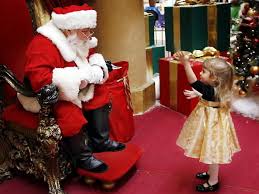 park/mall/etc., we need to allow them to set limits they are comfortable with when it comes to physical contact and interaction with the ‘strangers’ in our homes, as well.
park/mall/etc., we need to allow them to set limits they are comfortable with when it comes to physical contact and interaction with the ‘strangers’ in our homes, as well.
24.) And, last but certainly not least, while pictures of their little ones with Santa may be every parent’s heart’s desire, small children often don’t share that desire. Instead of forcing your child to sit in a strange man’s lap (not exactly a precedent we want to set for our children!), if your child isn’t comfortable with the idea, get creative and try getting pictures of your toddler standing near Santa while he plays peek-a-boo with them or try kneeling on one knee next to Santa, yourself, with your little one on your other knee. You never know, those pictures may end up being your all-time favorites!
~~~~~~~~~~~~~~
More ideas about how to make the holiday season fun-filled and meaningful, as well as keeping the joy and wonder of childhood alive for your little ones year round:
The Spirit of Christmas… The Great Santa Claus Debate
Making gratitude and generosity a standard of life… 7 Tips and Traditions to Make Giving a Standard of Living
The Reason for the Season… Celebrating Jesus with a Santa Claus Christmas
A happy childhood sends a child into adulthood with a baggage of confidence and kindness instead of disillusionment and anger. 200 Ways to Bless Your Children with a Happy Childhood
The human brain needs time to process, categorize, prioritize, analyze, and otherwise make sense of all of the trillions of bits of information that it receives each day. Non-structured playtime for children functions much like sleep does for adults, giving their brains the time and space they need to move short-term memory to long-term learning. 25 Reasons NOT to Keep Children Busy
In the world of a child wonders are as simple as sticks and sheets, leaves and books, boxes and giggles, and the promise in a rainy day. The Seven Wonders of the World of Childhood
Children who love to read…READ! Engaging children’s hearts in the wonder of reading instead of just training their minds in its mechanics. Raising Bookworms
From hitting to defiance to tantrums to testing the boundaries and more, here are gentle parenting tools, tips, and techniques. Practical, Gentle, Effective Discipline
 Award-winnning author, L.R.Knost, is the founder and director of the children's rights advocacy and family consulting group, Little Hearts/Gentle Parenting Resources, and Editor-in-Chief of Holistic Parenting Magazine. Books by L.R.Knost include Whispers Through Time: Communication Through the Ages and Stages of Childhood ; Two Thousand Kisses a Day: Gentle Parenting Through the Ages and Stages ; The Gentle Parent: Positive, Practical, Effective Discipline ; and Jesus, the Gentle Parent: Gentle Christian Parenting the first four books in the Little Hearts Handbook gentle parenting series, and children’s picture books Petey’s Listening Ears and the soon-to-be-released Grumpykins series.
Award-winnning author, L.R.Knost, is the founder and director of the children's rights advocacy and family consulting group, Little Hearts/Gentle Parenting Resources, and Editor-in-Chief of Holistic Parenting Magazine. Books by L.R.Knost include Whispers Through Time: Communication Through the Ages and Stages of Childhood ; Two Thousand Kisses a Day: Gentle Parenting Through the Ages and Stages ; The Gentle Parent: Positive, Practical, Effective Discipline ; and Jesus, the Gentle Parent: Gentle Christian Parenting the first four books in the Little Hearts Handbook gentle parenting series, and children’s picture books Petey’s Listening Ears and the soon-to-be-released Grumpykins series.
Changing the World, One Little Heart at a Time
[Portions reprinted from The Gentle Parent: Positive, Practical, Effective Discipline by L.R.Knost. Two Thousand Kisses a Day: Gentle Parenting Through the Ages and Stages and Whispers Through Time: Communication Through the Ages and Stages of Childhood also available on Amazon and through other major retailers.]
~~~~~~~~~~~~~~
 A recent article in the UK based news outlet, The Telegraph, shared a startling image of the differences between the brain of a three-year-old child raised in a nurturing environment and the brain of a three-year-old child who suffered from extreme neglect. The image of the neglected child’s brain lacked “some of the most fundamental areas present” in the image of the nurtured child’s brain. Those areas of deficit included areas determining intelligence, the capacity for self-control, and the ability to empathize. The differences between the two images were so shocking that the neglected three-year-old’s brain looked like one of a victim of brain trauma, but, in this case, it was solely deprivation of a nurturing caregiver that caused the deficiencies.
A recent article in the UK based news outlet, The Telegraph, shared a startling image of the differences between the brain of a three-year-old child raised in a nurturing environment and the brain of a three-year-old child who suffered from extreme neglect. The image of the neglected child’s brain lacked “some of the most fundamental areas present” in the image of the nurtured child’s brain. Those areas of deficit included areas determining intelligence, the capacity for self-control, and the ability to empathize. The differences between the two images were so shocking that the neglected three-year-old’s brain looked like one of a victim of brain trauma, but, in this case, it was solely deprivation of a nurturing caregiver that caused the deficiencies.
“Professor Allan Schore, of UCLA, who has surveyed the scientific literature and has made significant contributions to it, stresses that the growth of brain cells is a ‘consequence of an infant’s interaction with the main caregiver [usually the mother].’ The growth of the baby’s brain ‘literally requires positive interaction between mother and infant. The development of cerebral circuits depends on it.’”
The article goes on to discuss the fact that eighty percent of the brain cells that will develop in a person’s lifetime are created in the first two years, making any significant recovery of potential after that period difficult to impossible. “If the process of building brain cells and connections between them goes wrong, the deficits are permanent.”
While it may be hard to grasp the idea of permanent brain damage as a result of poor parenting, scientists have known as far back as the Harry Harlow studies on primates in 1957 and the world has seen in the heartbreaking images of the neglect in the 1990 expose of the Romanian orphanage system that a nurturing, care-giving environment is essential to normal intellectual, emotional, and social development.
“This discovery has enormous implications for social policy. It explains two very persistent features of our society…Chronic disadvantage reproduces itself across generations of the same families. There is a cycle of deprivation – lack of educational attainment, persistent unemployment, poverty, addiction, crime – which, once a family is in it, has proved almost impossible to break…Parents who, because their parents neglected them, do not have fully developed brains, neglect their own children in a similar way: their own children’s brains suffer from the same lack of development that blighted their own lives. They, too, are likely to fail at school, to be liable to get addicted to drugs, to be unable to hold down a job, and to have a propensity to violence.
The second persistent feature is the dismal failure of rehabilitation programmes that aim to diminish the rate at which persistent young offenders commit crimes. Many different approaches have been tried, from intensive supervision to taking young offenders on safaris, but none has worked reliably or effectively. Recent research indicates that a large majority – perhaps more than three quarters – of persistent young offenders have brains that have not developed properly. They have, that is, suffered from neglect in the first two years of life, which prevented their brains from growing.”
Decades of research, not to mention simple human experience, have confirmed the importance of an interactive, attentive, and responsive primary caregiver in early childhood. And yet, unlike the more family-centered societies in third world countries, most industrialized societies have embraced a far more detached parenting mode typified by practices such as sleep-training, schedule-based feeding, non-family care-giving, etc.
Additionally, public policies in the most advanced nations on earth tend to be skewed significantly toward housing the results of childhood neglect in prisons and homeless shelters rather than addressing the root issues of that neglect. Tax codes favor two-career families, thus making it more difficult for a parent to choose to remain at home and provide a stable, nurturing environment. Public funds are poured into educating parents about public health concerns like obesity and smoking and vaccinations rather than into early parenting support such as breastfeeding education and crisis resources and information on normal child development and behavior.
The lost potential in the lives of these children and the resultant social issues because of short-sighted public policies is as unconscionable as it is unnecessary. Public attitudes must shift from “somebody should do something” to “let’s address this together,” and we need to go further than just reaching out to troubled children. While that is a vital step, and nurturing from another family member or a mentor can have a significant positive influence on a troubled child, that influence may be limited by brain deficiencies and associated negative behavioral patterns already in place due to neglect.
Let’s also go back to the beginning, though, and address the issues preemptively. Let’s reach out to families in need with our hearts instead of just our tax dollars. Let’s be the change we want to see in the world by mentoring struggling parents in our communities, organizing local outreaches such as parenting fairs, and supporting community centers and churches that provide weekly mommy and me classes or mom’s day out resources. Let’s provide schools with information packets about optimal early childhood care to send home with students with new babies in their families.
Let’s contact our local universities and ask them to consider giving college credit for early education/social work/nursing students, etc. to spend a certain number of hours every week mentoring at-risk new mothers. Let’s contact our government officials and petition them to implement tax breaks and incentives to stay-at-home parents with young children and to employers to encourage them to offer extended maternity leaves.
The research has been done. The reports have been written. The evidence is clear. Parents matter. Parenting choices have a profound impact on children and the people they will become, and the people they become will shape the world we all share.
Join Little Hearts/Gentle Parenting Resources in changing the world, one little heart at a time. ♥
*Also published in The Natural Parent Magazine
Related posts:
Practical, Gentle, Effective Discipline
200 Ways to Bless Your Children with a Happy Childhood
12 Tips for Gently Parenting Your Adult Children (Hint: It starts when they’re newborns!)
The Measure of Success~Chinese Parents and French Parents Can’t BOTH Be Superior!
 Award-winnning author, L.R.Knost, is the founder and director of the children's rights advocacy and family consulting group, Little Hearts/Gentle Parenting Resources, and Editor-in-Chief of Holistic Parenting Magazine. Books by L.R.Knost include Whispers Through Time: Communication Through the Ages and Stages of Childhood ; Two Thousand Kisses a Day: Gentle Parenting Through the Ages and Stages ; The Gentle Parent: Positive, Practical, Effective Discipline ; and Jesus, the Gentle Parent: Gentle Christian Parenting the first four books in the Little Hearts Handbook gentle parenting series, and children’s picture books Petey’s Listening Ears and the soon-to-be-released Grumpykins series.
Award-winnning author, L.R.Knost, is the founder and director of the children's rights advocacy and family consulting group, Little Hearts/Gentle Parenting Resources, and Editor-in-Chief of Holistic Parenting Magazine. Books by L.R.Knost include Whispers Through Time: Communication Through the Ages and Stages of Childhood ; Two Thousand Kisses a Day: Gentle Parenting Through the Ages and Stages ; The Gentle Parent: Positive, Practical, Effective Discipline ; and Jesus, the Gentle Parent: Gentle Christian Parenting the first four books in the Little Hearts Handbook gentle parenting series, and children’s picture books Petey’s Listening Ears and the soon-to-be-released Grumpykins series.
300+ Nicknames for Your Babykins…Doodlebug…Snugglebunny…
[By L.R.Knost, author of Two Thousand Kisses a Day: Gentle Parenting Through the Ages and Stages, Whispers Through Time: Communication Through the Ages and Stages of Childhood, and The Gentle Parent: Positive, Practical, Effective Discipline available on Amazon and through other major retailers.]
 After nine months of googling, polling family and friends, making list after list, and agonizing over making The. Perfect. Choice. the moment arrives…you’ve finally chosen your expected blessing’s name. The perfect name. The name that will be with them forever. The name that will appear on their birth certificate, their highschool diploma, their voter ID card, their college degree, their marriage certificate. Your first parental decision…check! And then your little one arrives, and as you kiss that tiny, fuzzy little head, you find yourself whispering, “Welcome to the world, pumpkin.”
After nine months of googling, polling family and friends, making list after list, and agonizing over making The. Perfect. Choice. the moment arrives…you’ve finally chosen your expected blessing’s name. The perfect name. The name that will be with them forever. The name that will appear on their birth certificate, their highschool diploma, their voter ID card, their college degree, their marriage certificate. Your first parental decision…check! And then your little one arrives, and as you kiss that tiny, fuzzy little head, you find yourself whispering, “Welcome to the world, pumpkin.”
Wait a minute. Pumpkin? That’s not the name you agonized over! Why, after all the effort you put into choosing The. Perfect. Name. would you call your new arrival something entirely different?!?
Actually, it’s a good thing! Here are a few reasons why:
‘The perfect name’ is for the whole wide world to use in interacting with your little one, but a nickname is just for you, a symbol of the intimate, interdependant, loving connection between parent and child. Also, while ‘the perfect name’ may be perfect for certificates and licenses and diplomas, it doesn’t reflect the personality of this unique and adorable new person who has their own special purpose for being here. And, really, resisting giving your little cutie an equally cute nickname would be just as hard as resisting the urge to blow raspberries on their squishy tummy or kiss their soft cheeks a thousand times a day or stare into their curious little owl eyes.
So go ahead, choose ‘the perfect name’ for your tiny blessing so that they can be known to the world, and then, when you start getting to know your little hugabug or dynamo or sunshine, choose another ‘perfect’ name to reflect who they are and what they mean to you 🙂
Here’s a list of some popular, and some not so well-known, nicknames to check out. If you’ve got a nickname for your little one that’s not on the list, share it in the comments!
| Ace Angel Angel-baby Angel-face Bab Babes Baboo Babs Babushka Baby-blue Babycakes Baby-dear Baby-diddle Babydoll Baby-doo Baby-face Babykins Bambina Bambino Bean Beanie Beanie-baby Bear Bearie Beau-bear Bebo Birdie Bitsy Bitsy-boo Blossom Boo Boo-boo Boo-boo-bear Boss Bubba Bubba-bear Bubba-dee Bubba-diddle Bubbles Bubby Bubby-doo Bubkins Bubs Buckaroo Bud Buddy Buds Bug Bugabear Bugadoo Bugaloo Buggie Buggie-boo Buggie-bunny Bumble-bee Bumbles Bumpkins Bumpy Bunny Buttercup Captain Care Bear Champ Cherie Chickie Chickpea Chief China-doll Chipmunk Chunk Chunky-monkey Coco Cookie Cookie-monster Coppertop Cowboy Cricket Cubbie Cubbie-bear Cubster Cuddle-bunny Cuddles Cupcake Cupie-doll Cutiekins Cutie-patootie Cutie-pie Daisy Darling Dear Dear-one Dearie Diddle Diddle-doo Diddles Diddly-doo Diddly-bear Dilly-bar Dilly-boo Dilly-doo Dimples |
Dolly Doodle-bear Doodle-bug Doodlekins Doodles Dot Duckling Ducky Duddy Dumpling Dynamo Freckles Friend Funny-bunny Funny-face Fuzzy Fuzzy-bear Fuzzy-bunny Giggle-bear Giggle-bunny Giggles Gigi Goose Goosie-goose Half-pint Happy Hobbit Honey Hoss Hugabug Huggy-bear Huggy-buggy Huggy-bunny Hunny-bunny Itsy Itsy-bitsy Jazzy Jellybean Jocko Juggernaut Kiddo Kiki King-kong Kit Kitten Kitty Lad Laddie Lass Lassie Lil’ Bit Lil’ Boss Lil’ Guy Lil’ Man Lolly Lollypop Loo-loo Love-bug Lovie Lovie-dovie Milk-monkey Mima Moe Monkey Monkey-doodle Moogie Moogie-bear Mookie Moonbeam Mouse Mr. Man Muddles Muffin Muncha-munch Munchkin Munchy Nanners Ninja Nipper Nutter-butter Paddy Panda Panda-bear Peaches Peachy-pie Peanut Peanut-butter Pet Pinkie-pie Pinky Pippa Poodles Pooh Pooh-bear Poppet Poppy Precious Prince Princess Professor Professor X |
Puddin’ Puddin-pie Pumpkin Punkin’ Punkin-pie Punkin-wunkin Punky Pup Racer Rollie-pollie Roo Rookie Scooby Scooby-doo Scout Scrappy Scrappy-doo Shortcake Shortie Short-stuff Silly-bear Silly-goose Silly-pickle Silly-willy Slugger Smiley Smoochie Snickerdoodle Snoopy Snow-bunny Snugabug Snugabunny Snuggle-bunny Snuggles Sparky Sport Sprout Squeaker Squeaks Squirrel Squirt Squishy Star-bright Stinker Stinker-bear Stinker-winker Stinker-winker-bear Stretch Sugarplum Sunbeam Sunny Sunshine Sweet Sweetcakes Sweetheart Sweetie Sweetiekins Sweetpea Sweets Sweet-tater Sweet-treat Sweetums Tabby Tadpole Tater Taterkins Teddy Teddybear Teddykins Thumbkin Tiger Tigger Tilly Tink Tinker-doodle Tiny Toodle-bear Toodles Tootsie Tootsie-bear Tootsie-pop Tootsie-wootsie Turbo Turbo-man Turtle Tweety Tweety-bird Twinkie Twinkles Tyke Waddles Whiz-kid Widdle-waddle Wiggles Wiggle-bum Wiggle-worm Winnie Wookie Wookie-bear Youngin Zippy |
Related links:
Ten Steps to Surviving the First Three Months with a Newborn
Love in the Time of Cosleeping
Babywearing Basics Resource Guide
Breastfeeding, Babywearing, and Bouncing Back into Shape after Baby
25 Tips to Prepare Children for a New Sibling
Four Ways Attachment Parenting Can Reduce the Risk of SIDS
The Science of Sleep: Newborns
 Award-winnning author, L.R.Knost, is the founder and director of the children's rights advocacy and family consulting group, Little Hearts/Gentle Parenting Resources, and Editor-in-Chief of Holistic Parenting Magazine. Books by L.R.Knost include Whispers Through Time: Communication Through the Ages and Stages of Childhood ; Two Thousand Kisses a Day: Gentle Parenting Through the Ages and Stages ; The Gentle Parent: Positive, Practical, Effective Discipline ; and Jesus, the Gentle Parent: Gentle Christian Parenting the first four books in the Little Hearts Handbook gentle parenting series, and children’s picture books Petey’s Listening Ears and the soon-to-be-released Grumpykins series.
Award-winnning author, L.R.Knost, is the founder and director of the children's rights advocacy and family consulting group, Little Hearts/Gentle Parenting Resources, and Editor-in-Chief of Holistic Parenting Magazine. Books by L.R.Knost include Whispers Through Time: Communication Through the Ages and Stages of Childhood ; Two Thousand Kisses a Day: Gentle Parenting Through the Ages and Stages ; The Gentle Parent: Positive, Practical, Effective Discipline ; and Jesus, the Gentle Parent: Gentle Christian Parenting the first four books in the Little Hearts Handbook gentle parenting series, and children’s picture books Petey’s Listening Ears and the soon-to-be-released Grumpykins series.
25 Must-Have Books for Preschool Bookworms
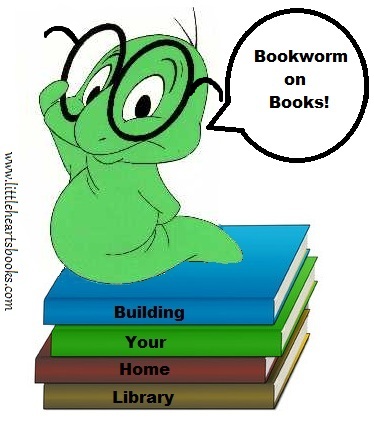 Bookworm weighs in on must-have books for your children in Little Hearts’ How to Build a Home Library for Bookworms from Tots to Teens series. Check out 25 Must-Have Books for Baby Bookworms and 25 Must-Have Books for Toddler Bookworms, and check back for 25 Must-Have Books for Early Elementary Bookworms, 25 Must-Have Books for Tween Bookworms, 25 Must-Have Books for Teen Bookworms, and 25 Must-Have Books for Young Adult Bookworms in the coming weeks as well as literacy tips, book activities, and book nook ideas!
Bookworm weighs in on must-have books for your children in Little Hearts’ How to Build a Home Library for Bookworms from Tots to Teens series. Check out 25 Must-Have Books for Baby Bookworms and 25 Must-Have Books for Toddler Bookworms, and check back for 25 Must-Have Books for Early Elementary Bookworms, 25 Must-Have Books for Tween Bookworms, 25 Must-Have Books for Teen Bookworms, and 25 Must-Have Books for Young Adult Bookworms in the coming weeks as well as literacy tips, book activities, and book nook ideas!
1.)
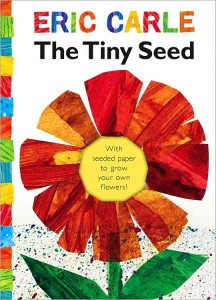 The Tiny Seed by Eric Carle
The Tiny Seed by Eric Carle
This story of struggle and survival, illustrated in Eric Carle’s unique, brilliantly colorful style, follows a tiny seed as it beats the odds and fulfils its purpose…growing and blooming into a beautiful flower.
Preview:
It is Autumn. A strong wind is blowing. It blows flower seeds high in the air and carries them far across the land. One of the seeds is tiny, smaller than any of the others. Will it be able to keep up with the others? Where are they all going? One of the seeds flies higher than the others. Up, up it goes…
2.)
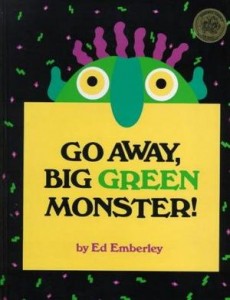 Go Away, Big Green Monster! by Ed Emberly (see related activities below)
Go Away, Big Green Monster! by Ed Emberly (see related activities below)
This is a deceptively simple book with a powerful message for a small child…YOU can tell the monsters to “GO AWAY!” As children read along, they build a monster with the die-cut pages and then send it away again, one scary part at a time. Love this creative way of making children feel powerful and encouraging them to say “No!” when they’re faced with things that scare them!
Preview:
Big Green Monster has two big yellow eyes, a long bluish-green nose, a big red mouth with sharp white teeth, two little squiggly ears, scraggly purple hair, and a big scary green face! But…YOU DON’T SCARE ME! So GO AWAY, scraggly purple hair! GO AWAY, two little squiggly ears…
3.)
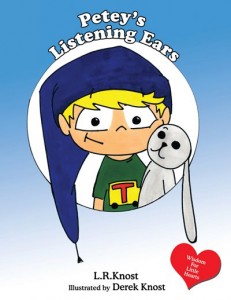 Petey’s Listening Ears by L.R.Knost (see author reading below)
Petey’s Listening Ears by L.R.Knost (see author reading below)
Wisdom for Little Hearts weaves gentle parenting techniques into engaging, humorous picture books to educate parents while entertaining little ones. In this first book in the series, lovable little Petey and his stuffed friend, Beans, are having a difficult day filled with bad choices and their unfortunate consequences until Petey’s mommy and daddy step in with some gentle guidance.
Preview:
Petey was having a bad day. First, his daddy said not to pull the cat’s tail. But Petey didn’t listen. He wanted his furry friend, Beans, to get a catback ride! The cat scratched Petey’s hand. That made Petey cry. Then his mommy said not to dump his toybox out all over the floor. But Petey didn’t listen. He wanted to play pirate ship with Beans…
4.)
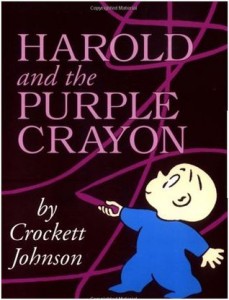 Harold and the Purple Crayon by Crockett Johnson
Harold and the Purple Crayon by Crockett Johnson
Harold is a little boy with a HUGE imagination. With his purple crayon, he creates adventures and wonders that have little ones alternately holding their breaths in suspense and giggling with excitement. This is one book you will enjoy as much as your children do!
Preview:
One evening, after thinking it over for some time, Harold decided to go for a walk in the moonlight. There wasn’t any moon, and Harold needed a moon for a walk in the moonlight. And he needed something to walk on. He made a long straight path so he wouldn’t get lost. And he set off on his walk, taking his purple crayon with him…
5.)
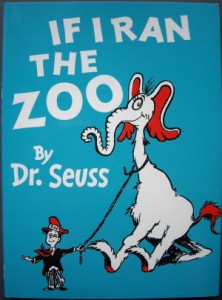 If I Ran the Zoo by Dr. Seuss
If I Ran the Zoo by Dr. Seuss
In this classic tale by my favorite children’s book author, the incomparable Dr. Seuss himself, a little boy’s imagination runs wild with the limitless possibilities that only a child can truly appreciate as he pictures himself catching all sorts of fantastical creatures for his “New zoo, McGrew zoo!”
Preview:
“It’s a pretty good zoo,” said young Gerald McGrew. “And the fellow who runs it seems proud of it, too. But if I ran the zoo,” said young Gerald McGrew, “I’d make a few changes, that’s just what I’d do…
6.)
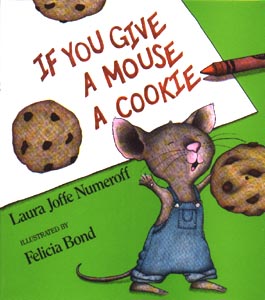 If You Give a Mouse a Cookie by Laura Numeroff
If You Give a Mouse a Cookie by Laura Numeroff
This is a lighthearted and imaginative story about a bossy little mouse and his good-natured little boy host. Children find it funny simply because of the silly series of requests and how one thing leads to another…to another…to another. Adults find it funny for the same reason because of how much it reflects spending the day with a small child! (As a bonus, this book is a great lesson on sequencing. After reading it in storytime, ask your children what happened when the mouse got the cookie he asked for, then what happened when he got the glass of milk, etc.)
Preview:
If you give a mouse a cookie, he’s going to ask for a glass of milk. When you give him the milk, he’s going to ask you for a straw. When he’s finished, he’ll ask for a napkin…
7.)
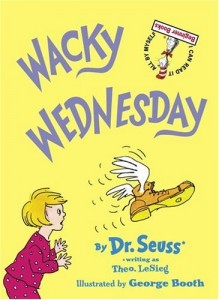 Wacky Wednesday by Theo Lesieg
Wacky Wednesday by Theo Lesieg
This is one of my preschooler’s (and toddler’s and early elementary kiddo’s!) absolute favorite books! Finding and counting all of the crazy, out-of-place things on each page…one on the first page, two on the second, three on the third, etc…is as educational as it is entertaining!
Preview:
It all began with that shoe on the wall. A shoe on the wall…? Shouldn’t be there at all! Then I looked up. And I said, “Oh man!” And that’s how Wacky Wednesday began…
8.)
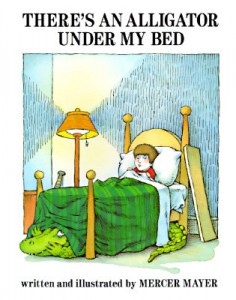 There’s an Alligator Under my Bed by Mercer Mayer (see author reading below)
There’s an Alligator Under my Bed by Mercer Mayer (see author reading below)
I’ve read this book to my little ones so many times (at their request!) that’s it is literally falling apart at the seams. From the humorous illustrations to the heroic little boy who rescues his father from the ‘invisible’ alligator, children from toddlers to preschoolers and beyond will love this book. And the author reading is as funny to adults as it is to children with the silly slap-stick style ad-libs by Mercer Mayer himself!
Preview:
There used to be an alligator under my bed. When it was time to go to sleep, I had to be very careful because I knew he was there. But whenever I looked, he hid…or something…
9.)
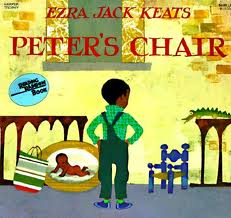 Peter’s Chair by Ezra Jack Keats
Peter’s Chair by Ezra Jack Keats
Little Peter has a problem, and it’s sleeping in the next room! A baby sister has joined the family, and Peter doesn’t like it, not one little bit. And when his old cradle and crib get painted pink, Peter knows it’s time to take action. He takes his favorite chair (to protect it from being painted pink!) and his pet dog and sets off on his own, but on the way learns about growing up and the value of each and every family member. In this adorably illustrated book by the author of the Caldecott Medal winning book, The Snowy Day, children will find a kindred spirit in little Peter and enjoy watching him find his way back home again.
Preview:
Peter stretched as high as he could. There! His tall building was finished. CRASH! Down it came. “Shhhh!” called his mother. “You’ll have to play more quietly. Remember, we have a new baby in the house.” Peter looked into his sister Susie’s room. His mother was fussing around the cradle. “That’s my cradle,” he thought, “and they painted it pink!”…
10.)
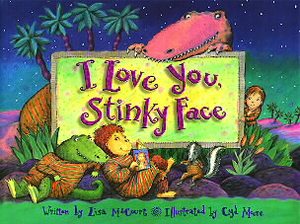 I Love You, Stinky Face by Lisa McCourt
I Love You, Stinky Face by Lisa McCourt
My little ones giggle like crazy when I read this to them and then very seriously tell them, “I love you, my slimy green swamp monsters.” This is a lighthearted little book with a very reassuring message of unconditional love. One note is that the illustrations can be a bit scary for some children, but most will simply find them hilariously funny!
Preview:
Mama said, “I love you, my wonderful child.” But I had a question. “Mama, what if I were a big, scary ape! Would you still love me then?” “If you were a big, scary ape, I would make you a birthday cake out of bananas, and I would say, ‘I love you my big scary ape.'” “But what if I was a…
11.)
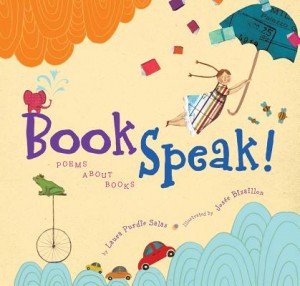 BookSpeak! by Laura Purdie Salas
BookSpeak! by Laura Purdie Salas
This book is BRILLIANT! It’s suggested for grades 2-5, but I love sharing poetry and literary concepts with my children at all ages and this is a really fun and creative introduction to elements such as plot, characterization, sequel, cliffhanger (“Please, author, write a sequel fast!” begs a dog hanging from a cliff in one poem.) as well as imaginative ruminations on how characters might feel when readers neglect them ( “Don’t close the cover and don’t walk away./Don’t leave me squished in here day after day.”) and more! Preschoolers may not ‘get’ everything this fantastic book has to offer, but if shared in small bites they’ll enjoy the rhythm and rhyme and silliness and may just come away with more understanding of literary concepts than you might expect!
Preview:
I’ll tell you a story./I’ll spin you a rhyme./I’ll spill some ideas–/and we’ll travel through time./Put down the controller./Switch off the TV./Abandon the mouse and/Just hang out with me./I promise adventure./Come on, take a look!/On a day like today,/There’s no friend like a book…
12.)
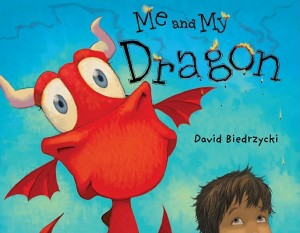 Me and My Dragon by David Biedrzycki
Me and My Dragon by David Biedrzycki
This is a giggle-out-loud book with as much humor in the illustrations as the text. With hidden gems like a ‘knight’ light to discover along the way, reading this book is sure to hold everyone’s attention through storytime after storytime!
Preview:
Some kids want a dog. Some want a cat. I want a dragon! A big dragon wouldn’t fit in my house. Three-headed dragons don’t get along with themselves. I’d choose a fire-breathing dragon. I’d teach him how to fly…
13.)
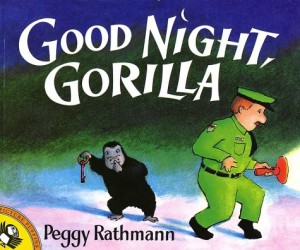 Good Night, Gorilla by Peggy Rathmann
Good Night, Gorilla by Peggy Rathmann
There’s a gorilla on the loose, and he’s letting all the other animals in the zoo out of their cages! The silliness that ensues as all the animals follow the oblivious zookeeper home and prepare to sleep in his room for the night make for a good laugh in this fun and delightfully illustrated picture book. Toddlers love this book for the animals, but preschoolers ‘get’ the humor of a whole zoo camping out in the zookeeper’s bedroom and enjoy it on a whole different level!
Preview:
Good night, Gorilla. Good night, Elephant. Good night, Lion. Good night, Giraffe…[or not!]
14.)
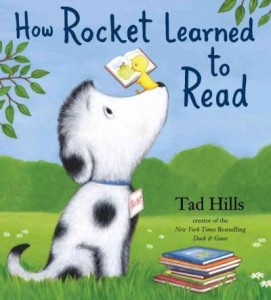 How Rocket Learned to Read by Tad Hills
How Rocket Learned to Read by Tad Hills
Rocket is a rambunctious little puppy who likes to romp and play and nap (sounds a lot like most preschoolers I know!). One day he meets a little yellow bird who wants to play school. Together, they play and argue and work their way through learning the alphabet and sounding out words until Rocket finally learns to read!
Preview:
Rocket loved to play. He loved to chase leaves and chew sticks. He loved to listen to the birds sing. Every fall morning after chasing leaves, Rocket would lie down in his favorite spot under his favorite tree. There he’d sniff the neighborhood smells and settle in for a good nap. But one day…a little yellow bird startled Rocket. “Aha! My first student! Wonderful!” she sang. Rocket was confused. “Student? I’m not a…” “But if I am your teacher,” the bird interrupted, “then you must be my student.” Rocket found it hard to argue with this bird…
15.)
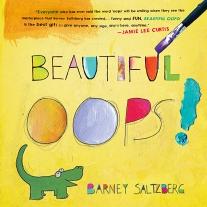 Beautiful Oops! by Barney Saltzberg
Beautiful Oops! by Barney Saltzberg
A mistake isn’t the end of the world…it’s the beginning of something new and exciting! That’s the message in this deceptively simple book with interactive flaps and tears and splotches that help the perfectionist in all of us to lighten up and see possibilities instead of failures. Excellent book for preschoolers and beyond!
Preview: A torn piece of paper is just the beginning…
16.)
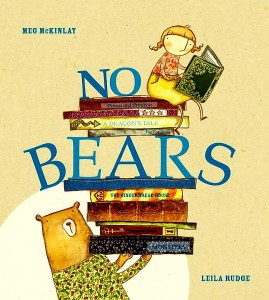 No Bears by Meg McKinlay
No Bears by Meg McKinlay
The precocious Ella, reminiscent of the infamous Pippi Longstocking, announces her absolute reign over her own book and declares that bears are dirty, nasty creatures and are, therefore, banned from her book. Little ones will giggle with delight as Ella misses seeing the kindly, helpful bear following her from one adventure to the next, and adults will enjoy finding the subtle inclusion of classic fairy tale characters along the way!
Preview:
Hi, I’m Ella, and this is my book. You can tell it’s a book because there are words everywhere. Words like Once Upon a Time and Happily Ever After and The End. I’m in charge of this book, so I know everything about it-including the most important thing, which is that there are NO BEARS in it. NOT EVEN ONE…
17.)
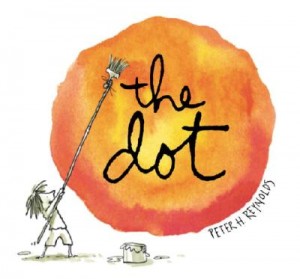 The Dot by Peter H. Reynolds
The Dot by Peter H. Reynolds
This is a quiet masterpiece showcasing the art of encouragement with a bit of whimsy. When stubborn and discouraged little Vashti sits staring dejectedly at her blank sheet of paper in art class, her teacher’s gentle and unusual encouragement leads to a rush of creativity that then gets paid forward by Vashti herself. Love this fanciful little book!
Preview:
Art class was over, but Vashti sat glued to her chair. Her paper was empty. Vashti’s teacher leaned over the blank paper. “Ah! A polar bear in a snow storm,” she said. “Very funny!” said Vashti. “I just CAN’T draw!” Her teacher smiled. “Just make a mark and see where it takes you…
18.)
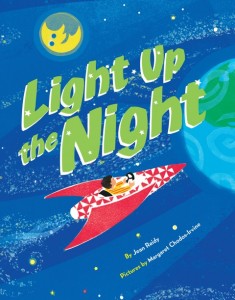 Light Up the Night by Jean Reidy
Light Up the Night by Jean Reidy
Science and geography concepts all wrapped up in a sleepy, rhythmic book about a little boy who transforms his blanket into various modes of transportation to explore the universe on his way to bed. A favorite for parents and children with its imaginative and soothing story that will lull little ones off into dreamland.
Preview:
When it’s time to sleep, it’s nice to know there’s a place that’s safe. In a cozy house, in a comfy bed, under a blanket that’s white and red under stars so bright they light up the night in your own little piece of the universe…This is my country, with highlands and plains, with farmlands and cities and highways and trains. It sits on my continent, far and wide, which kisses an ocean on either side, on half the Earth, which circles the sun, which hides its face when the day is done, while stars glow bright and light up the night…
19.)
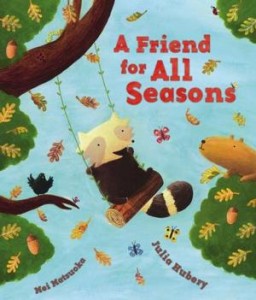 A Friend for All Seasons by Julie Hubery
A Friend for All Seasons by Julie Hubery
Take your little ones on a walk through the seasons with Robbie Raccoon and his favorite friend, Old Father Oak, as the sun shines in the summer, leaves fall and animals prepare for hibernation in the autumn, and acorns nestle in the ground throughout the winter awaiting spring to bloom. A sweet, enjoyable, and educational story all wrapped up in an adorably illustrated book.
Preview:
Robbie was born in a cozy den high in Father Oak’s sturdy trunk. In the spring he learned to climb on Father Oak’s strong branches. All summer long he played with his friends Chip and Blackbird in the shade of Father Oak’s green leaves. On the first day of fall Robbie woke early…all Robbie found was a chilly, silvery mist…And then the winter came, the cold, dark, sleepy time, when all the leaves and flowers hide and sleep…
20.)
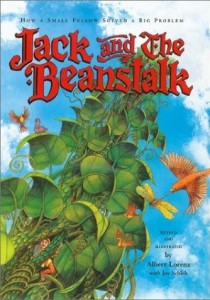 Jack and the Beanstalk: How a Small Fellow Solved a Big Problem by Joy Schleh, Illustrations by Albert Lorenz
Jack and the Beanstalk: How a Small Fellow Solved a Big Problem by Joy Schleh, Illustrations by Albert Lorenz
Albert Einstein said, “If you want your children to be intelligent, read them fairy tales. If you want them to be more intelligent, read them more fairy tales,” and this version of the fable, Jack and the Beanstalk, is a great place to start. Action, adventure, intrigue, suspense, you name it, this story is as spellbinding as they come and a wonderful introduction to the fairy tale genre!
Preview:
Since this book presents a fairly typical version of the text of the story, this preview is focused on what sets it apart from the others…the incredible illustrations! The illustrator took upwards of 60 hours per drawing, making the whole book a two-year project and with good reason. These aren’t just cartoons, there are detailed diagrams (to scale, no less!) of the castle, cats as big as tigers and a massive golden-egg-laying hen, schematics of Jack’s MacGyver-esque simple machines built with bits and pieces from the giant’s castle to overcome the obstacles he faces, and multiple ‘Where is Waldo’ type search-and-find pages. Amazing!
21.)
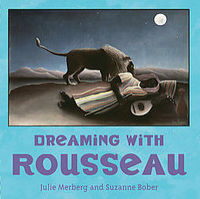 Dreaming with Rousseau by Julie Merberg
Dreaming with Rousseau by Julie Merberg
The mini-Masters series introducing children to the art of the Masters is marketed mainly to the toddler set, but its lively rhyming verses coupled with prints of famous paintings is a marvelous tool for sparking a love of art in preschoolers, as well. This little book is, itself, like a stroll back in time with Rousseau as your guide. Lovely!
Preview:
After a stroll in the starlit night, beneath a moon that’s pearly white, a girl falls asleep on a sandy bed, as magical pictures dance in her head…
22.)
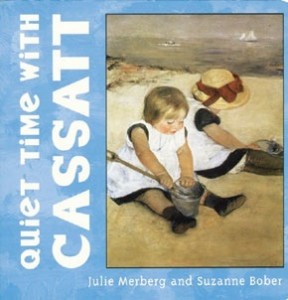 Quiet Time with Cassatt by Julie Merberg
Quiet Time with Cassatt by Julie Merberg
The lilting, melodic quality of the verse in this mini-Masters book coupled with the paintings of children and families will make this a favorite, for sure!
Preview:
It’s quiet time to think and rest and watch the world from a cozy nest. Time to sink into a soft blue chair and relax for a while without a care…
23.)
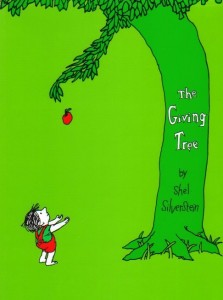 The Giving Tree by Shel Silverstein
The Giving Tree by Shel Silverstein
In this much-loved book, the gifted Shel Silverstein masterfully captures the bittersweet joy of sacrificial love and the human propensity for missing the wealth of beauty in that love in the pursuit of material riches. This story is as sad as it is inspiring, and makes a wonderful starting point for discussions about what really matters in life.
Preview:
Once there was a tree. And she loved a little boy. And every day the boy would come and he would gather her leaves and make them into crowns and play king of the forest…[And as the boy grew, he took all that the tree had to give, her apples to sell for money, her branches to build a house, her trunk to build a boat] and the tree was happy…but not really…
24.)
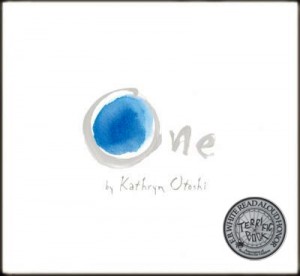 One by Kathryn Otoshi
One by Kathryn Otoshi
Numbers, colors, and a lesson on bullying, sticking together, and compassion all in one amazing little book!
Preview:
Blue was a quiet color. He enjoyed looking up at the sky, floating on the waves, and on days he was feeling daring…splashing in rain puddles. Every once in awhile he wished he could be more funny like Yellow. Or bright like Green. More regal like Purple. Or outgoing like Orange. But overall, he liked being Blue. Except when he was with Red. Red was a hot head. He liked to pick on Blue. “Red is a great color,” he’d say. “Red is hot. Blue is not…
25.)
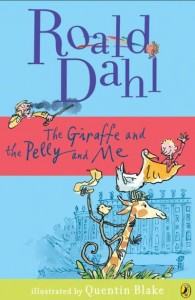 The Giraffe and the Pelly and Me by Roald Dahl
The Giraffe and the Pelly and Me by Roald Dahl
This is a great first chapter book for storytime with older preschoolers who have a longer attention span and can remember the storyline from one chapter to the next. Funny and quirky with Roald Dahl’s signature style, this short book is a little lighter and less grizzly than some of his other works (though, be aware, there is a brief scary part).
Preview:
We have tears in our eyes/As we wave our goodbyes,/We so loved being with you, we three./So do please now and then/Come and see us again,/The Giraffe and the Pelly and me./All you do is to look/At a page in this book/Because that’s where we always will be./No book ever ends/When it’s full of your friends/The Giraffe and the Pelly and me…
~~~~~~~~~~~~~~
 My little girls don’t have many nightmares, but there is the occasional monster in the closet or under the bed who needs to be evicted. To go along with the book Go Away, Big Green Monster we made our own ‘Monster-Away Spray,’ guaranteed to send all scary monsters packing. Our colors don’t match those in the book perfectly because we just used foam stickers
My little girls don’t have many nightmares, but there is the occasional monster in the closet or under the bed who needs to be evicted. To go along with the book Go Away, Big Green Monster we made our own ‘Monster-Away Spray,’ guaranteed to send all scary monsters packing. Our colors don’t match those in the book perfectly because we just used foam stickers 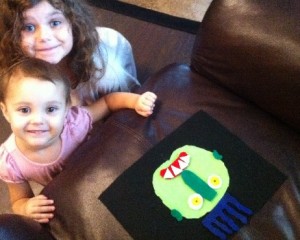 and googlie eyes from our craft box and blue spray bottles from the bargain bin at the fabric store, but my girls are thrilled with them! We filled them with water (and added a little spritz of febreeze in my six-year-old’s bottle because, “Monsters can’t STAND flowers!”) and then Daddy and Big Brother took turns pretending
and googlie eyes from our craft box and blue spray bottles from the bargain bin at the fabric store, but my girls are thrilled with them! We filled them with water (and added a little spritz of febreeze in my six-year-old’s bottle because, “Monsters can’t STAND flowers!”) and then Daddy and Big Brother took turns pretending 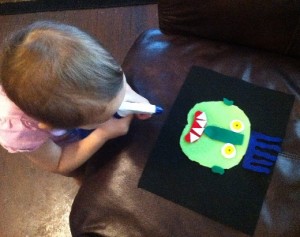 to be monsters and ran away squealing from the girls when they got sprayed. Now, a bit of bedtime spritzing in closets and under beds is all it takes to make my girls feel confident that they’ve rousted the beasties so they can sleep in peace! We also made a felt Go Away, Big Green Monster activity board to do together as we read the book, and, as soon as it was done, my toddler ran and got her ‘Monster-Away Spray’ and sprayed the monster. 🙂 (Click here for more ideas on helping children cope with anxiety.)
to be monsters and ran away squealing from the girls when they got sprayed. Now, a bit of bedtime spritzing in closets and under beds is all it takes to make my girls feel confident that they’ve rousted the beasties so they can sleep in peace! We also made a felt Go Away, Big Green Monster activity board to do together as we read the book, and, as soon as it was done, my toddler ran and got her ‘Monster-Away Spray’ and sprayed the monster. 🙂 (Click here for more ideas on helping children cope with anxiety.)
Author readings:
L.R.Knost reads Petey’s Listening Ears…
Mercer Mayer reads There’s an Alligator Under my Bed…
Related posts:
Children who love to read…READ! Engaging children’s hearts in the wonder of reading instead of just training their minds in its mechanics. Raising Bookworms
In the world of a child wonders are as simple as sticks and sheets, leaves and books, boxes and giggles, and the promise in a rainy day. The Seven Wonders of the World of Childhood
Fairy tales in childhood are stepping stones throughout life, leading the way through trouble and trial. The value of fairy tales lies not in a brief literary escape from reality, but in the gift of hope that goodness truly is more powerful than evil and that even the darkest reality can lead to a Happily Ever After. Do not take that gift of hope lightly. It has the power to conquer despair in the midst of sorrow, to light the darkness in the valleys of life, to whisper “One more time” in the face of failure. Hope is what gives life to dreams, making the fairy tale the reality. Fairy Tales~The Lost Value of ‘Once upon a time…’
There is such a rush these days to get children sleeping through the night, weaned off the breast, eating solid foods, potty trained, reading independently, and on and on, that we seem to have lost the ability to simply enjoy life as it happens and let our children do the same. A Return to Childhood
On a Winnie the Pooh style ‘long explore’ my little Pooh Bear discovered the world in ways only a toddler can in…The Many Adventures of My Little Pooh Bear
Successful reading means far more than possessing the ability to read. Engaging the hearts of students moves reading success beyond a life skill and turns it into a life style. And graphic novels are too powerful of a tool in our arsenal to be disregarded because of pride or prejudice. Raising Super Readers~The MARVELous Power of Comic Books!
Parenting choices strongly impact the level and type of attachment a child develops and, by extension, the development of a love of learning. A love of learning grows when it isn’t stifled by fear or stress or regimented by over-structuring or a focus on achievement or competition. Parents fostering a healthy attachment are thus also fostering a life-long love of learning in their children. Love, Play, Learn!
 Award-winnning author, L.R.Knost, is the founder and director of the children's rights advocacy and family consulting group, Little Hearts/Gentle Parenting Resources, and Editor-in-Chief of Holistic Parenting Magazine. Books by L.R.Knost include Whispers Through Time: Communication Through the Ages and Stages of Childhood ; Two Thousand Kisses a Day: Gentle Parenting Through the Ages and Stages ; The Gentle Parent: Positive, Practical, Effective Discipline ; and Jesus, the Gentle Parent: Gentle Christian Parenting the first four books in the Little Hearts Handbook gentle parenting series, and children’s picture books Petey’s Listening Ears and the soon-to-be-released Grumpykins series.
Award-winnning author, L.R.Knost, is the founder and director of the children's rights advocacy and family consulting group, Little Hearts/Gentle Parenting Resources, and Editor-in-Chief of Holistic Parenting Magazine. Books by L.R.Knost include Whispers Through Time: Communication Through the Ages and Stages of Childhood ; Two Thousand Kisses a Day: Gentle Parenting Through the Ages and Stages ; The Gentle Parent: Positive, Practical, Effective Discipline ; and Jesus, the Gentle Parent: Gentle Christian Parenting the first four books in the Little Hearts Handbook gentle parenting series, and children’s picture books Petey’s Listening Ears and the soon-to-be-released Grumpykins series.
200 Ways to Bless your Children with a Happy Childhood
[Reprinted from Two Thousand Kisses a Day: Gentle Parenting Through the Ages and Stages by L.R.Knost. Whispers Through Time: Communication Through the Ages and Stages of Childhood; The Gentle Parent: Positive, Practical, Effective Discipline; and Jesus, the Gentle Parent: Gentle Christian Parenting also available on Amazon and through other major retailers.]
~~~~~~~~~~~~~~~~~~~~~
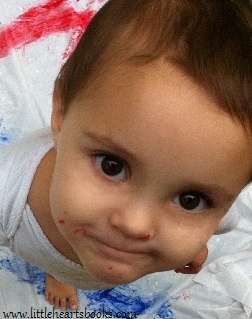 Let’s pack happiness into our children so the baggage they take into adulthood is goodness, confidence, and kindness instead of packing bags of hurt, struggle, and loneliness that will weigh them down for life. ~L.R.Knost
Let’s pack happiness into our children so the baggage they take into adulthood is goodness, confidence, and kindness instead of packing bags of hurt, struggle, and loneliness that will weigh them down for life. ~L.R.Knost
200 Ways to Bless your Children with a Happy Childhood
1.) Float boats in puddles
2.) Ride bikes
3.) Play hopscotch
4.) Blow dandelions
5.) Jump in a bounce house
6.) Take them to a museum
7.) Play hot-potato with water balloons
8.) Make a volcano
9.) Buy them a goldfish
10.) Have funoodle sword fights
11.) Take silly pictures with them in a photo booth
12.) Fix pancakes for dinner
13.) Let them climb trees
14.) Watch your language
15.) Make daisy chains
16.) Play board games and let them win so they’ll feel smart
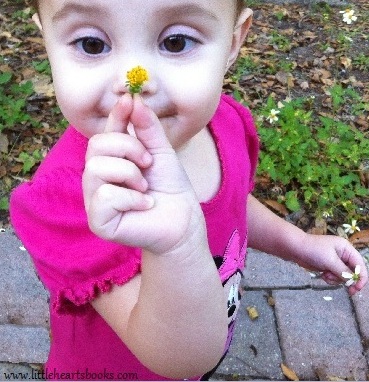 17.) Teach them manners by being polite to them
17.) Teach them manners by being polite to them
18.) Teach them respect by showing them respect
19.) Look at them when they’re talking
20.) Build block towers and knock them down together
21.) Read to them
22.) Laugh at their jokes
23.) When they’re upset say, “I’m here. I’m listening,” and then just be there
24.) Go barefoot in the grass
25.) Thank them sincerely for muddy bouquets of weeds
26.) Pray for them
27.) Pray with them
28.) Tell them the truth
29.) Have wrestling matches & let them win so they’ll feel strong
30.) Let them believe in miracles
31.) Let them see you stand up for what you believe in
32.) Tickle them & stop when they tell you to so they’ll know how to tell someone ‘no’ when they don’t want to be touched
33.) Turn off the television
34.) Have a picnic on the living room floor
35.) Make shadow puppets
36.) Let them become best friends with their grandparents (or adopt a grandparent!)
 37.) Build forts
37.) Build forts
38.) Let them help you fix the toilet
39.) Let them jump in piles of clean laundry
40.) Take them with you when you vote
41.) Have staring contests
42.) Make playing-card buildings
43.) Make a refrigerator box rocket and fly to Mars for dinner with them
44.) Fingerpaint with them
45.) Fingerpaint on them
46.) Let them fingerpaint on you
47.) Tell them corny jokes
48.) Blow bubbles
49.) Jump in puddles
50.) Play football in the mud
51.) Play basketball in the driveway at midnight
52.) Play baseball at the park
53.) Go to their teddy bear tea parties
54.) Play with slinkies on the stairs
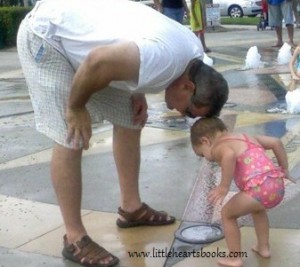 55.) Let them teach you something
55.) Let them teach you something
56.) Put band aids on invisible boo-boos
57.) Scare away the monsters
58.) Sing in the car
59.) Make silly faces in the mirror
60.) Roll in piles of leaves
61.) Turn off the computer
62.) Dance in the rain
63.) Make snow angels (or sand angels!)
64.) Let them help you help someone in need so they’ll learn to serve
65.) Make mudpies
66.) Cook dinner together
67.) Go stargazing
68.) Lay in the grass
69.) Go fishing with real worms
70.) Look for four-leaf clovers
71.) Walk in the woods
72.) Spot shapes in the clouds
73.) Dress up and take them on a date to the symphony
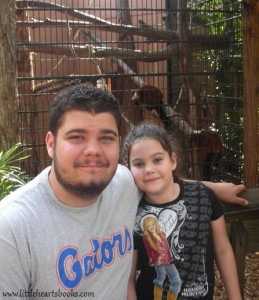 74.) Visit a planetarium
74.) Visit a planetarium
75.) Give them bear hugs
76.) Give them grace
77.) Share a secret
78.) Tell them about God
79.) Tell them stories about your childhood
80.) Get them a kitten
81.) Visit an aquarium
82.) Take them to the zoo
83.) Take them to the library
84.) Let them meet an author or a painter or an astronaut
85.) Let them dream big dreams
86.) Admire their artwork
87.) Make macaroni art together
88.) Go to a sunrise service on Easter
89.) Plant something together and watch it grow
90.) Go to a Passion play
91.) Go to a parade
92.) Play dress up
93.) Go to the beach
94.) Hike up a mountain trail
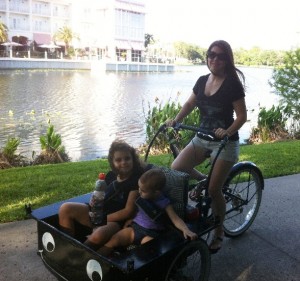 95.) Ride a bicycle-built-for-two (or three!)
95.) Ride a bicycle-built-for-two (or three!)
96.) Hold them when they cry
97.) Forgive them when they mess up
98.) Help them when they struggle
99.) Encourage them to try again when they fail
100.) Let them choose the movie
101.) Listen to their endless stories
102.) Clap when they sing you a song
103.) Share a giant bucket of popcorn at the movies
104.) Rent a projector and hang up a sheet outside to make your own drive-in theater
105.) Take them to an airshow
106.) Take them to a Veteran’s Day parade and let them shake hands with a hero
107.) Tie a towel into a cape and play superheroes
108.) Make Christmas cards for nursing home residents and deliver them together
109.) Throw a surprise half-birthday party
110.) Climb on the furniture and jump over the lava
111.) Make a paper mâché globe
112.) Make paper airplanes and have a fly-off
113.) Fly kites
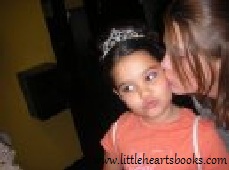 114.) Make sandcastles (or snowmen!)
114.) Make sandcastles (or snowmen!)
115.) Give butterfly kisses
116.) Give Eskimo kisses
117.) Go to a petting zoo and let them pet a goat
118.) Play jump rope
119.) Go to their plays
120.) Go to their games
121.) Teach them chess
122.) Play twister
123.) Let them see you reading
124.) Go to storytimes at bookstores
125.) Go to a farmer’s market
126.) Make s’mores
127.) Camp in the backyard
128.) Cook over a campfire
129.) Build a model airplane
130.) Make up a secret handshake
131.) Wear the macaroni necklaces they make you
132.) Smile when they walk in the room
133.) Kiss them goodbye whenever you leave
134.) Dress up for their tea parties
135.) Play rock-paper-scissors
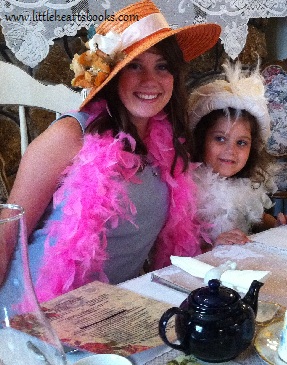 136.) Say please
136.) Say please
137.) Say thank you
138.) Say you’re welcome
139.) Tell them you trust them
140.) Tell them they are good
141.) Tell them you love them every day
142.) Say, “I like you”
143.) Say, “You’re fun to be with”
144.) Tell them you miss them when you’re away from them
145.) Tell them they can always count on you and then be there when they need you
146.) Tell them about times you’ve failed so they know they don’t have to be perfect
147.) Catch fireflies in jars and then let them go
148.) Forgive them so they’ll learn to forgive
149.) Give second chances, third chances, fourth chances…
150.) Race them to the car and let them win so they’ll feel success
151.) Teach them how to skip rocks
152.) Use your gentle hands
153.) Stand up to bullies for them
154.) Tell them what you believe in
155.) Tell them you believe in them
156.) Treat them like they’re priceless so they’ll never doubt their value
157.) Let them hear you whistle while you work so they’ll know joy can be found in everything
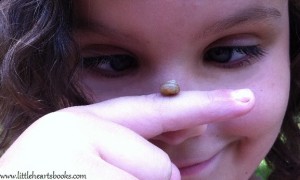 158.) Grab a stick for a sword and slay dragons with them
158.) Grab a stick for a sword and slay dragons with them
159.) Catch ladybugs on your fingers and examine their spots
160.) Share a milkshake
161.) Have a sleepover in their room
162.) Go on a scavenger hunt
163.) Give them a hammer, nails, and scrap wood and watch the magic
164.) Work puzzles together that take weeks to finish
165.) Make grape popsicles and eat them together in the sunshine
166.) Be kind to them so they’ll learn to be kind
167.) Admit it when you’re wrong so they’ll learn to take responsibility for their actions
168.) Say you’re sorry when you mess up so they’ll learn it’s okay to make mistakes
169.) Let them see you cry so they’ll know it’s okay to be human
170.) Tell them you’re on their side
171.) Turn off your cell phone
172.) Build a birdhouse together and let them paint it all the colors of the rainbow
173.) Help them with their homework so they can play outdoors
174.) Play with them
175.) Sprinkle fairy dust on their bed to help them sleep
176.) Let them see you rescue a butterfly caught in a spider’s web so they’ll think you’re a hero
177.) Tell them about the pot of gold at the end of the rainbow and help them search for it
178.) Sit on the porch and wave at the passing cars with them
179.) Take a ride on a train
180.) Take them to see an alligator
181.) Read the funny paper in the newspaper to them
182.) Let them take care of you when you’re sick
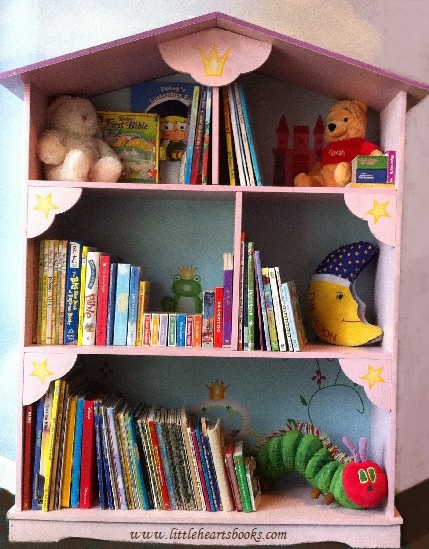 183.) Listen so they’ll learn to listen
183.) Listen so they’ll learn to listen
184.) Care about what they care about so they’ll feel understood
185.) Put others first so they learn sacrifice
186.) Help a neighbor so they’ll understand community
187.) Let them climb into bed with you when they have a bad dream
188.) Make them a cozy reading nook
189.) Squeeze yourself into their reading nook and cuddle up for storytime
190.) Read them fairy tales
191.) Buy them comic books
192.) Make paperchains for the Christmas tree
193.) Have a birthday party for Jesus before opening presents on Christmas morning
194.) Make blessing bags and mail them to our troops
195.) Build bookshelves and start a home library for them
196.) Treat them with compassion so they’ll learn to care
197.) Give them piggyback rides to bed
198.) Read them bedtime stories (and let them choose the book even if it’s the same one every night!)
199.) Show them you love them when they deserve it the least
200.) Live what you want them to learn
“Childhood is a wide-open, sun-drenched, wind-swept field of endless possibilities, experiences, and discoveries. And normal, childlike behaviors are the tumult of brilliant wildflowers sharing their vivid beauty in the riotous yellows of children shrieking and running in the sunshine, the gorgeous blues of children splashing in the sea, the stunning oranges of eyes lighting up in discovery, and the lovely purples of laughter floating on an afternoon breeze. They linger for an all-too-brief season before they’re gone forever, lost in the business and busyness of settling into adulthood. Don’t make them settle too soon.” The Gentle Parent: Positive, Practical, Effective Discipline
Related posts:
In the world of a child wonders are as simple as sticks and sheets, leaves and books, boxes and giggles, and the promise in a rainy day. The Seven Wonders of the World of Childhood
There is such a rush these days to get children sleeping through the night, weaned off the breast, eating solid foods, potty trained, reading independently, and on and on, that we seem to have lost the ability to simply enjoy life as it happens and let our children do the same. A Return to Childhood
On a Winnie the Pooh style ‘long explore’ my little Pooh Bear discovered the world in ways only a toddler can in…The Many Adventures of My Little Pooh Bear
Children who love to read…READ! Engaging children’s hearts in the wonder of reading instead of just training their minds in its mechanics. Raising Bookworms
The evolution of children’s communication proceeds at a steady and relatively predictable pace, though the timing is influenced by factors such as individual personality, cognitive development, home environment, etc. Here’s what to expect through the ages and stages…Whispers Through Time: Communication Through the Ages and Stages of Childhood
From hitting to defiance to tantrums to testing the boundaries and more, here are gentle parenting tools, tips, and techniques… Practical, Gentle, Effective Discipline
25 Reasons NOT to Keep Your Children Busy this Summer
Raising Super Readers~The MARVELous Power of Comic Books!
Playground Confessions~Look Who’s Talking!
 Award-winnning author, L.R.Knost, is the founder and director of the children's rights advocacy and family consulting group, Little Hearts/Gentle Parenting Resources, and Editor-in-Chief of Holistic Parenting Magazine. Books by L.R.Knost include Whispers Through Time: Communication Through the Ages and Stages of Childhood ; Two Thousand Kisses a Day: Gentle Parenting Through the Ages and Stages ; The Gentle Parent: Positive, Practical, Effective Discipline ; and Jesus, the Gentle Parent: Gentle Christian Parenting the first four books in the Little Hearts Handbook gentle parenting series, and children’s picture books Petey’s Listening Ears and the soon-to-be-released Grumpykins series.
Award-winnning author, L.R.Knost, is the founder and director of the children's rights advocacy and family consulting group, Little Hearts/Gentle Parenting Resources, and Editor-in-Chief of Holistic Parenting Magazine. Books by L.R.Knost include Whispers Through Time: Communication Through the Ages and Stages of Childhood ; Two Thousand Kisses a Day: Gentle Parenting Through the Ages and Stages ; The Gentle Parent: Positive, Practical, Effective Discipline ; and Jesus, the Gentle Parent: Gentle Christian Parenting the first four books in the Little Hearts Handbook gentle parenting series, and children’s picture books Petey’s Listening Ears and the soon-to-be-released Grumpykins series.
25 Must-Have Books for Toddler Bookworms
 Bookworm weighs in on must-have books for your children in Little Hearts’ How to Build a Home Library for Bookworms from Tots to Teens series. Check out 25 Must-Have Books for Baby Bookworms and 25 Must-Have Books for Preschool Bookworms, and watch for 25 Must-Have Books for Early Elementary Bookworms, 25 Must-Have Books for Tween Bookworms, 25 Must-Have Books for Teen Bookworms, and 25 Must-Have Books for Young Adult Bookworms in the coming weeks as well as literacy tips, book activities, and book nook ideas!
Bookworm weighs in on must-have books for your children in Little Hearts’ How to Build a Home Library for Bookworms from Tots to Teens series. Check out 25 Must-Have Books for Baby Bookworms and 25 Must-Have Books for Preschool Bookworms, and watch for 25 Must-Have Books for Early Elementary Bookworms, 25 Must-Have Books for Tween Bookworms, 25 Must-Have Books for Teen Bookworms, and 25 Must-Have Books for Young Adult Bookworms in the coming weeks as well as literacy tips, book activities, and book nook ideas!
1.)
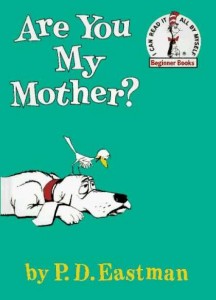 Are You My Mother? By P.D.Eastman (a Dr. Seuss Beginner Book)
Are You My Mother? By P.D.Eastman (a Dr. Seuss Beginner Book)
One of my all-time favorite books for little ones. They love the ‘snort’ and ask me to read the ‘snort’ part over and over again every time they dig this treasured book out of their book basket!
Preview:
Then the little bird saw a Big Thing. “Are you my mother?” said the little bird. The Big Thing said, “SNORT!” “Oh no!” said the little bird, “You are not my mother. You are a Snort!”…
2.)
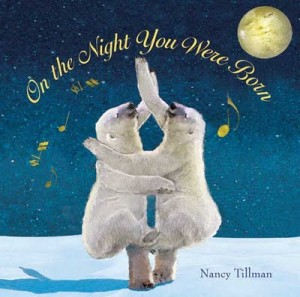 On the Night You Were Born by Nancy Tillman
On the Night You Were Born by Nancy Tillman
This is a sweet and beautifully illustrated book to read to your little ones to remind them that they are a special and wonderful gift, not only to you, but to the world!
Preview:
So enchanted with you were the wind and the rain that they whispered the sound of your wonderful name. It sailed through the farmland, high on the breeze…
3.)
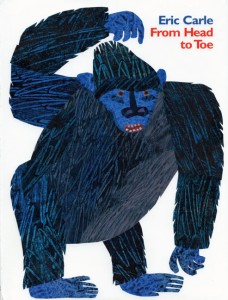 From Head to Toe by Eric Carle
From Head to Toe by Eric Carle
I can do it! I can do it! That’s the toddler chant, and this whimsical book by Eric Carle captures that spirit beautifully as it encourages little ones to stomp, clap, and wiggle with gorillas, giraffes, and other creatures illustrated in Carle’s own unique style. Lots of fun!
Preview:
I am a seal, and I can clap my hands. Can you do it? I am an elephant, and I can stomp my foot, can you do it?
4.)
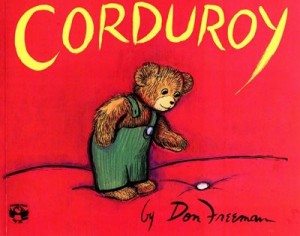 Corduroy by Don Freeman
Corduroy by Don Freeman
All of my children have fallen in love with charming, raggedy little Corduroy from the first time they ‘met’ him while cuddling up for storytime, and he remains a favorite to this day!
Preview:
Corduroy is a bear who once lived in the toy department of a big store. Day after day he waited with all the other animals and dolls for somebody to come along and take him home…
5.)
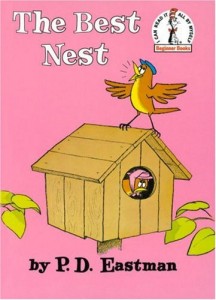 The Best Nest by P.D.Eastman
The Best Nest by P.D.Eastman
A bit of humor just the right size for a little one, a fun adventure, and an easy to follow storyline make this book a definite must-have for toddler bookworms!
Preview:
Mr. Bird was happy. He was so happy he had to sing. This was Mr.Bird’s song: “I love my house. I love my nest. In all the world my nest is best!” Then Mrs. Bird came out of the house. “It’s NOT the best nest!” she said. “I’m tired of this old place…
6.)
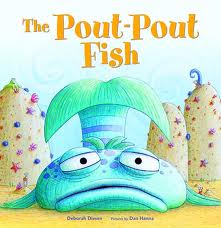 The Pout-Pout Fish by Deborah Diesen
The Pout-Pout Fish by Deborah Diesen
This book is as fun for mommies and daddies as it is for children because you can’t help giggling at the silly pout-pout fish while enjoying the rhythm of the lyrical and humorous story!
Preview:
Deep in the ocean/Where the fish hang out/Lives a glum gloomy swimmer/With an ever-present pout./I’m a pout-pout fish/With a pout-pout face/So I spread the dreary wearies/All over the place…
7.)
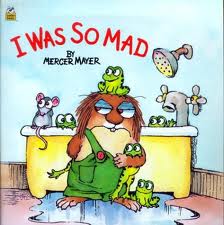 I Was So Mad by Mercer Mayer
I Was So Mad by Mercer Mayer
Rag-tag Little Critter is always getting into scrapes, and this day is no different as his curiosity gets him into trouble time and time again. Your little explorer will certainly relate to this funny little guy, and your heart will melt as you get a glimpse at the frustrations of life through the eyes of a small person in a big world.
Preview:
I wanted to keep some frogs in the bathtub, but mom wouldn’t let me. I was so mad…I wanted to play hide-n-seek in the clean sheets, but grandma said, “No, you can’t.” I was just so mad…
8.)
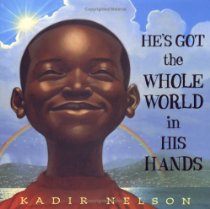 He’s Got the Whole World in His Hands by Kadir Nelson
He’s Got the Whole World in His Hands by Kadir Nelson
Award-winning artist Kadir Nelson’s illustrations capture a multiethnic family and community from a child’s perspective in this visually engaging interpretation of the old spiritual, He’s got the Whole World in His Hands. Intermixed with the charming artistry are the deeply captivating and reassuring lyrics of this staple of American history that you will enjoy introducing to your little one in this unique storybook form.
Preview:
He’s got the whole world in His hands/He’s got the whole world in His hands/He’s got my brothers and my sisters in His hands…
9.)
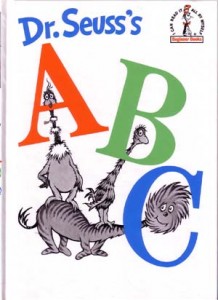 Dr. Seuss’s ABC by Dr. Seuss
Dr. Seuss’s ABC by Dr. Seuss
This is one of the best introductions to the alphabet available because, in addition to its uniquely Seussian illustrations, its trademark Seussical cadence engages little ones’ attention and brings them toddling back for more again and again!
Preview:
Big A, little a, what begins with A? Aunt Annie’s Alligator A-a-a. Big B, little b, what begins with B? Barber, baby, bubbles, and a bumble-bee…
10.)
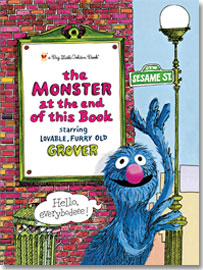 The Monster at the End of this Book by Jon Stone
The Monster at the End of this Book by Jon Stone
Every one of my six children have eagerly asked for this book to be read and reread to them during their early years, including my littlest who is a toddler now. In fact, I’ve had to buy new copies several times through the years to replace the ones that fell apart from overuse! This is a family favorite that I’ll be buying for my grandchildren, no doubt.
Preview:
Listen, I have an idea. If you do not turn any pages, we will never get to the end of this book. And that is good because there is a MONSTER at the end of this book. So please do not turn the page…YOU TURNED THE PAGE! Maybe you do not understand…
11.)
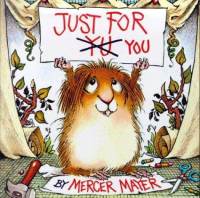 Just For You by Mercer Mayer
Just For You by Mercer Mayer
Little Critter is the quintessential toddler in Just For You, stretching his wings and trying to conquer the monumental tasks of little-personhood such as eating a sandwich for lunch (minus the crusts, of course!), just for his mama.
Preview:
I tried to take a nap just for you, but the bed was too bouncy. I tried not to splash in my bath just for you, but there was a storm…
12.)
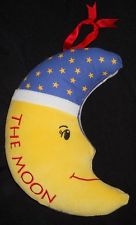 The Moon by Eli A. Cantillion
The Moon by Eli A. Cantillion
This is always a bedtime favorite for my little ones. It’s a soft, fuzzy book with a gentle rhythm that gets them all ready for sleepy-time and sweet dreams.
Preview:
When I am getting sleepy and snuggling in my bed, the moon is just rising to go to work instead. He winks at all the children and whispers them goodnight, them hums a gentle lullaby and switches on his light…
13.)
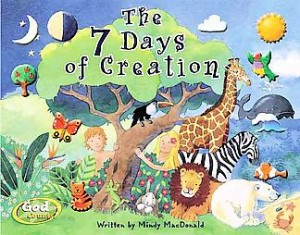 The 7 Days of Creation by Mindy MacDonald
The 7 Days of Creation by Mindy MacDonald
This colorful board book with its cut-outs, raised trees and butterflies, and sing-song rhyming verses is one of my little ones’ most frequently requested books!
Preview:
God made all that you can see, mountains, rivers, and every tree. Every person in every land-He made us all with His own hand…
14.)
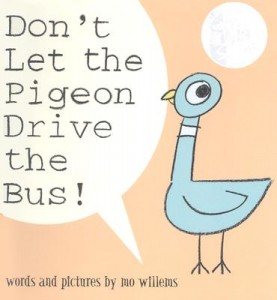 Don’t Let the Pigeon Drive the Bus! by Mo Willems
Don’t Let the Pigeon Drive the Bus! by Mo Willems
If you’ve ever had a determined child reason with you using their own unique perception of what ‘reasonable’ entails, you’ll find this book as humorous as your little one will!
Preview:
Hey, I’ve got an idea. Let’s play ‘Drive the bus’! I’ll go first! C’mon, just once around the block! I’ll be your best friend…
15.)
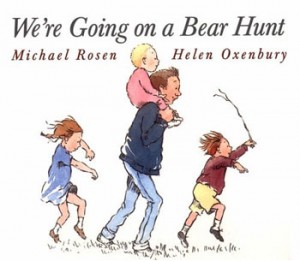 We’re Going on a Bear Hunt by Michael Rosen
We’re Going on a Bear Hunt by Michael Rosen
The beauty of this book is the fun use of onomatopoeias that every little one will enjoy saying along with you as you read this to them again and again and again!
Preview:
We’re going on a bear hunt. We’re going to catch a big one. What a beautiful day! We’re not scared. Oh-oh! Grass! Long, wavy grass. We can’t go over it. We can’t go under it. Oh no! We’ve got to go through it! Swishy swashy! Swishy swashy! Swishy swashy…
16.)
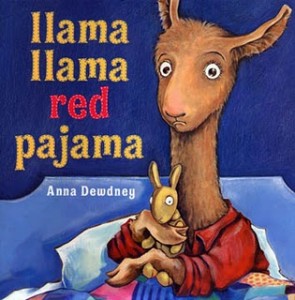 Llama Llama Red Pajama by Anna Dewdney
Llama Llama Red Pajama by Anna Dewdney
In this sweet, lyrical story a little llama struggles with bedtime separation from his Mama llama until she comes and soothes his fears and helps him fall asleep. It’s charm is not only in its adorable illustrations, but in the reality of the bedtime struggles it depicts with gentle humor and empathy.
Preview:
Llama llama red pajama reads a story with his mama. Mama kisses baby’s hair. Mama llama goes downstairs. Llama llama red pajama feels alone without his mama…
17.)
 When My Baby Dreams by Adele Enersen
When My Baby Dreams by Adele Enersen
Mommies and Daddies will love this book as much as their little ones will with its whimsical photos of a sleeping baby traveling the world, sailing the seas, and resting among the moon and the stars in this unique and sweetly humorous first book from new mama, Adele Enersen.
When my baby dreams of traveling the world…she starts her journey on the back of an Indian elephant…
18.)
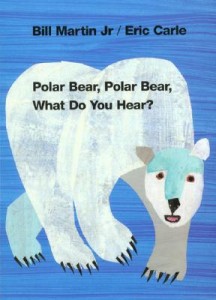 Polar Bear, Polar Bear, What Do You Hear? by Bill Martin Jr.
Polar Bear, Polar Bear, What Do You Hear? by Bill Martin Jr.
This is a fun book my little ones enjoy ‘reading’ along with me. With its simple, rhythmic cadence and repetitious wording, it makes it easy for small children to memorize and feel like they are already successful readers!
Preview:
Polar Bear, Polar Bear, what do you hear? I hear a lion roaring in my ear. Lion, Lion, what do you hear? I hear a hippopotamus snorting in my ear…
19.)
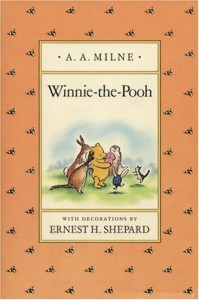 Classic Winnie-the-Pooh by A.A.Milne
Classic Winnie-the-Pooh by A.A.Milne
While all of my children (and I!) love the Disney version of Pooh, the classic books and illustrations are treasures that every little one needs to be introduced to. There is just so much depth and richness of story and meticulous detail in the classic version that is lost in the glossy, albeit fun and adorable, Disney Pooh. Your little ones will love discovering new things about their favorite “silly old bear” in these re-released books!
Preview:
Once upon a time, a very long time ago, about last Friday, Winnie-the-Pooh lived in a forest all by himself under the name Sanders. “What does ‘under the name’ mean?” asked Christopher Robin…
20.)
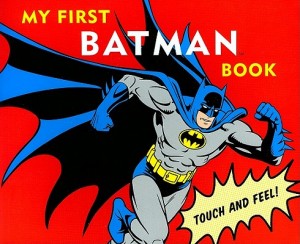 My First Batman Book (Touch and Feel Board Book) by David Katz
My First Batman Book (Touch and Feel Board Book) by David Katz
What could possibly be better for your little superhero than a lift-the-flap, touch-n-feel, interactive Batman board book? Not much! This little book is awesomely entertaining for little hands and a great introduction to the wonderful world of superheroes.
Preview:
Batman and his pal Robin zoom away in the Batmobile to protect the people of Gotham city…
21.)
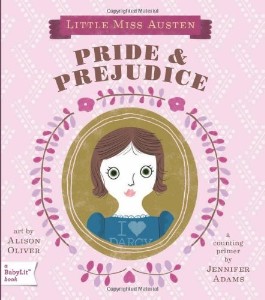 Pride & Prejudice: A Babylit Board Book by Jennifer Adams
Pride & Prejudice: A Babylit Board Book by Jennifer Adams
With vintage-looking, Regency-inspired illustrations and a charm that honors Jane Austen’s lovely style of writing, this whimsical ‘counting’ board book introduces little people to the characters and setting in one of my all-time favorite books!
Preview:
1 English village; 2 Rich gentlemen (Mr. Bingley & Mr. Darcy); 3 Houses (Longbourn, Netherfield & Pemberly)…
22.)
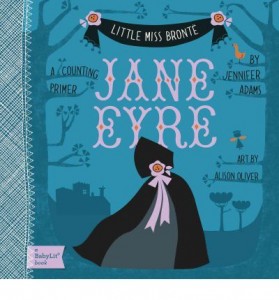 Jane Eyre: A Babylit Board Book by Jennifer Adams
Jane Eyre: A Babylit Board Book by Jennifer Adams
While this is another ‘counting’ book, that’s secondary to its real purpose of introducing a new generation of readers to classic literature. I love the iconic references to items, quotes, and characters (always have had a crush on Mr. Rochester…sigh) found in Charlotte Bronte’s classic novel, Jane Eyre, in this unique little board book from Jennifer Adams.
Preview:
1 Governess; 2 Trunks; 3 Candles (“It is always dangerous to keep a candle lit at night”)…
23.)
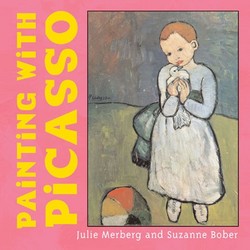 Painting with Picasso by Julie Merberg
Painting with Picasso by Julie Merberg
This isn’t my favorite of the Mini Masters series, but it’s an interesting introduction to Picasso’s unique style and gives a good overview of his abstract paintings as well as his more realistic pieces accompanied by simple, rhythmic verses that your little ones will enjoy while being exposed to the work of a master!
Preview:
An artist paints people in all different places and captures the feelings that show in their faces…
24.)
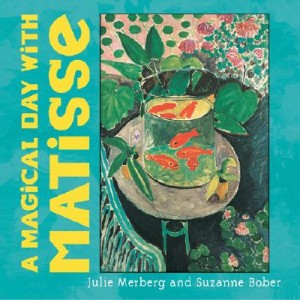 A Magical Day with Matisse by Julie Merberg
A Magical Day with Matisse by Julie Merberg
The fun and lively poetic quality of the verses in this Mini Master board book will keep your little one entranced as you share the lovely reproductions of Matisse’s work. One note, though, is that it does contain some of his non-anatomically detailed nudes (no clothes, but no body parts depicted, either), so be aware of that if it’s an issue for you.
Preview:
Grab your hat! Come out and play where sailboats bob on a blueberry bay…
25.)
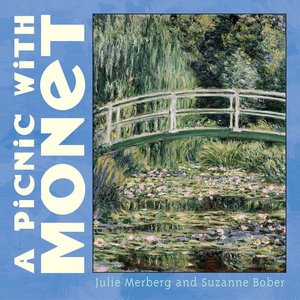 A Picnic with Monet by Julie Merberg
A Picnic with Monet by Julie Merberg
The light and airy poetry that accompanies this introduction to Monet truly honors the enchanting, dreamy quality of his work. Little ones will enjoy this magical journey through the countryside in this lovely marriage of art and verse!
Preview:
Through a field of poppies, red and bright, past a flock of turkeys, feathery white…
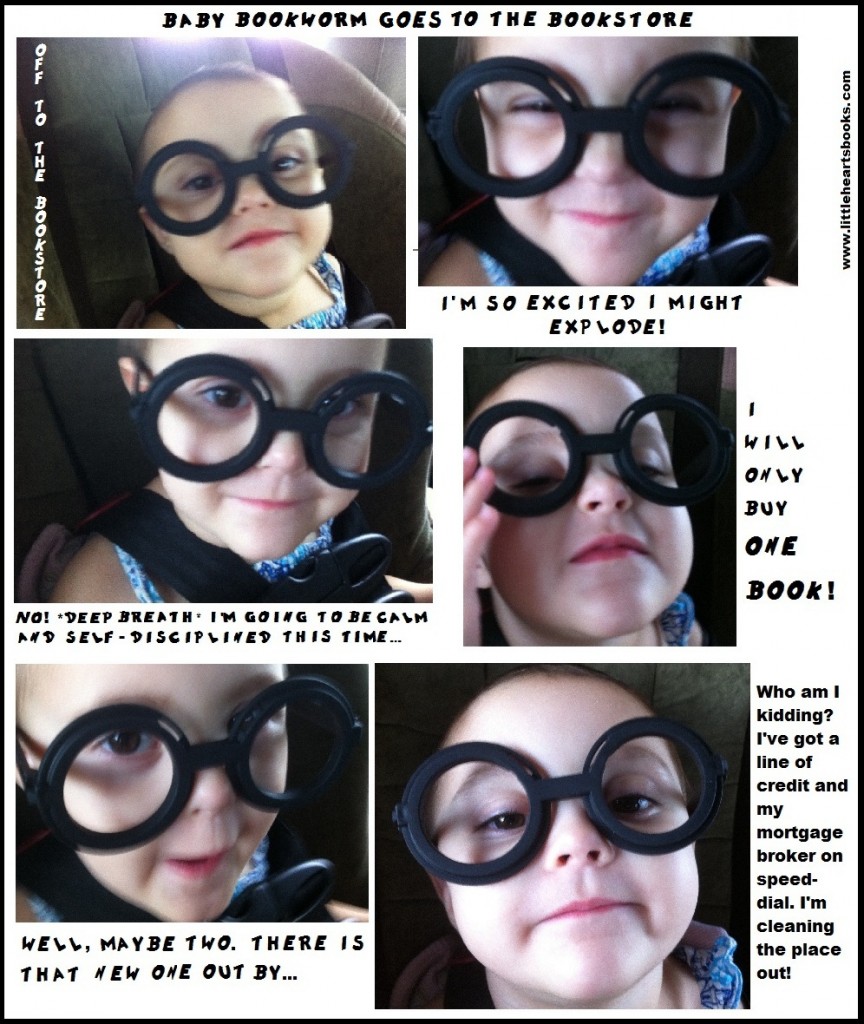 Note: Many of the books in the 25 Must-Have Books for Baby Bookworms and the 25 Must-Have Books for Preschool Bookworms are great for toddlers, as well, and vice-versa. 🙂
Note: Many of the books in the 25 Must-Have Books for Baby Bookworms and the 25 Must-Have Books for Preschool Bookworms are great for toddlers, as well, and vice-versa. 🙂
And here are some simple and economical ideas for starting a home library for your little bookworm:
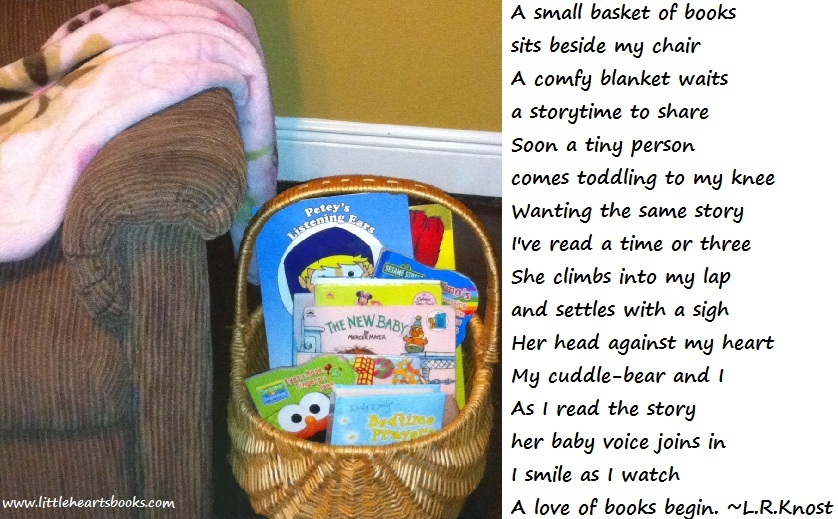
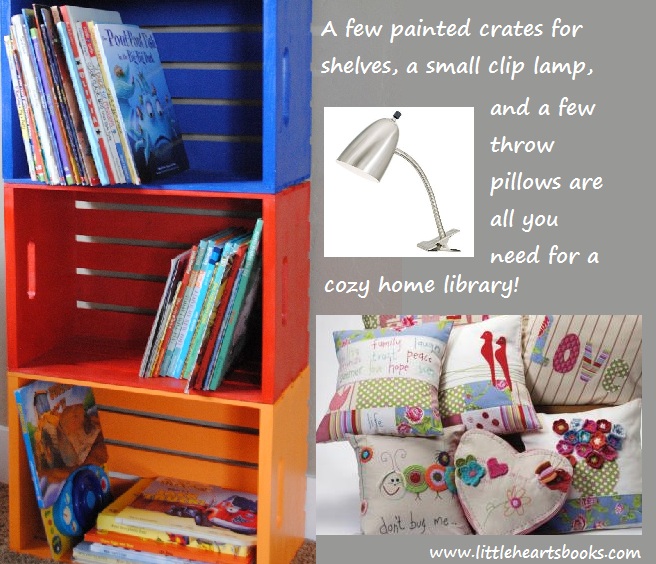
Related posts:
Children who love to read…READ! Engaging children’s hearts in the wonder of reading instead of just training their minds in its mechanics. Raising Bookworms
In the world of a child wonders are as simple as sticks and sheets, leaves and books, boxes and giggles, and the promise in a rainy day. The Seven Wonders of the World of Childhood
Fairy tales in childhood are stepping stones throughout life, leading the way through trouble and trial. The value of fairy tales lies not in a brief literary escape from reality, but in the gift of hope that goodness truly is more powerful than evil and that even the darkest reality can lead to a Happily Ever After. Do not take that gift of hope lightly. It has the power to conquer despair in the midst of sorrow, to light the darkness in the valleys of life, to whisper “One more time” in the face of failure. Hope is what gives life to dreams, making the fairy tale the reality. Fairy Tales~The Lost Value of ‘Once upon a time…’
There is such a rush these days to get children sleeping through the night, weaned off the breast, eating solid foods, potty trained, reading independently, and on and on, that we seem to have lost the ability to simply enjoy life as it happens and let our children do the same. A Return to Childhood
On a Winnie the Pooh style ‘long explore’ my little Pooh Bear discovered the world in ways only a toddler can in…The Many Adventures of My Little Pooh Bear
Successful reading means far more than possessing the ability to read. Engaging the hearts of students moves reading success beyond a life skill and turns it into a life style. And graphic novels are too powerful of a tool in our arsenal to be disregarded because of pride or prejudice. Raising Super Readers~The MARVELous Power of Comic Books!
Parenting choices strongly impact the level and type of attachment a child develops and, by extension, the development of a love of learning. A love of learning grows when it isn’t stifled by fear or stress or regimented by over-structuring or a focus on achievement or competition. Parents fostering a healthy attachment are thus also fostering a life-long love of learning in their children. Love, Play, Learn!
 Award-winnning author, L.R.Knost, is the founder and director of the children's rights advocacy and family consulting group, Little Hearts/Gentle Parenting Resources, and Editor-in-Chief of Holistic Parenting Magazine. Books by L.R.Knost include Whispers Through Time: Communication Through the Ages and Stages of Childhood ; Two Thousand Kisses a Day: Gentle Parenting Through the Ages and Stages ; The Gentle Parent: Positive, Practical, Effective Discipline ; and Jesus, the Gentle Parent: Gentle Christian Parenting the first four books in the Little Hearts Handbook gentle parenting series, and children’s picture books Petey’s Listening Ears and the soon-to-be-released Grumpykins series.
Award-winnning author, L.R.Knost, is the founder and director of the children's rights advocacy and family consulting group, Little Hearts/Gentle Parenting Resources, and Editor-in-Chief of Holistic Parenting Magazine. Books by L.R.Knost include Whispers Through Time: Communication Through the Ages and Stages of Childhood ; Two Thousand Kisses a Day: Gentle Parenting Through the Ages and Stages ; The Gentle Parent: Positive, Practical, Effective Discipline ; and Jesus, the Gentle Parent: Gentle Christian Parenting the first four books in the Little Hearts Handbook gentle parenting series, and children’s picture books Petey’s Listening Ears and the soon-to-be-released Grumpykins series.
25 Must-Have Books for Baby Bookworms
 Bookworm weighs in on must-have books for your children in Little Hearts’ How to Build a Home Library for Bookworms from Tots to Teens series. Check out 25 Must-Have Books for Toddler Bookworms and 25 Must-Have Books for Preschool Bookworms, and watch for 25 Must-Have Books for Early Elementary Bookworms, 25 Must-Have Books for Tween Bookworms, 25 Must-Have Books for Teen Bookworms, and 25 Must-Have Books for Young Adult Bookworms in the coming weeks as well as literacy tips, book activities, and book nook ideas!
Bookworm weighs in on must-have books for your children in Little Hearts’ How to Build a Home Library for Bookworms from Tots to Teens series. Check out 25 Must-Have Books for Toddler Bookworms and 25 Must-Have Books for Preschool Bookworms, and watch for 25 Must-Have Books for Early Elementary Bookworms, 25 Must-Have Books for Tween Bookworms, 25 Must-Have Books for Teen Bookworms, and 25 Must-Have Books for Young Adult Bookworms in the coming weeks as well as literacy tips, book activities, and book nook ideas!
1.)
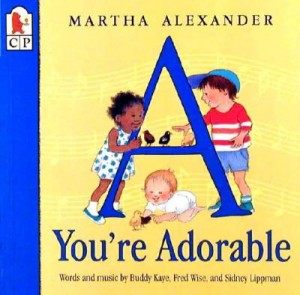 ‘A’ You’re Adorable by Martha Alexander
‘A’ You’re Adorable by Martha Alexander
This sweet alphabet board book is based on a song popularized by Perry Como in the 1940’s.
Preview:
A, you‘re adorable; B, you’re so beautiful; C, you’re a cutie full of charms; D, you’re a darling; and E, you’re exciting; and F, you’re a feather in my arms; G, you look good to me; H, you’re so heavenly…
2.)
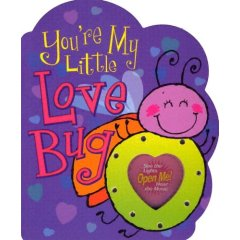 You’re My Little Lovebug by Heidi R. Weimer
You’re My Little Lovebug by Heidi R. Weimer
My own little lovebug adores this book with its catchy and silly rhymes and sweet message.
Preview:
You’re my little lovebug/My cuddly kangaroo/My funny bunny sweet as honey/All of this is true…
3.)
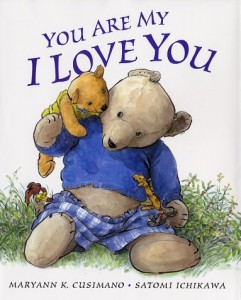 You Are My I Love You by Maryann K. Cusimano
You Are My I Love You by Maryann K. Cusimano
This is one of my all-time favorites with its gentle cadence and touching rhymes.
Preview:
I am your parent; You are my child / I am your quiet place; You are my wild / I am your calm face; You are my giggle / I am your wait; You are my wiggle…
4.)
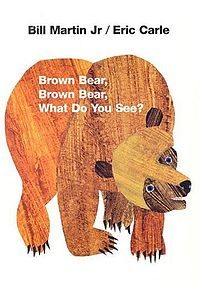 Brown Bear, Brown Bear, What Do You See? by Bill Martin Jr.
Brown Bear, Brown Bear, What Do You See? by Bill Martin Jr.
This iconic book from the 1960’s offers an energetic, rhythmic introduction to colors and animals in a unique collage of tissue-paper art.
Preview:
Brown Bear, Brown Bear, what do you see? I see a Red Bird looking at me. Red bird, Red bird, what do you see? I see a Yellow Duck looking at me…
5.)
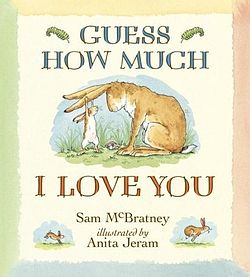 Guess How Much I Love You by Sam McBratney
Guess How Much I Love You by Sam McBratney
With artwork as sweet and mellow as its gently humorous message, this is one of the best bedtime books I’ve ever read to my little ones.
Preview:
Little Nutbrown Hare, who was going to bed, held on tight to Big Nutbrown Hare’s very long ears. He wanted to be sure that Big Nutbrown Hare was listening. “Guess how much I love you,” he said…
6.)
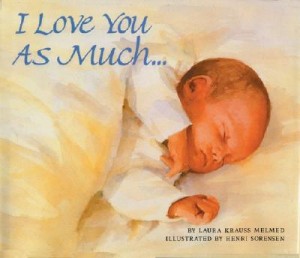 I Love You As Much… by Laura Krauss Melmed
I Love You As Much… by Laura Krauss Melmed
The gorgeous illustrations of mother animals with their babies are enough to make this book a keeper, but the lilting lullaby quality of the wording make it a lovely and thoughtful baby shower gift, as well!
Preview:
Said the mother camel to her child, “I love you as much as the desert is dry”. Said the mother goose to her child, “I love you as much as the endless blue sky”…
7.)
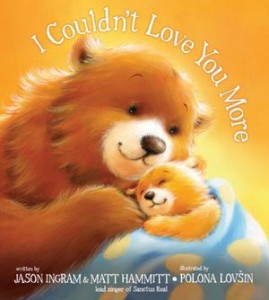 I Couldn’t Love You More by Jason Ingram
I Couldn’t Love You More by Jason Ingram
Written by singer/songwriter Jason Ingram for his unborn son diagnosed with a serious heart defect, this gorgeously illustrated book is based on the words to a touching and lovely lullaby your little ones will enjoy cuddling up to again and again.
Preview:
I couldn’t love you more. But Somebody does. In the night, He is with you. At morning’s light, He is with you. Do not fear…
8.)
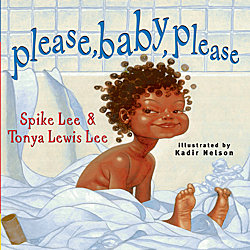 Please, Baby, Please by Spike Lee
Please, Baby, Please by Spike Lee
Not only is the artwork in this book heart-meltingly adorable, but this little person getting into one thing after another with her natural curiosity and playful demeanor are so, so, so real that mamas and daddies everywhere will be grinning and nodding their heads while reading this to their own adorable little explorers.
Preview:
Go back to bed, please, baby, please. Not on your head, baby, baby, baby, please…
9.)
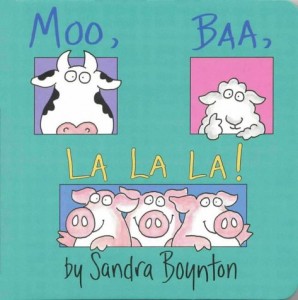 Moo Baa La La La by Sandra Boynton
Moo Baa La La La by Sandra Boynton
This is a cute little rhyming board book that will make your little one giggle while introducing them to animal sounds (Although, if you want to be strictly literal, pigs don’t actually say, “La, la, la,” in case there was any confusion 🙂 )
Preview:
The cow says MOO! The sheep says BAA! Three singing pigs say LA LA LA…
10.)
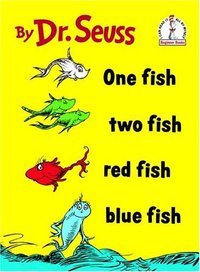 One fish, two fish, red fish, blue fish by Dr Seuss
One fish, two fish, red fish, blue fish by Dr Seuss
Always one of my children’s first Dr. Seuss favorites with its fun and silly rhymes, lively cadence, and engagingly colorful illustrations!
Preview:
One fish, two fish, red fish, blue fish. Black fish, blue fish, old fish, new fish. This one has a little star. This one has a little car. Say! What a lot of fish there are…
11.)
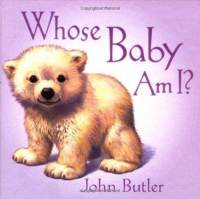 Whose Baby Am I? by John Butler
Whose Baby Am I? by John Butler
These baby animal illustrations by top wildlife artist John Butler are beyond adorable! And while sharing this sweet little book with your baby, you’ll be introducing the concept of which animal babies belong with which mothers. So, so cute!
Preview:
Whose baby am I? I am an owl baby! Whose baby am I? I am a koala baby…
12.)
 Global Babies by The Global Fund for Children
Global Babies by The Global Fund for Children
My baby loves looking at pictures of other babies, and this book with its gorgeous photos of babies from around the world kept her riveted. I loved the many cultures and ethnicities represented along with the message of sameness in the midst of our differences.
Preview:
Wherever they live, wherever they go, whatever they where, whatever they feel…
13.)
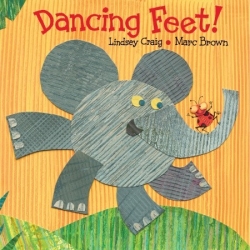 Dancing Feet by Lindsey Craig
Dancing Feet by Lindsey Craig
A cute little board book with a lively rhythm and musical rhymes that will have your little ones dancing along with the beat!
Preview:
Ladybugs are dancing on tippety feet! Tippety! Tippety! Happy feet! Stompity! Stompity! Big grey feet! Who is dancing that stompity beat? Elephant is dancing on stompity feet…
14.)
 Baby’s First Bible by Colin and Moira MacLean
Baby’s First Bible by Colin and Moira MacLean
This cute and colorful board book introduces little ones to Bible stories in simple rhymes, verses, and engaging illustrations. One of my children’s favorites!
Preview:
Flowers and tress, the sun way up high, fish in the ocean, birds that can fly! All kinds of creatures, big ones and small, with Adam and Eve taking care of them all…
15.)
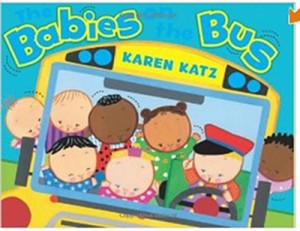 Babies on the Bus by Karen Katz
Babies on the Bus by Karen Katz
This is a cute way to introduce babies to the many beautiful colors people come in around the world while entertaining them with the classic children’s song ‘Wheels on the Bus.’
Preview:
The babies on the bus sing, “La, la, la. La, la, la. La, la, la.” The babies on the bus sing, “La, la, la.” All through the town. The wheels on the bus go round and round, round and round…
16.)
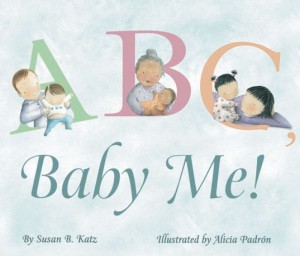 ABC Baby Me! by Susan B. Katz
ABC Baby Me! by Susan B. Katz
This little board book isn’t the least bit boring with its gentle rhythm and sweet artwork that also introduces little ones to the alphabet!
Preview:
Adore me. Bathe me. Cuddle me, too. Diaper me. Encourage me. Fix my boo-boo…
17.)
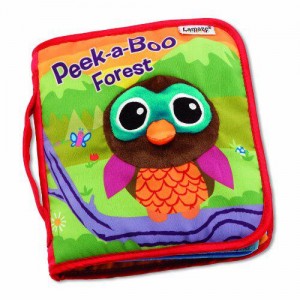 Peek-a-boo Forest by Lamaze Books
Peek-a-boo Forest by Lamaze Books
What baby doesn’t love peek-a-boo? This adorable cloth book combines a baby’s love for peek-a-boo with cute little rhythms and rhymes…win-win!
Preview:
Who is sleeping deep down there? Peek-a-boo! It’s the bear!
18.)
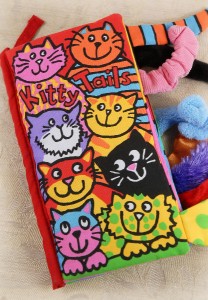 Kitten Tails by Jellycat
Kitten Tails by Jellycat
This is a brilliant cloth book for little bookworms who enjoy munching on books as much as they enjoy you reading them!
Preview:
Wrinkly tail, Smooth tail, Furry tail, Skinny tail…
19.)
 Haiku Baby by Betsy E. Snyder
Haiku Baby by Betsy E. Snyder
This small book with its simple illustrations of birds and animals, sunshine and snowflakes, will capture your little ones’ interest as you read them one delightful haiku after another.
Preview:
In tickley-toe grass,
a buttercup offers up
yellow nose kisses
20.)
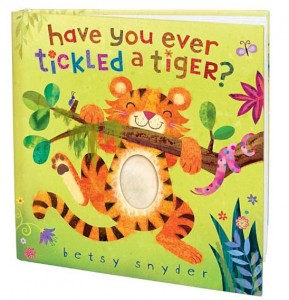 Have You Ever Tickled a Tiger? by Betsy E. Snyder
Have You Ever Tickled a Tiger? by Betsy E. Snyder
This adorable little interactive board book invites little ones to touch and poke and tickle their way through a jungle of cute animals and silly rhymes.
Preview:
Have you ever fluffed an ostrich? Say “coochie-coo” when you tickle her wing-it’s a fluffy, puffy, feathery thing…
21.)
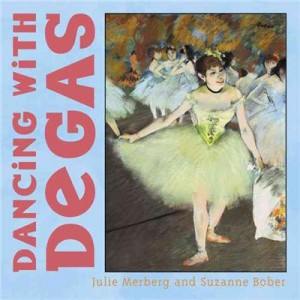 Dancing with Degas by Julie Merberg
Dancing with Degas by Julie Merberg
Lovely in form and flowing with poetry that honors the spirit of Degas, this small book moves with the cadence of the dancers as they plie and pirouette through painting after painting.
Preview:
Stretching legs and pointing toes, practice makes perfect for each pretty pose. The teacher counts 1, 2, 3, 4, and dancers spin across the floor…
22.)
 In the Garden with Van Gogh by Julie Merberg
In the Garden with Van Gogh by Julie Merberg
In poetic form that is a little dreamy, a little staccato, just like Van Gogh’s distinctive painting style, this little board book captures the essence of this eclectic and earthy artist beautifully.
Preview:
Plant and pick, sow and reap, all things that grow need time for sleep, in the quiet light of a starry night…
23.)
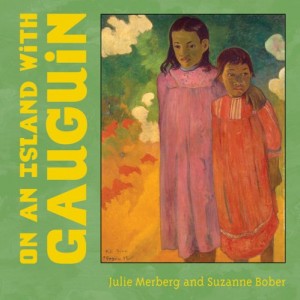 On an Island with Gauguin by Julie Merberg
On an Island with Gauguin by Julie Merberg
I absolutely love this introduction to the art of Gauguin with its rhythmic pacing and lyrical poetry that weaves the spirit of Gauguin’s paintings into words. So, so beautiful!
Preview:
On an island in the warm South Seas, there a village nestled among the trees. Down a bright green path from a small brown hut, a man chops wood while peacocks strut…
24.)
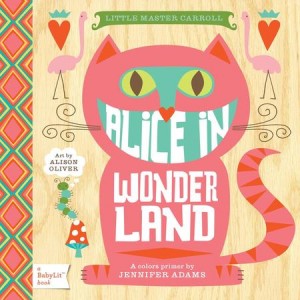 Alice in Wonderland: A Babylit Board Book by Jennifer Adams
Alice in Wonderland: A Babylit Board Book by Jennifer Adams
Vintage-looking artwork honors the era of this classic Lewis Carroll novel while introducing little ones to the timeless characters, making quirky references to classic scenes, and sharing some color fun along the way.
Preview:
White rabbit (Don’t be late!). Black shoes (Down the rabbit hole!). Purple bottle (Drink me!). Blue caterpillar (Who are you?)…
25.)
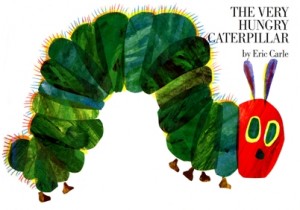 The Very Hungry Caterpillar by Eric Carle
The Very Hungry Caterpillar by Eric Carle
In this popular story, a little caterpillar gets bigger and bigger and bigger as he eats his way through the days of the week, introducing numbers, foods, and the life-cycle of a butterfly along the way!
Preview:
In the light of the moon, a little egg lay on a leaf. One Sunday morning the warm sun came up and ‘Pop!’ out of the egg came a tiny and very hungry caterpillar. He started to look for some food. On Monday, he ate through one apple. But he was still hungry…
~~~~~~~~~~~~~~
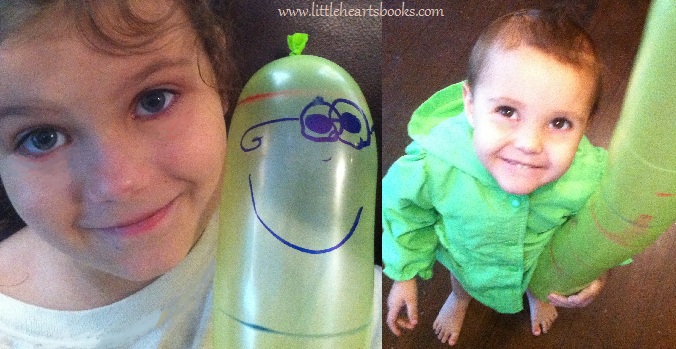 Don’t forget to check out 25 Must-Have Books for Toddler Bookworms and 25 Must-Have Books for Preschool Bookworms!
Don’t forget to check out 25 Must-Have Books for Toddler Bookworms and 25 Must-Have Books for Preschool Bookworms!
Here are my two youngest playing with bookworms they made from super long ‘rocket’ balloons. ♥
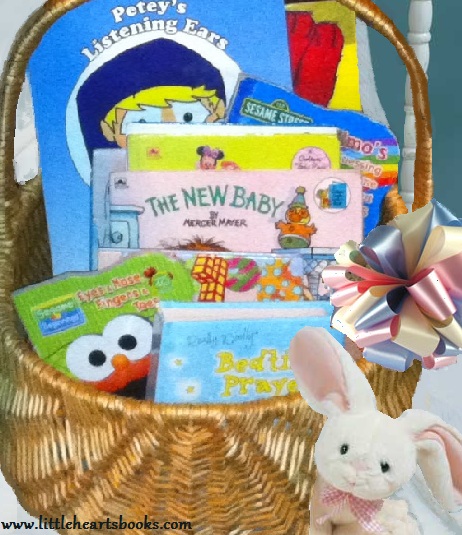 If you’re looking for baby shower ideas or new arrival gifts, how about a gift basket with a set of starter library books! Click on the pictures below to check out some links with more awesome ideas:
If you’re looking for baby shower ideas or new arrival gifts, how about a gift basket with a set of starter library books! Click on the pictures below to check out some links with more awesome ideas:
Source: bumpsmitten.com via Laughing Giraffe Books on Pinterest
Related posts:
Children who love to read…READ! Engaging children’s hearts in the wonder of reading instead of just training their minds in its mechanics. Raising Bookworms
In the world of a child wonders are as simple as sticks and sheets, leaves and books, boxes and giggles, and the promise in a rainy day. The Seven Wonders of the World of Childhood
Fairy tales in childhood are stepping stones throughout life, leading the way through trouble and trial. The value of fairy tales lies not in a brief literary escape from reality, but in the gift of hope that goodness truly is more powerful than evil and that even the darkest reality can lead to a Happily Ever After. Do not take that gift of hope lightly. It has the power to conquer despair in the midst of sorrow, to light the darkness in the valleys of life, to whisper “One more time” in the face of failure. Hope is what gives life to dreams, making the fairy tale the reality. Fairy Tales~The Lost Value of ‘Once upon a time…’
There is such a rush these days to get children sleeping through the night, weaned off the breast, eating solid foods, potty trained, reading independently, and on and on, that we seem to have lost the ability to simply enjoy life as it happens and let our children do the same. A Return to Childhood
On a Winnie the Pooh style ‘long explore’ my little Pooh Bear discovered the world in ways only a toddler can in…The Many Adventures of My Little Pooh Bear
Successful reading means far more than possessing the ability to read. Engaging the hearts of students moves reading success beyond a life skill and turns it into a life style. And graphic novels are too powerful of a tool in our arsenal to be disregarded because of pride or prejudice. Raising Super Readers~The MARVELous Power of Comic Books!
Parenting choices strongly impact the level and type of attachment a child develops and, by extension, the development of a love of learning. A love of learning grows when it isn’t stifled by fear or stress or regimented by over-structuring or a focus on achievement or competition. Parents fostering a healthy attachment are thus also fostering a life-long love of learning in their children. Love, Play, Learn!
If you give a toddler a book
He’ll climb into your lap
While he’s in your lap
He might lay his head on your chest
When he lays his head on your chest
He’ll hear your heartbeat
When he hears your heartbeat
He’ll probably ask if you can hear… If You Give A Toddler A Book…
 Award-winnning author, L.R.Knost, is the founder and director of the children's rights advocacy and family consulting group, Little Hearts/Gentle Parenting Resources, and Editor-in-Chief of Holistic Parenting Magazine. Books by L.R.Knost include Whispers Through Time: Communication Through the Ages and Stages of Childhood ; Two Thousand Kisses a Day: Gentle Parenting Through the Ages and Stages ; The Gentle Parent: Positive, Practical, Effective Discipline ; and Jesus, the Gentle Parent: Gentle Christian Parenting the first four books in the Little Hearts Handbook gentle parenting series, and children’s picture books Petey’s Listening Ears and the soon-to-be-released Grumpykins series.
Award-winnning author, L.R.Knost, is the founder and director of the children's rights advocacy and family consulting group, Little Hearts/Gentle Parenting Resources, and Editor-in-Chief of Holistic Parenting Magazine. Books by L.R.Knost include Whispers Through Time: Communication Through the Ages and Stages of Childhood ; Two Thousand Kisses a Day: Gentle Parenting Through the Ages and Stages ; The Gentle Parent: Positive, Practical, Effective Discipline ; and Jesus, the Gentle Parent: Gentle Christian Parenting the first four books in the Little Hearts Handbook gentle parenting series, and children’s picture books Petey’s Listening Ears and the soon-to-be-released Grumpykins series.
Fairy Tales~The Lost Treasure of ‘Once upon a time…’
[Portions reprinted with permission from Raising Bookworms: Tips, Tools & Techniques for Sharing a Love of Reading with Children by L.R.Knost available June 2014; Two Thousand Kisses a Day: Gentle Parenting Through the Ages and Stages by L.R.Knost now available.]
~~~~~~~
Fairy tales do not tell children that dragons exist. Children already know that dragons exist. Fairy tales tell children the dragons can be beaten.
~ G. K. Chesterton
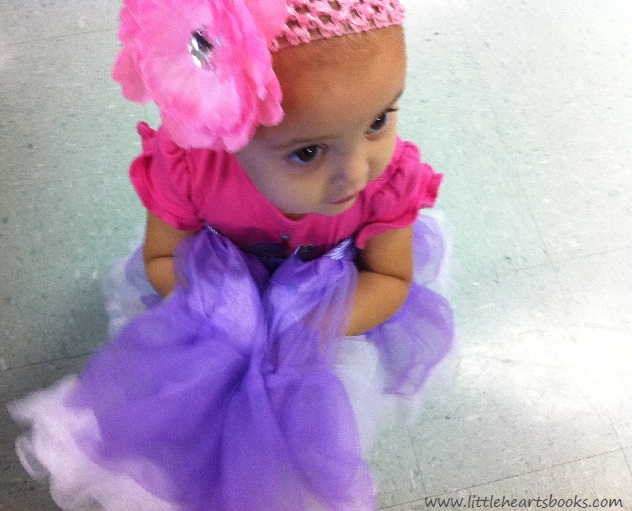 Fairy tales and folklore, those purveyors of ancient truths passed from one generation to the next, first through oral tradition, then in gloriously illustrated text, have fallen out of favor off and on throughout the centuries. They’ve been deemed outlandish, scandalous, frivolous, sexist, childish, etc. depending on what culture or era is doing the labeling at the time.
Fairy tales and folklore, those purveyors of ancient truths passed from one generation to the next, first through oral tradition, then in gloriously illustrated text, have fallen out of favor off and on throughout the centuries. They’ve been deemed outlandish, scandalous, frivolous, sexist, childish, etc. depending on what culture or era is doing the labeling at the time.
The tragedy and travesty of such labeling is found in the loss of imagery, creativity, wonder, and awe engendered by the retelling of the “Once upon a time…” tales of old. It is found in the generations who missed the life lessons woven into the colorful tapestry of timeless storytelling and who were never gifted with the wealth of beauty, richness, and depth to be found in hearing and reading the wisdom of past generations in the artistry of the wordsmith.
There is not only great literary value to fairy tales, but great life value as well. In a literary sense, fairy tales are an excellent tool for teaching characterization, plot, setting, mood, tone, style, and more. Fairy tales are also excellent teaching tools for reading because they hold children’s attention through mesmerizing plot twists, exciting action scenes, and heart-pounding drama. But beyond the literary lessons lie deep life lessons of good triumphing over evil, of kindness winning in the face of cruelty, of hope kept alive in the depths of despair, of transformation, love, and second chances.
In the classic tale of Cinderella, a young woman shows her strength of character by clinging to hope and goodness and kindness in the face of terrible loss and inhumane treatment. She returns kindness for selfishness at the hands of her stepsisters and humility for cruelty at the hands of her stepmother. And through it all, her inner beauty blossoms like a wildflower breaking through a rocky, inhospitable terrain. The reward for her goodness takes the form of a fairy godmother, a prince charming, and her very own Happily Ever After. Life lesson~Good truly does have the power to triumph over evil.
In Snow White, a young princess is mistreated and cast out by a wicked queen who wants not only the throne, but the vain prestige of singular beauty for herself. In the face of this harsh reality, Snow White befriends a band of misfits and, with a gentleness and joy that wins even the grumpiest heart, sets out to make the best of her harsh circumstances, showing a strength of character that we would all do well to emulate. Her persistence and goodness are rewarded with the loyalty and friendship of her goodhearted band of misfits and a new life and love in her own Happily Ever After. Life lesson~Kindness can, indeed, overcome cruelty.
In The Elves and the Shoemaker, a hardworking man of strength and character stays the course, day after day, clinging to hope and choosing honesty, goodness, and humility over profit. In the face of mounting despair and imminent loss, his persistence and goodness are rewarded with the help of some busy little friends who save his home and shop and elevate his artistry to the level of greatness, leading to his own Happily Ever After. Life lesson~Hope is the path out of despair.
In Beauty and the Beast, a young prince allows his pride and selfishness to lead him into a dark, enchanted world of trouble and despair. But over time love and friendship nurture the seeds of goodness in his heart and begin to transform him, and his inner transformation is rewarded with the love of the intelligent and daring Beauty who rescues him from the cruelty of the world, and with an outer transformation back into a man with a second chance at life, ending in his own Happily Ever After. Life lesson~Love has the power to change the hardest of hearts.
Albert Einstein said, “If you want your children to be intelligent, read them fairy tales. If you want them to be more intelligent, read them more fairy tales.”
According to Hans Christian Anderson, “Life itself is the most wonderful fairytale of all.” And two time Nobel 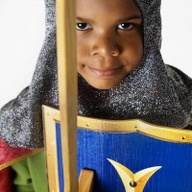 Prize recipient, physicist, and chemist, Marie Curie believed that, “A scientist in his laboratory is not a mere technician: he is also a child confronting natural phenomena that impress him as though they were fairy tales.”
Prize recipient, physicist, and chemist, Marie Curie believed that, “A scientist in his laboratory is not a mere technician: he is also a child confronting natural phenomena that impress him as though they were fairy tales.”
American novelist, R.A. Salvatore said, “No, I would not want to live in a world without dragons, as I would not want to live in a world without magic, for that is a world without mystery, and that is a world without faith.”
And, from one of my all-time favorite authors, C.S.Lewis, “When I was ten, I read fairy tales in secret and would have been ashamed if I had been found doing so. Now that I am fifty, I read them openly. When I became a man, I put away childish things, including the fear of childishness and the desire to be very grown up.”
All of these learned and creative minds had the same view of fairy tales: They are valuable beyond the momentary entertainment and for more than their literary worth.
Fairy tales in childhood are stepping stones throughout life, leading the way through trouble and trial. The value of fairy tales lies not in a brief literary escape from reality, but in the gift of hope that goodness truly is more powerful than evil and that even the darkest reality can lead to a Happily Ever After. Do not take that gift of hope lightly. It has the power to conquer despair in the midst of sorrow, to light the darkness in the valleys of life, to whisper “One more time” in the face of failure. Hope is what gives life to dreams, making the fairy tale the reality.
“Do not meddle in the affairs of dragons, for you are crunchy and taste good with ketchup.”
~ Scott Adams (American author and cartoonist)
Related posts:
In the world of a child wonders are as simple as sticks and sheets, leaves and books, boxes and giggles, and the promise in a rainy day. The Seven Wonders of the World of Childhood
Woven through every event, every tradition, every memorable moment of our family’s Christmas, is the celebration of the wondrous gift of a Savior. We watch Rudolph the Red-Nosed Reindeer, Santa Claus is Coming to Town, and all the other fun Christmas shows together. We read bedtime stories about Christmas elves and Magical toys and talking animals. And when my children ask me if Santa really exists, I tell them yes, because it’s true. Every parent who carries on St. Nicholas’ tradition of leaving secret gifts, of being the heart and hands of Jesus, of sharing the wonder, excitement, and glory of the most extraordinary Gift ever given to mankind, every one of us is Santa Claus. The Great Santa Claus Debate
There is such a rush these days to get children sleeping through the night, weaned off the breast, eating solid foods, potty trained, reading independently, and on and on, that we seem to have lost the ability to simply enjoy life as it happens and let our children do the same. A Return to Childhood
On a Winnie the Pooh style ‘long explore’ my little Pooh Bear discovered the world in ways only a toddler can in…The Many Adventures of My Little Pooh Bear
Children who love to read…READ! Engaging children’s hearts in the wonder of reading instead of just training their minds in its mechanics. Raising Bookworms
Successful reading means far more than possessing the ability to read. Engaging the hearts of students moves reading success beyond a life skill and turns it into a life style. And graphic novels are too powerful of a tool in our arsenal to be disregarded because of pride or prejudice. Raising Super Readers~The MARVELous Power of Comic Books!
Parenting choices strongly impact the level and type of attachment a child develops and, by extension, the development of a love of learning. A love of learning grows when it isn’t stifled by fear or stress or regimented by over-structuring or a focus on achievement or competition. Parents fostering a healthy attachment are thus also fostering a life-long love of learning in their children. Love, Play, Learn!
The human brain needs time to process, catagorize, prioritize, analyze, and otherwise make sense of all of the trillions of bits of information that it recieves each day. Non-structured playtime for children functions much like sleep does for adults, giving their brains the time and space they need to move short-term memory to long term learning. 25 Reasons NOT to Keep Children Busy
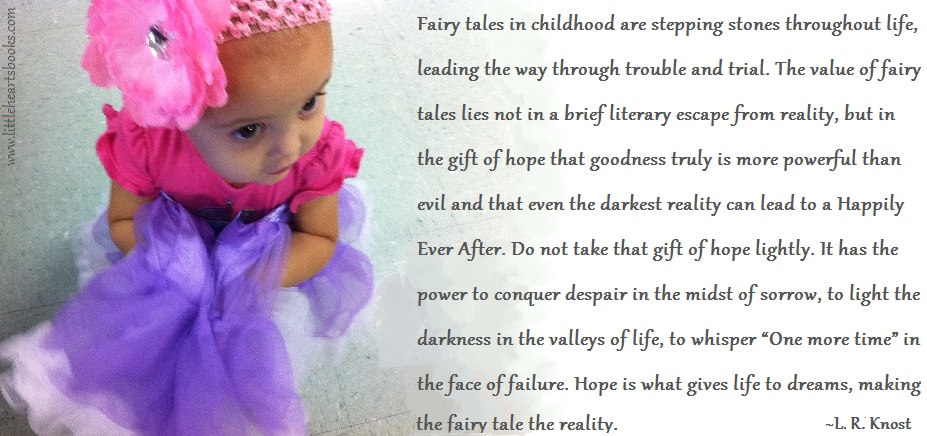
 Award-winnning author, L.R.Knost, is the founder and director of the children's rights advocacy and family consulting group, Little Hearts/Gentle Parenting Resources, and Editor-in-Chief of Holistic Parenting Magazine. Books by L.R.Knost include Whispers Through Time: Communication Through the Ages and Stages of Childhood ; Two Thousand Kisses a Day: Gentle Parenting Through the Ages and Stages ; The Gentle Parent: Positive, Practical, Effective Discipline ; and Jesus, the Gentle Parent: Gentle Christian Parenting the first four books in the Little Hearts Handbook gentle parenting series, and children’s picture books Petey’s Listening Ears and the soon-to-be-released Grumpykins series.
Award-winnning author, L.R.Knost, is the founder and director of the children's rights advocacy and family consulting group, Little Hearts/Gentle Parenting Resources, and Editor-in-Chief of Holistic Parenting Magazine. Books by L.R.Knost include Whispers Through Time: Communication Through the Ages and Stages of Childhood ; Two Thousand Kisses a Day: Gentle Parenting Through the Ages and Stages ; The Gentle Parent: Positive, Practical, Effective Discipline ; and Jesus, the Gentle Parent: Gentle Christian Parenting the first four books in the Little Hearts Handbook gentle parenting series, and children’s picture books Petey’s Listening Ears and the soon-to-be-released Grumpykins series.
100 Ways to tell the Difference between a Child and a Weed…in case you were wondering
[Portions reprinted with permission from Whispers Through Time: Communication Through the Ages and Stages of Childhood by L.R.Knost available June 2013; Two Thousand Kisses a Day: Gentle Parenting Through the Ages and Stages now available on Amazon and through other major retailers.]
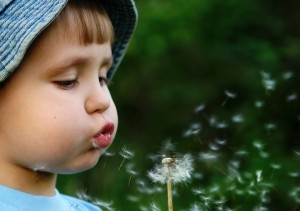 I visited a home recently where I witnessed something heartbreaking. A young couple who deeply loved their five-year-old little guy, but didn’t have a clue as to what ‘normal’ behavior was, were literally crushing the child out of their child in their desire to do the best parenting job they could.
I visited a home recently where I witnessed something heartbreaking. A young couple who deeply loved their five-year-old little guy, but didn’t have a clue as to what ‘normal’ behavior was, were literally crushing the child out of their child in their desire to do the best parenting job they could.
Every laugh from their child was met with a ‘shhh.’ Every movement inspired a, “Settle down, now.” Every request received a, “Not now,” and every comment a silencing finger. The father told me it was important to them to keep their son quiet and calm at all times so he would learn to behave and “be good.”
When I asked about what a typical day looked like for their son, I found that his playtime was almost entirely alone in his room which was stocked with enough toys to fill a Toys-R-Us, but he was rarely allowed to venture outside. He spent hours in front of the television watching ‘educational’ dvds or on the computer. Occasionally, one of the parents would invite a little friend over for their son and they’d organize and supervise a craft or activity for them. Family time was a nightly movie on dvd and eating popcorn together.
There was very little communication or interaction between parents and child other than correction. Family time was scheduled and uncommunicative. All activities, when there were activities, were adult-directed. There was no freedom to be a child, to climb, to yell, to get dirty, to laugh hysterically, to play in the rain, to run and run and run until he could run no more and collapsed in the grass, panting and sweaty and happy and alive.
This young couple was methodically, albeit unknowingly, denying their son a childhood. Since they were doing it ‘gently,’ in their opinion (i.e. no yelling, hitting, name-calling, etc.), and were very proud of themselves for that, they were at a loss as to why their son was having frequent potty accidents, sneaking things out of the kitchen, having anger flares, passively refusing to follow simple directions, lying, and more.
I spoke with them about normal, age-appropriate expectations, shared some communication tips with them (mainly~listen, listen, listen!), encouraged them to interact and play and connect with their little guy along with giving him plenty of outside free time, and offered them the practical parenting techniques they were after. But I left their home a bit heavy-hearted at the thought of all of the joy and exuberance of a small child being so misunderstood by such obviously caring parents that they were intent on eradicating it by any means necessary. (Note: Some details changed to protect confidentiality.)
Many parents, not just this young couple, misinterpret normal, childlike behavior as an unwanted intruder, weeds to be plucked, poisoned, or prevented so their little ones can flourish in the hothouse of childhood. What they don’t realize is that childhood isn’t a hothouse to be fenced in and closed off and climate-controlled. It’s a wide-open, sun-drenched, wind-swept field of endless possibilities, experiences, and discoveries. And normal, childlike behavior is the riot of brilliant wildflowers sharing their vivid beauty for an all-too-brief season before they’re gone forever. (Before you leave a comment saying that wildflowers are weeds, that is a matter of opinion, lol. My little girls love picking wildflowers and bringing me bouquets overflowing with gorgeous yellows and oranges and purples…and love. I’ve never seen more beautiful flowers in my life 🙂 )
So, parents, I thought I’d share 100 ways to differentiate a child from a weed:
- Weeds don’t giggle.
- Children eat more than weeds do and, when tiny, may also eat the occasional weed.
- Weeds aren’t all beautiful like children.
- Children need love.
- Weeds are enemies.
- Children aren’t.
- Weeds love bees.
- Children don’t.
- You can’t tickle a weed.
- Round-up is sprayed on weeds and locked away from children.
- Weeds don’t sleep.
- Children do…occasionally.
- It’s hard to play ‘Duck, Duck, Goose’ with a weed.
- Children like play-doh.
- Bringing weeds to the park…not a good idea.
- Weeds don’t have feelings that can be hurt.
- Children do.
- Children need baths.
- You can’t hug a weed.
- Brushing a weed’s teeth would be easier.
- Weeds don’t melt your heart.
- Children do.
- You don’t grow weeds on purpose.
- Weeds might enjoy carseats more.
- Children don’t like thunderstorms.
- You wouldn’t take a weed to Disney World.
- Children make more noise.
- Trying to teach a weed to read would be silly.
- Blowing bubbles is only fun when you do it with a child.
- You’d look a bit odd playing pat-a-cake with a weed.
- Breaking a weed is no big deal.
- Breaking a child is.
- Weeds don’t tell endless stories about snails.
- If they did, you wouldn’t listen like you would with a child.
- Weeds don’t have adorable grins.
- Children are messier.
- You can’t count stars with weeds.
- Weeds don’t listen as well (yes, really!).
- Kissing weeds would be much grosser than kissing drooly, toothless grins.
- Weeds don’t like ice cream.
- Children like to come inside…sometimes.
- Happiness belongs to children.
- Weeds aren’t very good at hide-n-seek.
- You can’t read a goodnight story to a weed…well, you could, but why would you want to?
- A sick weed isn’t a big deal.
- A sick child is.
- Tea parties with weeds are boring
- Weeds don’t giggle at hiccups.
- Weeds don’t look adorable with milk mustaches.
- Cloud watching takes imagination, not chlorophyll.
- Weeds don’t have ticklish toes.
- Weeds don’t ask “Why did God make weeds?”
- Children and weeds love mud for very different reasons.
- Weeds don’t whine.
- You wouldn’t whisper “I love you” to a sleeping weed.
- Weeds don’t care.
- Children do.
- Elderly people love hearing children’s laughter.
- Weeds won’t grow into future world leaders.
- Weeds don’t play.
- Finger paint and children are a good combination.
- Finger paint and weeds…less messy but much less fun, too.
- A child’s arms wrapped around your neck feels like love.
- Weeds wrapped around your neck feels like an episode of Lost.
- Overflowing joy is the prerogative of childhood…weeds don’t feel joy.
- Children experiment to learn their capabilities and limits…weeds don’t.
- Weeds don’t make up corny jokes and expect you to laugh like you mean it.
- Children can jump.
- Weeds have no imagination.
- If a child invites you to play, it’s a sign of trust. Take it seriously.
- If a weed invites you to play…you might want to get some help.
- Children grow into parents.
- You wouldn’t take a weed to the dentist (no teeth).
- Love is the fuel of childhood.
- Neglect is the fuel of weeds.
- Weeds aren’t any good at hopscotch.
- You fight the spread of weeds.
- You encourage children to spread their wings and fly.
- Diapering a weed would be weird.
- Asking your neighbor how to get rid of weeds is a great conversation starter.
- Asking your neighbor how to get rid of your children…not so much.
- Weeds don’t have hearts that can break.
- Children do.
- Weeds don’t get excited about Christmas.
- A child needs to be deeply rooted in love and security to thrive.
- A weed rooted in shallow dirt will still grow.
- Hope is the light that leads children to try.
- Weeds don’t have birthdays.
- Children are made in the image of our Creator.
- Children matter.
- Peek-a-boo is fun for a baby.
- Weeds do not enjoy peek-a-boo.
- Children are constantly communicating, through their behaviors if not their words.
- Weeds…not good communicators.
- Listening carefully to your children is always a good idea.
- Listening carefully to weeds might earn you a starring role in Horton Hears a Who.
- Paddling pools and children are lots of fun.
- Weeds do not like paddling pools as, generally, the pool is resting on top of the weeds.
- A playing child is poetry in motion.
- The future is in the hearts of our children.
Children are children for such a small season of life. Let their laughter ring out, their imaginations soar, their feet stomp in puddles, their hands clap for joy. They will grow up and out of their youthful exuberance and zest and settle into the life and routine of adulthood when the time comes. Don’t make them settle too soon.
Related posts:
In the world of a child wonders are as simple as sticks and sheets, leaves and books, boxes and giggles, and the promise in a rainy day. The Seven Wonders of the World of Childhood
There is such a rush these days to get children sleeping through the night, weaned off the breast, eating solid foods, potty trained, reading independently, and on and on, that we seem to have lost the ability to simply enjoy life as it happens and let our children do the same. A Return to Childhood
On a Winnie the Pooh style ‘long explore’ my little Pooh Bear discovered the world in ways only a toddler can do in…The Many Adventures of My Little Pooh Bear
The evolution of children’s communication proceeds at a steady and relatively predictable pace, though the timing is influenced by factors such as individual personality, cognitive development, home environment, etc. Here’s what to expect through the ages and stages…Tots to Teens~Communication through the Ages and Stages
From hitting to defiance to tantrums to testing the boundaries and more, here are gentle parenting tools, tips, and techniques…Practical Gentle Discipline
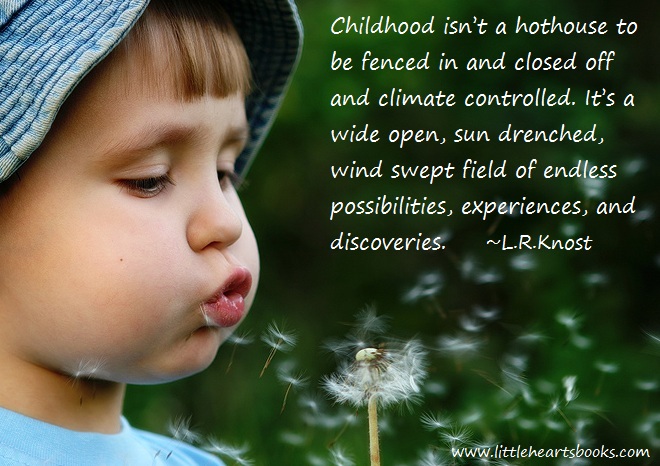
Photo credit: Portrait Photos
 Award-winnning author, L.R.Knost, is the founder and director of the children's rights advocacy and family consulting group, Little Hearts/Gentle Parenting Resources, and Editor-in-Chief of Holistic Parenting Magazine. Books by L.R.Knost include Whispers Through Time: Communication Through the Ages and Stages of Childhood ; Two Thousand Kisses a Day: Gentle Parenting Through the Ages and Stages ; The Gentle Parent: Positive, Practical, Effective Discipline ; and Jesus, the Gentle Parent: Gentle Christian Parenting the first four books in the Little Hearts Handbook gentle parenting series, and children’s picture books Petey’s Listening Ears and the soon-to-be-released Grumpykins series.
Award-winnning author, L.R.Knost, is the founder and director of the children's rights advocacy and family consulting group, Little Hearts/Gentle Parenting Resources, and Editor-in-Chief of Holistic Parenting Magazine. Books by L.R.Knost include Whispers Through Time: Communication Through the Ages and Stages of Childhood ; Two Thousand Kisses a Day: Gentle Parenting Through the Ages and Stages ; The Gentle Parent: Positive, Practical, Effective Discipline ; and Jesus, the Gentle Parent: Gentle Christian Parenting the first four books in the Little Hearts Handbook gentle parenting series, and children’s picture books Petey’s Listening Ears and the soon-to-be-released Grumpykins series.
Fun with Funoodles!
“It’s fun to have fun, but you have to know how…If you never did you should. These things are fun and fun is good!” ~Dr. Seuss

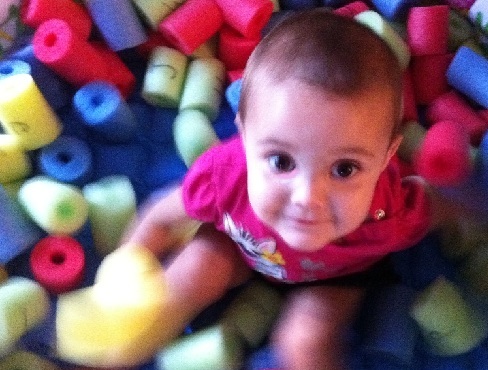 Lots of ideas for non-pool uses of pool noodles have been floating (hee hee) around Pinterest for weeks now. Since we live in Florida, pool toys are in abundant supply, so I thought I’d brainstorm some fresh ideas for our homeschool.
Lots of ideas for non-pool uses of pool noodles have been floating (hee hee) around Pinterest for weeks now. Since we live in Florida, pool toys are in abundant supply, so I thought I’d brainstorm some fresh ideas for our homeschool.
One cute idea I saw involved cutting up pool noodles and filling a small wading pool with them to make a ball pit for babies. I loved that idea for my toddler, but thought I’d add some extra fun for my kindergartener by writing letters on the cut up pieces so she could ‘fish’ for the letters with THE CLAW.
I made all of the vowels yellow and the rest of the letters a mix of colors. My little ones use neon green clothesline to string together words and sentences. I also left a few ‘blanks’ to be used as spacers between words. We can use these to make Birthday banners, Mother’s and Father’s Day banners, Congratulations signs, etc. too!
 I used a large, serrated bread knife which worked beautifully, and by making sure that all of the cuts are straight, the little chunks of funoodles make great building blocks, too. Since not all of my cuts were
I used a large, serrated bread knife which worked beautifully, and by making sure that all of the cuts are straight, the little chunks of funoodles make great building blocks, too. Since not all of my cuts were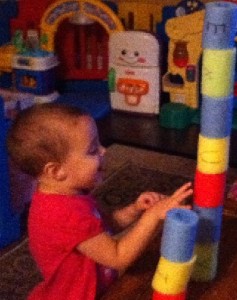 straight…okay, since none of my cuts were straight (Craft-aster strikes again!), my children’s towers look more like Dr. Seuss’ Who-ville buildings. But since they like to build, knock down, build, knock down etc, the Who-blocks work just fine for us. 🙂
straight…okay, since none of my cuts were straight (Craft-aster strikes again!), my children’s towers look more like Dr. Seuss’ Who-ville buildings. But since they like to build, knock down, build, knock down etc, the Who-blocks work just fine for us. 🙂
I also cut large pieces to use as giant tinker-toys so my children could build large buildings, boats, planes, trains, and automobiles that they 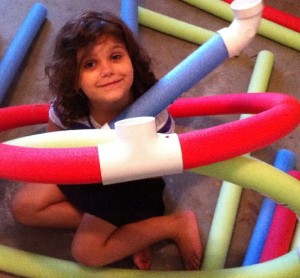 could actually get inside to play . So I cut long pieces, four of each color, being careful to keep each of the same-color pieces the same lengths so they would make perfect squares to use as sides or a base for whatever structure my children came up with. Then I went to the hardware store and bought 2″ pvc pipe fittings in various shapes to be used as connectors. It worked pretty well, but the pvc is heavy compared to the funoodles, so that’s a physics challenge for my children as they try to figure out how much of a support system is needed to
could actually get inside to play . So I cut long pieces, four of each color, being careful to keep each of the same-color pieces the same lengths so they would make perfect squares to use as sides or a base for whatever structure my children came up with. Then I went to the hardware store and bought 2″ pvc pipe fittings in various shapes to be used as connectors. It worked pretty well, but the pvc is heavy compared to the funoodles, so that’s a physics challenge for my children as they try to figure out how much of a support system is needed to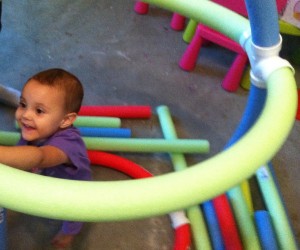 hold up the connectors. I’m looking for light-weight funoodle connectors, though, so they can build even bigger structures.
hold up the connectors. I’m looking for light-weight funoodle connectors, though, so they can build even bigger structures.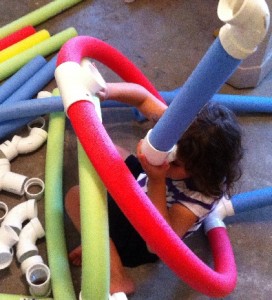
Just a note, if you’re thinking of trying any of these, head to the dollar store asap because once the summer stock gets replaced by the fall/winter stock it’ll be nearly impossible to find funoodles anywhere. Even here in Florida where it often stays in the 90’s through November, the stores pull all the bathing suits, flip-flops, and other warm weather essentials in late August or early September, which I’ll never understand, lol.
 And I just had to share these adorable and super easy funoodle horses from Mrs King’s Music Room. Head over there for the instructions, and your little ones will be galloping away in no time!
And I just had to share these adorable and super easy funoodle horses from Mrs King’s Music Room. Head over there for the instructions, and your little ones will be galloping away in no time!

Then head over to A Purpose Driven Home for some more super cool funoodle ideas!
Related posts:
In the world of a child wonders are as simple as sticks and sheets, leaves and books, boxes and giggles, and the promise in a rainy day. The Seven Wonders of the World of Childhood
Children who love to read…READ! Engaging children’s hearts in the wonder of reading instead of just training their minds in its mechanics. Raising Bookworms
Think homeschooled children are unsocialized, over-controlled, locked-away-from-the-world misfits? Think again! My Renaissance Girl
On a Winnie the Pooh style ‘long explore’ my little Pooh Bear discovered the world in ways only a toddler can do in…The Many Adventures of My Little Pooh Bear
25 Reasons NOT to Keep Your Children Busy this Summer
Raising Super Readers~The MARVELous Power of Comic Books!
Playground Confessions~Look Who’s Talking!
Alphabet Fun~Imagination From A to Z!
Making Money Matters Make Cents
 Award-winnning author, L.R.Knost, is the founder and director of the children's rights advocacy and family consulting group, Little Hearts/Gentle Parenting Resources, and Editor-in-Chief of Holistic Parenting Magazine. Books by L.R.Knost include Whispers Through Time: Communication Through the Ages and Stages of Childhood ; Two Thousand Kisses a Day: Gentle Parenting Through the Ages and Stages ; The Gentle Parent: Positive, Practical, Effective Discipline ; and Jesus, the Gentle Parent: Gentle Christian Parenting the first four books in the Little Hearts Handbook gentle parenting series, and children’s picture books Petey’s Listening Ears and the soon-to-be-released Grumpykins series.
Award-winnning author, L.R.Knost, is the founder and director of the children's rights advocacy and family consulting group, Little Hearts/Gentle Parenting Resources, and Editor-in-Chief of Holistic Parenting Magazine. Books by L.R.Knost include Whispers Through Time: Communication Through the Ages and Stages of Childhood ; Two Thousand Kisses a Day: Gentle Parenting Through the Ages and Stages ; The Gentle Parent: Positive, Practical, Effective Discipline ; and Jesus, the Gentle Parent: Gentle Christian Parenting the first four books in the Little Hearts Handbook gentle parenting series, and children’s picture books Petey’s Listening Ears and the soon-to-be-released Grumpykins series.
3 Simple Steps from Diapers to Potty
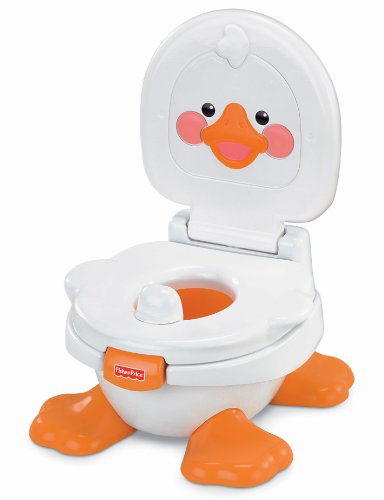
[Reprinted from Two Thousand Kisses a Day: Gentle Parenting Through the Ages and Stages by L.R.Knost. Whispers Through Time: Communication Through the Ages and Stages of Childhood and The Gentle Parent: Positive, Practical, Effective Discipline also now available on Amazon and through other major retailers.]
~~~~~~~~~~~~~~~~~~~~~
I have an adorable little diaper-bottomed 26 month old who will never be potty-trained. She will, however, in her own time, move from diapers to potty as easily as she went from rolling to scooting, from scooting to crawling, from crawling to walking. As a mama of six from 25 years down to 26 months old, I’ve supported my little people through the transition to pottying plenty of times, and I’ve learned to go with the flow. (Sorry. I have mentioned that I like wordplay, right?)
So, what does ‘going with the flow’ mean in the diapers-to-potty stage?
It means no charts, no stickers, no rewards, no punishment, no pressure, no ‘training’ of any kind.
It means I don’t drive myself nuts looking for signs of ‘readiness’ or getting frustrated by accidents or worrying about what anyone else thinks.
It means my children and I are on the same team, period. I don’t set my little ones up for a power-struggle, don’t shift our relationship from connected to contentious, don’t push them to develop according to some arbitrary schedule.
It means letting my little ones learn about what their bodies can do simply and naturally on their own time-table.
And it means not ascribing ulterior motives to normal behavior.
Humans have a God-given, in-built instinct to seek privacy when emptying their bowels, a vital protection against the spread of disease in ancient times. Modern parents, though, often believe a child who seeks a little alone-time to poop is “hiding because they know they’re doing something wrong.”
That attitude from parents gives children the message that normal bowel functions are somehow shameful and disgusting. That often not only pushes children to seek even more seclusion while pooping, but can also lead to ‘holding’ behaviors with their resultant medical issues and can actually delay the transition to pottying, the exact opposite effect the parents are trying to achieve!
Also, when asked if they are pooping, small children will frequently deny it and even run away. Parents tend to interpret that as lying and often will punish the child, creating an even more challenging environment for little ones to try to navigate their way from diapers to potty. Again, it is a normal human instinct to regard bowel habits as a private issue, and children are in the unfortunate position of not having the ability to articulate their need for privacy with anyting more than a “No!” and a quick getaway.
Parents who recognize that the diapers-to-potty transition is a normal progression of early childhood just like learning to crawl and walk and talk will take the same approach they did with those milestones:
- Let the child determine the time-table. There is a huge range of ‘normal’ when it comes to timing of developmental milestones, including pottying.
- Encourage, don’t push. Just as with rolling, crawling, etc. offering lots of praise and applause without being insistent allows the child to develop at their own pace in a stress-free, supportive environment.
- Model the desired behavior and offer the opportunity to experiment. Sharing our own experiences with our children is our most powerful teaching tool, and experimentation is the foundation of true learning.
Remember, the connection we maintain throughout these transitions in our children’s lives builds the trust and communication so vital to a healthy parent/child relationship.
Here’s what the transition from diapers to potty looks like at our house:

$3.99 Ikea spice rack as a bathroom bookshelf!
From the time my babies can walk (sometimes even earlier) they regularly join me when I go to the bathroom. They sit on a little potty that’s always available or they walk around, familiarizing themselves with this new play-space, and we read books or chat or sing or just hang out.
I occasionally ask if they want to take off their diaper and sit on the little potty, and sometimes they do and sometimes they don’t.
Eventually, the day comes that they pee-pee (we call it ‘peep’ 🙂 ) in the potty.
Then, of course, we sing the pee-pee song, “Pee-pee in the po-tay! Pee-pee in the po-tay!” and dance through the house and everybody else joins in and it’s a great time.
Sometimes, that one event is kind of an ‘ah-ha’ moment for my little ones, and the potty games are on! They start asking to go more and more and are usually out of diapers, accident free, within a couple of weeks. No pressure, no stress, and very little mess.
Sometimes, though, it’s a one-off and my little one happily continues in diapers, visiting the bathroom with me off and on, sometimes hanging out on the potty, sometimes not. Then, when they’re ready, they let me know and their own potty game is on!
The thing is, barring developmental issues, children always, always eventually make the transition to using the potty and end the diaper-bottomed season of their life. In our home they just do it in their own time. It’s as natural and joyous of a developmental milestone as crawling, walking, or talking and, for us, just as celebrated!
Note: There is a rather intense debate in the parenting community over the use/misuse of praising children. While throwing a “Good job” or “Awesome” at a child just to brush them off is…well, a brush off, honestly sharing your excitement and pride in your children is never a bad thing. In our family, we celebrate all ‘firsts’ with our children, praise their efforts and offer encouragement and help when they’re struggling, and admire their accomplishments when they succeed. You can read more about praise here.
Related posts:
Toddler fighting sleep? Here’s help!
Practical, Gentle, Effective Discipline
200 Ways to Bless Your Children with a Happy Childhood
 Award-winnning author, L.R.Knost, is the founder and director of the children's rights advocacy and family consulting group, Little Hearts/Gentle Parenting Resources, and Editor-in-Chief of Holistic Parenting Magazine. Books by L.R.Knost include Whispers Through Time: Communication Through the Ages and Stages of Childhood ; Two Thousand Kisses a Day: Gentle Parenting Through the Ages and Stages ; The Gentle Parent: Positive, Practical, Effective Discipline ; and Jesus, the Gentle Parent: Gentle Christian Parenting the first four books in the Little Hearts Handbook gentle parenting series, and children’s picture books Petey’s Listening Ears and the soon-to-be-released Grumpykins series.
Award-winnning author, L.R.Knost, is the founder and director of the children's rights advocacy and family consulting group, Little Hearts/Gentle Parenting Resources, and Editor-in-Chief of Holistic Parenting Magazine. Books by L.R.Knost include Whispers Through Time: Communication Through the Ages and Stages of Childhood ; Two Thousand Kisses a Day: Gentle Parenting Through the Ages and Stages ; The Gentle Parent: Positive, Practical, Effective Discipline ; and Jesus, the Gentle Parent: Gentle Christian Parenting the first four books in the Little Hearts Handbook gentle parenting series, and children’s picture books Petey’s Listening Ears and the soon-to-be-released Grumpykins series.
The Bookshelf: Tips, Tools & Techniques for Sharing a Love of Reading with Children
[Portions reprinted with permission from Raising Bookworms: Life, Learning, and Literacy by L.R.Knost available November 2014; Two Thousand Kisses a Day: Gentle Parenting Through the Ages and Stages, Whispers Through Time: Communication Through the Ages and Stages of Childhood, and The Gentle Parent: Positive, Practical, Effective Discipline by L.R.Knost available on Amazon and through other major retailers.]
~~~~~~~~~~~~~~~~~~~~~
 “I would be most content if my children grew up to be the kind of people who think decorating consists mostly of building enough bookshelves.” ~Anna Quindlen
“I would be most content if my children grew up to be the kind of people who think decorating consists mostly of building enough bookshelves.” ~Anna Quindlen
There’s no denying that reading is a vital part of successfully navigating our information-driven world, but literacy, true literacy, is so much more than simply acquiring information. Literacy is a love of and appreciation for the wisdom of the ages. It is a quest for the knowledge of those who have gone before us and shared their thoughts, discoveries, and experiences in dusty old tomes and modern paperbacks.
Sharing that love, that appreciation, that quest with our children is the gift of a lifetime of exploration, imagination, and revelation. It is the gift of curiosity, wonder, and discovery. Truly, to paraphrase George R.R. Martin, it is the gift of a thousand lifetimes lived in just one.
To that end, here is my virtual reading room, its bookshelves filled with literacy tips, book recommendations, literary quotes, learning through play ideas, and more. Pour yourself a cup of coffee, grab a cozy chair, and join me on the journey of a lifetime…
- When it comes to reading, do you want your children to become readers or just learn the mechanics of reading? Do you want them to love to read or just to know how? If a love of reading is your goal for your children, here are some ideas to get you started… 8 Tips for Raising Bookworms
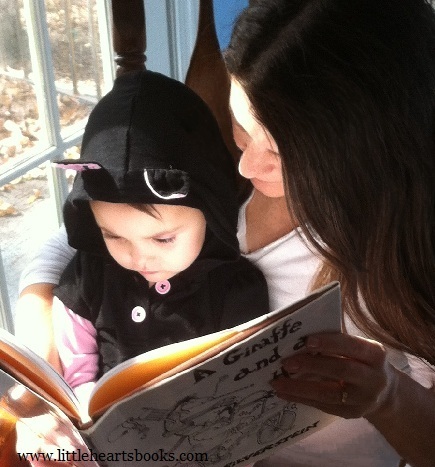 Fairy tales in childhood are stepping-stones throughout life, leading the way through trouble and trial. The value of fairy tales lies not in a brief literary escape from reality, but in the gift of hope that goodness truly is more powerful than evil and that even the darkest reality can lead to a Happily Ever After. Do not take that gift of hope lightly. It has the power to conquer despair in the midst of sorrow, to light the darkness in the valleys of life, to whisper “One more time” in the face of failure. Hope is what gives life to dreams, making the fairy tale the reality. Fairy Tales~The Lost Value of ‘Once upon a time…’
Fairy tales in childhood are stepping-stones throughout life, leading the way through trouble and trial. The value of fairy tales lies not in a brief literary escape from reality, but in the gift of hope that goodness truly is more powerful than evil and that even the darkest reality can lead to a Happily Ever After. Do not take that gift of hope lightly. It has the power to conquer despair in the midst of sorrow, to light the darkness in the valleys of life, to whisper “One more time” in the face of failure. Hope is what gives life to dreams, making the fairy tale the reality. Fairy Tales~The Lost Value of ‘Once upon a time…’
- Bookworm weighs in on must-have books for your children in Little Hearts’ How to Build a Home Library for Bookworms from Tots to Teens series. Check out 25 Must-Have Books for Baby Bookworms, 25 Must-Have Books for Toddler Bookworms, 25 Must-Have Books for Preschool Bookworms, and watch for 25 Must-Have Books for Early Elementary Bookworms, 25 Must-Have Books for Tween Bookworms, 25 Must-Have Books for Teen Bookworms, and 25 Must-Have Books for Young Adult Bookworms in the coming weeks as well as literacy tips, book activities, and book nook ideas
- Imagination is the language of childhood, so speaking their language when introducing our language only makes sense. Let’s ditch the flashcards, turn off the educational dvd’s, and throw out the worksheets…because learning is child’s play! Alphabet Fun~Imagination From A to Z!
- Successful reading means far more than possessing the ability to read. Engaging the hearts of students moves reading success beyond a life skill and turns it into a life style. And graphic novels are too powerful of a tool in our arsenal to be disregarded because of pride or prejudice… Raising Super Readers~The MARVELous Power of Comic Books!
- There is such a rush these days to get children sleeping through the night, weaned off the breast, eating solid foods, potty trained, reading independently, and on and on, that we seem to have lost the ability to simply enjoy life as it happens and let our children do the same. A Return to Childhood
- In the world of a child wonders are as simple as sticks and sheets, leaves and books, boxes and giggles, and the promise in a rainy day. The Seven Wonders of the World of Childhood
- Albert Einstein said, “Everybody is a genius. But if you judge a fish on its ability to climb a tree, it will live its whole life believing that it is stupid.” Unique learners have beautiful minds just waiting to find their genius. We just need to look outside of the box to help them find it. Helping Unique Learners Find Their Genius
- Think homeschooled children are unsocialized, over-controlled, locked-away-from-the-world misfits? Think again! My Renaissance Girl
- My SPD/SLD/ADD (Sensory Processing Disorder, Specific Learning Disability-Dyslexia, Visual and Auditory Processing Disorders, Attention Deficit Disorder, etc) sweetie, aka Renaissance Girl, has raised the bar on my homeschooling skills more times than I can count. Her beautiful mind sees the world through a unique lens similar to those of historical icons such as Thomas Edison, Leonardo Da Vinci, Benjamin Franklin, and Albert Einstein…Beautiful Minds
- 1.) Books + Time + Imagination = Endless possibilities! 25 Reasons NOT to Keep Your Children Busy
- March 1st is World Book Day, and March 2nd is Dr. Seuss’ Birthday Extravaganza which includes the release of the much-anticipated new movie, The Lorax! If you’re a book-obsessed, homeschooling, movie-loving, Seussiac like I am, it’s practically a national holiday! And when you add my excitement over my newest little home-grown reader, it’s definitely time for a Seusserrific Celebration! In honor of all of this wonderfulness and to help launch my new little reader into the wonderful world of books, I’ve been scouring the web, the bookshelves, and my scattered brain for all the Seussical fun I could find for my little people and yours. Here are a few of my finds… Seuss-ified~Craft-astic~Snack-errific~Education-cool~Fun!
- Parenting choices strongly impact the level and type of attachment a child develops and, by extension, the development of a love of learning. A love of learning grows when it isn’t stifled by fear or stress or regimented by over-structuring or a focus on achievement or competition. Parents fostering a healthy attachment are thus also fostering a life-long love of learning in their children. Love, Play, Learn!
- Truly, what is our goal for our children? Knowledge memorized in lists and tables and regurgitated on bubble-in tests? Or knowledge coupled with experience that leads to understanding and, ultimately, wisdom? Benjamin Franklin said it best when he said, “Tell me and I forget. Teach me and I remember. Involve me and I learn.” The Many Adventures of My Little Pooh Bear
- 188.) Make them a cozy reading nook; 189.) Squeeze yourself into their reading nook and cuddle up for storytime; 190.) Read them fairy tales; 191.) Buy them comic books; 192.) Make paperchains for the Christmas tree; 193.) Have a birthday party for Jesus before opening presents on Christmas morning; 194.) Make blessing bags and mail them to our troops; 195.) Build bookshelves and start a home library for them… 200 Ways to Bless Your Children with a Happy Childhood
- If you give a toddler a book
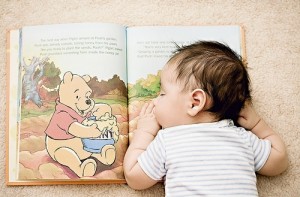
It’s never too early to share a good book
He’ll climb into your lap
While he’s in your lap
He might lay his head on your chest
When he lays his head on your chest
He’ll hear your heartbeat
When he hears your heartbeat
He’ll probably ask if you can hear his…
If You Give A Toddler A Book…
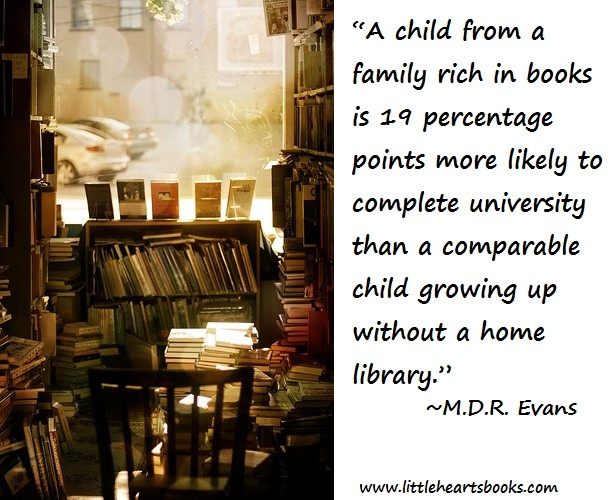
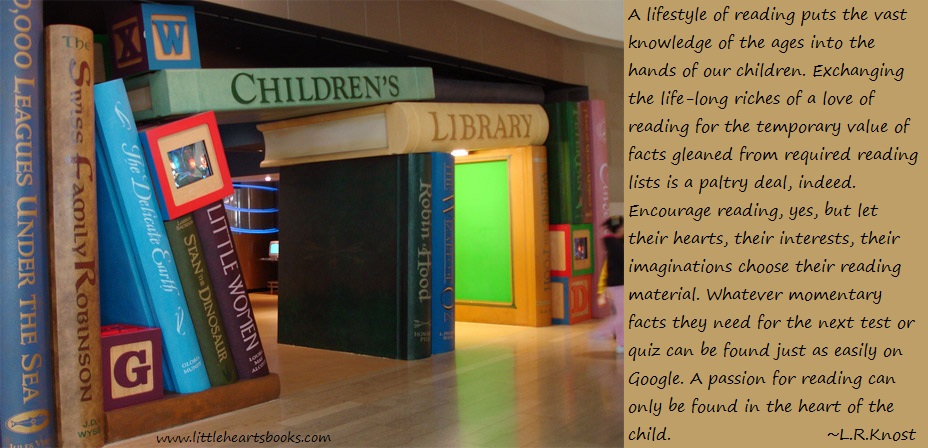

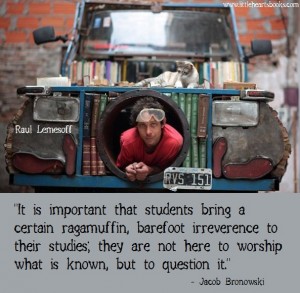

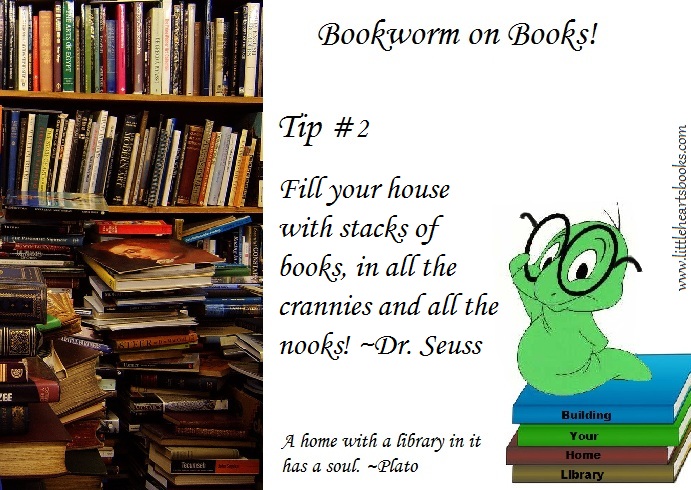
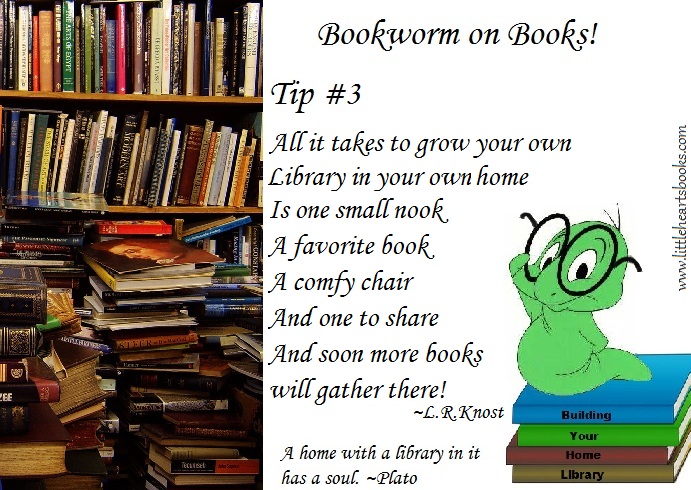
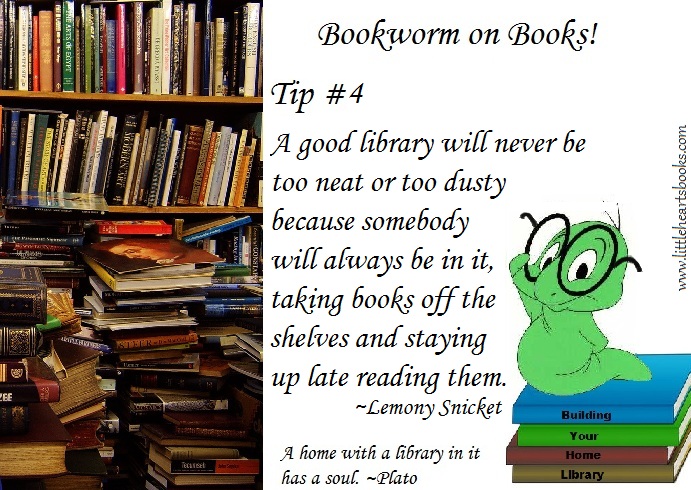
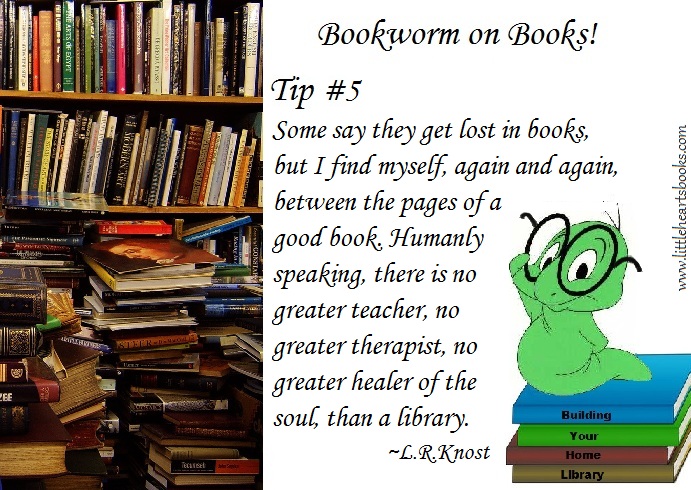
 Award-winnning author, L.R.Knost, is the founder and director of the children's rights advocacy and family consulting group, Little Hearts/Gentle Parenting Resources, and Editor-in-Chief of Holistic Parenting Magazine. Books by L.R.Knost include Whispers Through Time: Communication Through the Ages and Stages of Childhood ; Two Thousand Kisses a Day: Gentle Parenting Through the Ages and Stages ; The Gentle Parent: Positive, Practical, Effective Discipline ; and Jesus, the Gentle Parent: Gentle Christian Parenting the first four books in the Little Hearts Handbook gentle parenting series, and children’s picture books Petey’s Listening Ears and the soon-to-be-released Grumpykins series.
Award-winnning author, L.R.Knost, is the founder and director of the children's rights advocacy and family consulting group, Little Hearts/Gentle Parenting Resources, and Editor-in-Chief of Holistic Parenting Magazine. Books by L.R.Knost include Whispers Through Time: Communication Through the Ages and Stages of Childhood ; Two Thousand Kisses a Day: Gentle Parenting Through the Ages and Stages ; The Gentle Parent: Positive, Practical, Effective Discipline ; and Jesus, the Gentle Parent: Gentle Christian Parenting the first four books in the Little Hearts Handbook gentle parenting series, and children’s picture books Petey’s Listening Ears and the soon-to-be-released Grumpykins series.
Helping Unique Learners Find Their Genius
[From Raising Bookworms: Life, Learning, and Literacy by L.R.Knost available 2014; Two Thousand Kisses a Day: Gentle Parenting Through the Ages and Stages, Whispers Through Time: Communication Through the Ages and Stages of Childhood, and The Gentle Parent: Positive, Practical, Effective Discipline now available on Amazon and through other major retailers.]
 Homeschooling a unique learner can be challenging simply because they don’t get the benefit of access to testing and professional support without a lot of initiative, research, phone calls, and door-knocking on your part. But the trade-off is the freedom to tailor your teaching and learning environment to your child’s needs, and that is of incredible value when educating a unique learner.
Homeschooling a unique learner can be challenging simply because they don’t get the benefit of access to testing and professional support without a lot of initiative, research, phone calls, and door-knocking on your part. But the trade-off is the freedom to tailor your teaching and learning environment to your child’s needs, and that is of incredible value when educating a unique learner.
Albert Einstein said, “Everybody is a genius. But if you judge a fish on its ability to climb a tree, it will live its whole life believing that it is stupid.” Unique learners have beautiful minds just waiting to find their genius. We just need to look outside of the box to help them find it!
Here are some of the tips, tools, and techniques I’ve learned through years of homeschooling my unique learners to help them work through the challenges they face on a daily basis:
1.) Lighten up…Everything in life is easier if you take it with a grain of salt and learn to laugh. Our unique learners will have more struggles and challenges than the average person throughout life, not just during their school years. That is an unavoidable fact. But who wants to be ‘average’ anyway? Help them to celebrate their uniqueness and embrace the future with grace and humor by sharing your own struggles, modeling coping techniques, and being able to laugh at your own mistakes. Make ‘even missteps are valuable steps on the road to success’ your homeschool motto!
2.) Play…Children learn best through play, and that applies to therapy, as well. Experience is the only true path to learning, so let their imaginations soar as they do the hard work of learning to cope with their unique challenges. (See some play-based, brain-enriching, and eye-tracking activities below)
3.) Jazz it up…Music truly is medicine for the soul. Buy a good set of headphones (not earbuds) and play classic instrumentals softly while your unique learner is trying to concentrate, whether it be on reading or writing or drawing, etc. Filtering out the cacophony of life and soothing their stress levels with the gentle strains of Mozart are only some of the benefits of music. Another benefit is that the rhythms, cadence, and timing of music actually have an organizing effect on the brain!
4.) Exercise…Invest in an exercise bicycle (We got ours for $15 from a yard sale!) that lets your unique learner sit in a comfortable seat while pedaling. The cross-over action of pedaling also has an organizing effect on the brain, and, if used while reading or playing video games (Video games can be great exercises for eye-tracking if you choose the right ones!) can actually increase the speed and effectiveness of learning.
unique learner sit in a comfortable seat while pedaling. The cross-over action of pedaling also has an organizing effect on the brain, and, if used while reading or playing video games (Video games can be great exercises for eye-tracking if you choose the right ones!) can actually increase the speed and effectiveness of learning.
5.) Get crunchy…Believe it or not, another ‘brain organizing’ activity is chewing, particularly crunchy foods, while reading, etc. Some good choices are pretzels, carrot sticks, celery, granola, and nuts. (If you’ve got a sensory sweetie like I do, be careful to let them choose something that won’t send their senses into overdrive.) Sugarless chewing gum can be substituted when you go places where foods aren’t appropriate, but still would like to offer your child a calming, organizing aid.
6.) Listen, listen, listen…Your unique learner will have more than their share of stress and possibly a harder time articulating it than others might. Slow down and really focus on what they are communicating. Listen ‘between the lines’ to their heart, their hurts, their fears, their needs. Be their safe place, their source of comfort and renewal.
7.) Hug it out…Physical closeness is healing, and so make sure that along with the extra struggles and challenges your unique learner faces, they get lots of extra cuddles, snuggles, and hugs. When they get older, a gentle touch on their shoulder or a light hand on their arm will be instantly calming and comforting because it will tap into those feelings of comfort and closeness from earlier childhood.
8.) Watch and learn…Just as every child is different, every child with challenges is unique in how they manifest those challenges and how they handle them. Paying careful attention to your own unique learner’s personality, struggles, aversions, triggers, etc. will give you clues as to how to help them learn to cope. With SPD (Sensory Processing Disorder), for example, avoiding unpleasant stimulus and providing needed stimulus is the name of the game. Typically, you’ll want to provide a quiet learning area at home, lots of freedom to move, permission to step away and de-stress when they feel overwhelmed, etc. and, when going out, avoid buffet-style restaurants and loud, crowded shopping and entertainment venues.
9.) Guide them gently…Discipline (guiding, modeling, teaching, etc.) invites communication and strengthens your parent/child connection. Punishment stifles communication and strains parent/child connections. Keep those vital lines of communication open and your parent/child connection healthy by providing consistent boundaries and gentle guidance, being open to discussion, and modeling the desired behavior.
10.) Read, read, read…Successful readers are not simply those who understand the mechanics of reading any more than successful biking is understanding the mechanics of a bicycle. Readers are born when a love for reading is fostered. Let them see you reading often. Cuddle up and read to them when they are young. Co-read (you read a sentence, they read a sentence, etc) when they are new readers or when they are tired or struggling. Let them read comics (The relation of pictures to words is a huge aid in reading comprehension.). For more reading tips, see Raising Bookworms.
Here are some exercises and activities that have helped my Renaissance Girl with her challenges with SPD, dyslexia, ADD, visual/auditory processing disorders, dyscalculia, etc:
Gross motor and fine motor cross-over exercises to get the two sides of the brain communicating more efficiently…
~Bouncing a brightly colored ball back and forth between us using alternate hands (left, right, left, right, etc.)
~Skipping, marching, swinging while singing 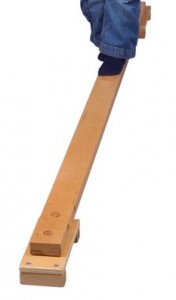
~Climbing
~Balance beam
~Bicycling
~Piano
~Sorting 
Brain-organizing activities…
~Memory matching
~Tonal music
~Free-style building with blocks, tinkertoys, legos, etc.
~Design-matching building
~Sensory bins
Eye-tracking activities…
~Laser pointer games-following a laser pointer light in a darkened room, pointing to moving targets (i.e. bubbles), etc.
~Ceiling tracing-following the seam of the wall and ceiling from corner to corner moving only the eyes
~Video games-Flash Focus and Brain Age are good choices for the Gameboy. Wii Fit, Carnival Games, and Sports Games are good for the Wii. There are also great games for improving eye-tracking for the X-box, Playstation, and online. If you do the research to find what best fits your child’s interests, you’ll have much better participation!
Visual-motor learning…
~Clay letters-tactile learning by forming letters and words on a template with clay or dough 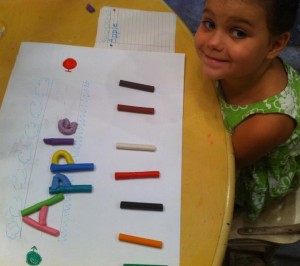
~Contextual learning-Children with dyslexia tend to learn better in context than by breaking things down to their parts, so phonics-based learning is often mind-boggling for them. Flashcards are a no-go because speed and movement impede their attempts to focus rather than help them. Writing-based learning such as copying and illustrating short poems, copying a short sentence from a wall-mounted chalkboard or large paper taped to the wall and illustrating it, writing and illustrating their own stories, and writing stories on the computer are great ways to help them learn to read.
~Once they are beginning to read, graphic novels, large-print chapter books on topics that interest them, and continued creative writing are excellent practice.
~Online reading games can be helpful, but only if they are untimed (Timed anything is a huge stressor and sets them up for frustration and failure.) and your child feels comfortable with the level of activity and brightness on the screen as otherwise these can cause headaches and their eyes to tire quickly.
These tips are not, of course, exhaustive or a replacement for professional therapies. But as you work your way through what can often be a labyrinth of paperwork, meetings, appointments, etc. on your way to finding the services your child needs, these may help to ease the wait a bit. 🙂
Related posts:
Children who love to read…READ! Engaging children’s hearts in the wonder of reading instead of just training their minds in its mechanics. Raising Bookworms
It’s time for a return to childhood, to simplicity, to running and climbing and laughing in the sunshine, to experiencing happiness instead of being trained for a lifetime of pursuing happiness…it’s time to let children be children again. A Return to Childhood
Think homeschooled children are unsocialized, over-controlled, locked-away-from-the-world misfits? Think again! My Renaissance Girl
Successful reading means far more than possessing the ability to read. Engaging the hearts of students moves reading success beyond a life skill and turns it into a life style. And graphic novels are too powerful of a tool in our arsenal to be disregarded because of pride or prejudice. Raising Super Readers~The MARVELous Power of Comic Books!
In the world of a child wonders are as simple as sticks and sheets, leaves and books, boxes and giggles, and the promise in a rainy day. The Seven Wonders of the World of Childhood
Parenting choices strongly impact the level and type of attachment a child develops and, by extension, the development of a love of learning. A love of learning grows when it isn’t stifled by fear or stress or regimented by over-structuring or a focus on achievement or competition. Parents fostering a healthy attachment are thus also fostering a life-long love of learning in their children. Live to Play~Play to Learn~Learn to Live!
If you give a toddler a book
He’ll climb into your lap
While he’s in your lap
He might lay his head on your chest
When he lays his head on your chest
He’ll hear your heartbeat
When he hears your heartbeat
He’ll probably ask if you can hear… If You Give A Toddler A Book…
Einstein recognized his unique lens and often commented about it and about how organized education systems didn’t accommodate individuality and creativity. Here is a look into this ‘unique learner’s’ mind in his own words…Beautiful Minds
 Award-winnning author, L.R.Knost, is the founder and director of the children's rights advocacy and family consulting group, Little Hearts/Gentle Parenting Resources, and Editor-in-Chief of Holistic Parenting Magazine. Books by L.R.Knost include Whispers Through Time: Communication Through the Ages and Stages of Childhood ; Two Thousand Kisses a Day: Gentle Parenting Through the Ages and Stages ; The Gentle Parent: Positive, Practical, Effective Discipline ; and Jesus, the Gentle Parent: Gentle Christian Parenting the first four books in the Little Hearts Handbook gentle parenting series, and children’s picture books Petey’s Listening Ears and the soon-to-be-released Grumpykins series.
Award-winnning author, L.R.Knost, is the founder and director of the children's rights advocacy and family consulting group, Little Hearts/Gentle Parenting Resources, and Editor-in-Chief of Holistic Parenting Magazine. Books by L.R.Knost include Whispers Through Time: Communication Through the Ages and Stages of Childhood ; Two Thousand Kisses a Day: Gentle Parenting Through the Ages and Stages ; The Gentle Parent: Positive, Practical, Effective Discipline ; and Jesus, the Gentle Parent: Gentle Christian Parenting the first four books in the Little Hearts Handbook gentle parenting series, and children’s picture books Petey’s Listening Ears and the soon-to-be-released Grumpykins series.
12 Tips for Gently Parenting Your Adult Children (Hint: It starts when they’re newborns)
[Portions reprinted from Two Thousand Kisses a Day: Gentle Parenting Through the Ages and Stages by L.R.Knost. Whispers Through Time: Communication Through the Ages and Stages of Childhood; The Gentle Parent: Positive, Practical, Effective Discipline; and Jesus, the Gentle Parent: Gentle Christian Parenting also available on Amazon and through other major retailers.]
~~~~~~~~~~~~~~~~~~~~~
“Life is a succession of lessons which must be lived to be understood.” ~Ralph Waldo Emerson
 All stages of parenting come with their own unique learning curve, their own challenges and frustrations, their own compromises and sacrifices, and their own flubs, false steps, and failures. From those first terror-stricken days with a newborn to the sleep-deprived months of infancy to the challenges of toddlerhood and beyond, parenting is a journey, not a destination. And when subsequent little ones arrive, the journey starts all over again as we discover that the lessons learned from parenting one child don’t always apply to the next as each have their own incomparable personalities, quirks, and individual identities.
All stages of parenting come with their own unique learning curve, their own challenges and frustrations, their own compromises and sacrifices, and their own flubs, false steps, and failures. From those first terror-stricken days with a newborn to the sleep-deprived months of infancy to the challenges of toddlerhood and beyond, parenting is a journey, not a destination. And when subsequent little ones arrive, the journey starts all over again as we discover that the lessons learned from parenting one child don’t always apply to the next as each have their own incomparable personalities, quirks, and individual identities.
The principles of gentle parenting (connection, empathy, respect, etc.) don’t change as our children grow, just as they don’t change from one child to the next. What does change is our understanding of those principles as we grow in wisdom and experience as parents and as human beings. The practical application of gentle parenting principles, though, can look very different from child to child and life stage to life stage. For instance, with an introverted child gentle parenting might involve a greater degree of physical proximity and emotional support whereas with a very extroverted child it may involve a greater degree of energy direction and respectful guidance.
This constancy of principles and individualized application of gentle parenting is no less true when parenting our adult children than it is when parenting our minor children. As gentle parents, we are our children’s first and best friend in the purest and truest definition of friendship. That sets the stage for the transition from the early parent/friend years to the parent-friendship that will characterize our relationship when our children grow into adulthood.
Here are 12 practical tips for gently parenting your adult children:
1.) Begin to consciously pay attention to your own parents’ interactions with you. Mentally catalog what you find helpful and what you find intrusive, what is an acceptable level of involvement, advice, and interaction and what feels overbearing or lacking. Make a mental note (or make actual notes if you’re a list person like me) to remember those feelings when your own children become adults.
2.) Remember, parenting is literally ‘on the job’ learning. Your parents are discovering by trial and error (often lots of error) what their roles and boundaries are in this uncharted territory of parenting adults. Model giving your parents grace when they overstep or underplay their roles. This will set the stage for your children to extend the same grace to you when seemingly overnight you suddenly find yourself learning to parent your own adult children.
3.) While your child is an infant, meet their needs swiftly, consistently, and gently. They won’t remember what you did or didn’t do at this stage, but they will always carry with them the safety, security, and love that they feel in your responsiveness, and that is they will take with them into adulthood.
4.) When your child reaches toddlerhood, focus on connection rather than correction. What will matter most in later years won’t be whether they wore matching shoes or left the park without pitching a fit. What will matter is whether they felt heard, understood, and respected.
5.) As your child moves into the preschool and early childhood years, focus on communication, whether that takes the form of whining, tattling, endless questions or some combination of all three. Continue to build a trust relationship by hearing their heart rather than their tone and responding with gentle guidance.
6.) When your child reaches the middle stages of childhood, listening to the endless stories from your chatterbox or offering empathy and quiet support to your dreamer will help them as they explore who they are and who they want to be when they grow up. You are building the friendship of a lifetime in these interactions, so make them a priority.
7.) Once your child enters the teen years, consciously begin to gradually shift your role into a supporting rather than a leading act. Listen not to their words, their attitudes, their hormones, their angst. Listen instead to their struggles, their hopes, their dreams, their fears. Remember, you are the only adult in the relationship at this point. They still have a lot of maturing to do. Practice self-control. Be honest about your own struggles, fears, and failings. You’ll be amazed at what a connection point that is as your teen discovers that they aren’t alone in their humanness. Be the first one to listen, the first one to forgive, the first one to apologize, the first one to understand, the first one to back down and try to find another way when the going gets tough.
8.) When your child becomes an adult, let them set the pace. Some children will hit eighteen and be ready to move into a university dorm or get a job and an apartment right away. Others will need a slower transition. They may need to stay at home while going to university or while taking some time to try out different jobs as they explore this strange new world of adulthood. There’s nothing wrong with adult children living at home, especially in difficult economic times such as these, but if the time comes that you feel they need a gentle nudge out of the nest you can help them to find an acceptable roommate or two and guide them through the process of settling into independent adulthood.
9.) Once your child is out on their own, your role will shift fully to a support system. Offering unsolicited advice is fine as long as it is briefly stated…once. After that, it becomes intrusive. Offers of help and invitations to family events, etc. should follow the same guidelines.
10.) When your child starts a family of their own, consciously bring to mind how you felt at various times when your own parents supported you in your new role and/or interfered with the establishment of your new little family. Acknowledge to yourself (and to them) that they won’t do everything the way you did, that they will make decisions you wouldn’t make, that you will offer advice that won’t be heeded, and that they will make mistakes and have to learn from them just like you did, and remind yourself that those things are all perfectly okay.
11.) On the subject of making mistakes, remember, just as you wouldn’t want every youthful mistake, every wrong choice, every unfortunate decision to be broadcast to the world or even just joked about privately instead of being left in the past where it belongs, be sure to practice ‘The Golden Rule of Parenting’ and treat your children how you prefer to be treated.
12.) Keep in mind that the person you are now isn’t the person you were when you first started out on your journey into adulthood. Expecting your young adult children to think and experience and process life and events the way that you do now is like expecting a newborn baby to be able to pick up a book and read it. So set aside your expectations and just offer your support as they learn to navigate the world of adulthood on their own.
Remember, our life experience can help our adult children, but they need to gain their own life experiences. Our role as parents of adults is to find the balance between too much and too little of pretty much everything: advice, help, assistance, involvement, etc. The voice of experience has an immense amount of wisdom to offer, but only if it also has the wisdom to know when to remain silent.
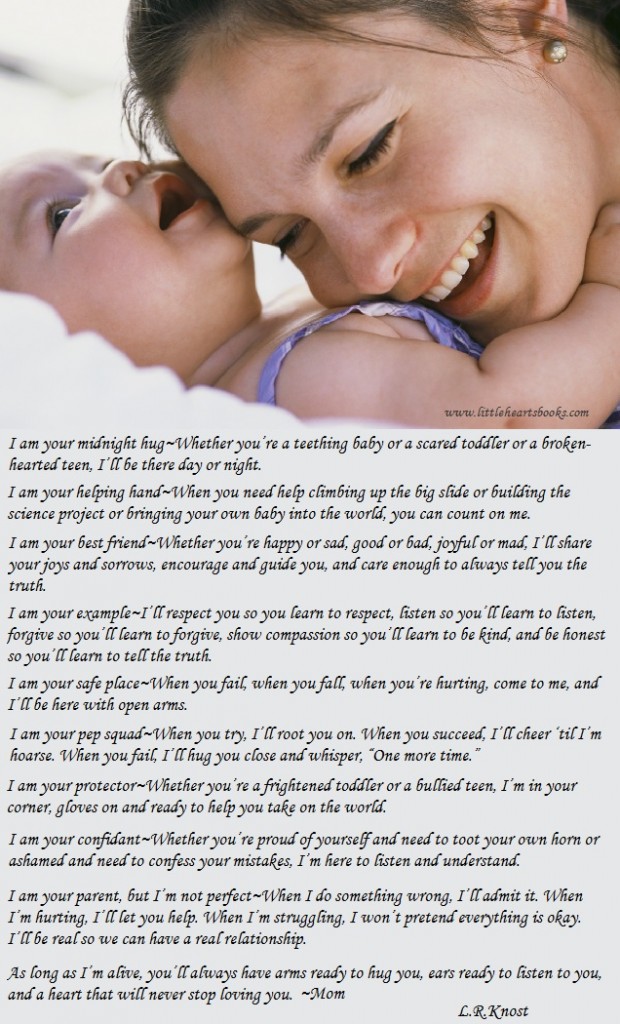
Related posts:
Backtalk is Communication…LISTEN
The Gift of a Strong-Willed Child
Bridge Over Troubled Waters~Parenting a ‘Problem’ Child
Two Thousand Connection Points a Day: Attachment Parenting Beyond Infancy
A Boy, A Girl, and A Baby~Journey to Gentle Parenting
 Award-winnning author, L.R.Knost, is the founder and director of the children's rights advocacy and family consulting group, Little Hearts/Gentle Parenting Resources, and Editor-in-Chief of Holistic Parenting Magazine. Books by L.R.Knost include Whispers Through Time: Communication Through the Ages and Stages of Childhood ; Two Thousand Kisses a Day: Gentle Parenting Through the Ages and Stages ; The Gentle Parent: Positive, Practical, Effective Discipline ; and Jesus, the Gentle Parent: Gentle Christian Parenting the first four books in the Little Hearts Handbook gentle parenting series, and children’s picture books Petey’s Listening Ears and the soon-to-be-released Grumpykins series.
Award-winnning author, L.R.Knost, is the founder and director of the children's rights advocacy and family consulting group, Little Hearts/Gentle Parenting Resources, and Editor-in-Chief of Holistic Parenting Magazine. Books by L.R.Knost include Whispers Through Time: Communication Through the Ages and Stages of Childhood ; Two Thousand Kisses a Day: Gentle Parenting Through the Ages and Stages ; The Gentle Parent: Positive, Practical, Effective Discipline ; and Jesus, the Gentle Parent: Gentle Christian Parenting the first four books in the Little Hearts Handbook gentle parenting series, and children’s picture books Petey’s Listening Ears and the soon-to-be-released Grumpykins series.

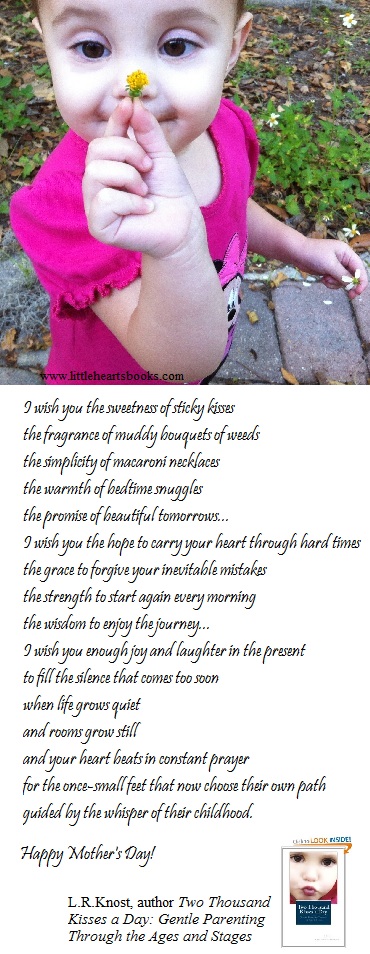


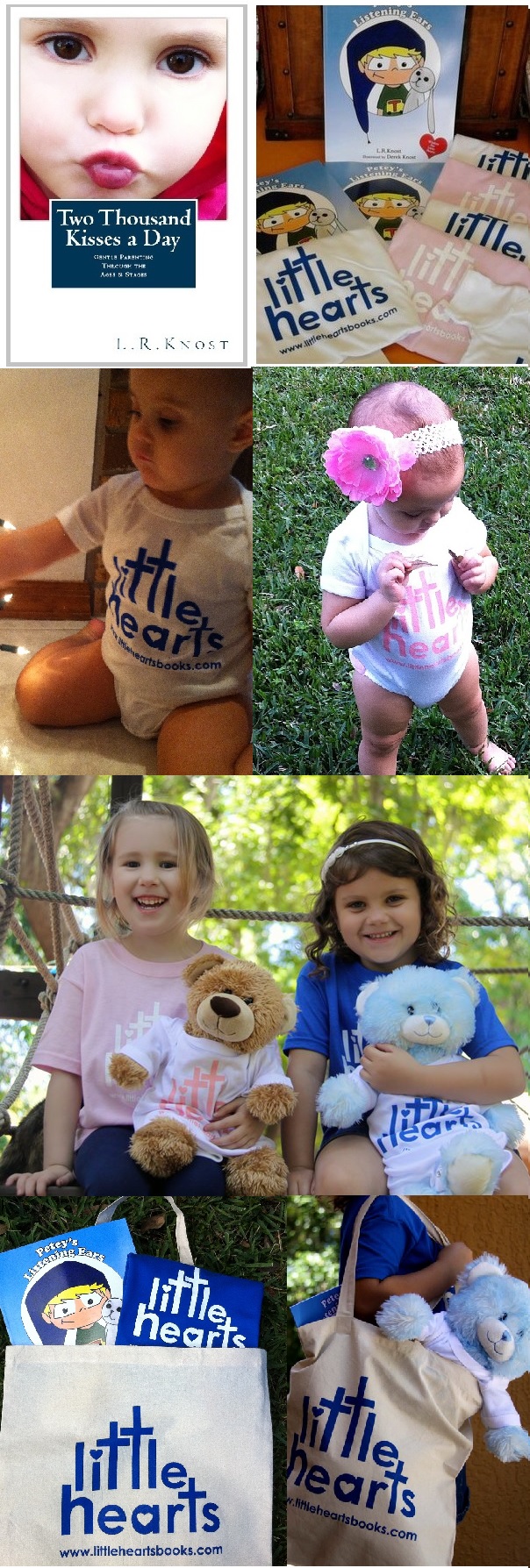
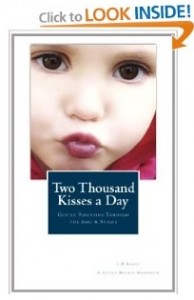
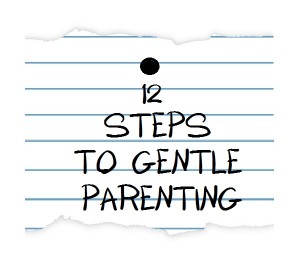 It’s been said that it takes twenty-one days to make or break a habit and that change comes easiest and lasts longest when it’s undertaken in small, bite-sized chunks. Those same principles apply when trying to transform your parenting, as well. Simply resolving on January 1st that, from that day forward, you are going to be a gentle parent and trying to change everything all at once is just setting yourself up for disappointment, frustration, and, more than likely, failure followed by that age-old enemy of peace…mommy guilt.
It’s been said that it takes twenty-one days to make or break a habit and that change comes easiest and lasts longest when it’s undertaken in small, bite-sized chunks. Those same principles apply when trying to transform your parenting, as well. Simply resolving on January 1st that, from that day forward, you are going to be a gentle parent and trying to change everything all at once is just setting yourself up for disappointment, frustration, and, more than likely, failure followed by that age-old enemy of peace…mommy guilt.